Mick Namarari Tjapaltjarri Artworks
The most iconic and valuable painting by renowned Pintupi artist Mick Namarari Tjapaltjarri, Untitled (Artist’s Grandmother’s Country), was painted in 1990 and sold for AUD $480,000 in 2022, confirming his enduring significance in the Aboriginal art market. This record-breaking sale is not an isolated event; large-scale Namarari paintings from the 1990s consistently achieve prices exceeding $100,000, reflecting strong demand for Western Desert art. Widely celebrated as the first great master of Western Desert minimalism, Namarari began refining his visual language with Wallaby Dreaming (1982), now held by the Art Gallery of South Australia. His style evolved away from traditional iconography toward ethereal fields of intricately applied dots, capturing ancestral narratives through minimalist precision. By the late 1980s, Namarari had become a pivotal figure among the founding Papunya Tula artists, and his distinctive aesthetic caught the eye of influential gallerist Gabrielle Pizzi. Recognizing his artistic innovation, Pizzi championed his work at major international art fairs, positioning Namarari as a leading figure in the global contemporary Indigenous art scene. His groundbreaking dot paintings not only represent a deep spiritual connection to country—especially sacred sites like Marnpi and Nyunmanu—but also embody a refined abstraction that set the benchmark for desert minimalism. Today, Mick Namarari’s artworks are highly sought-after by collectors and institutions alike, symbolizing the global recognition of Aboriginal art as both culturally significant and aesthetically cutting-edge.
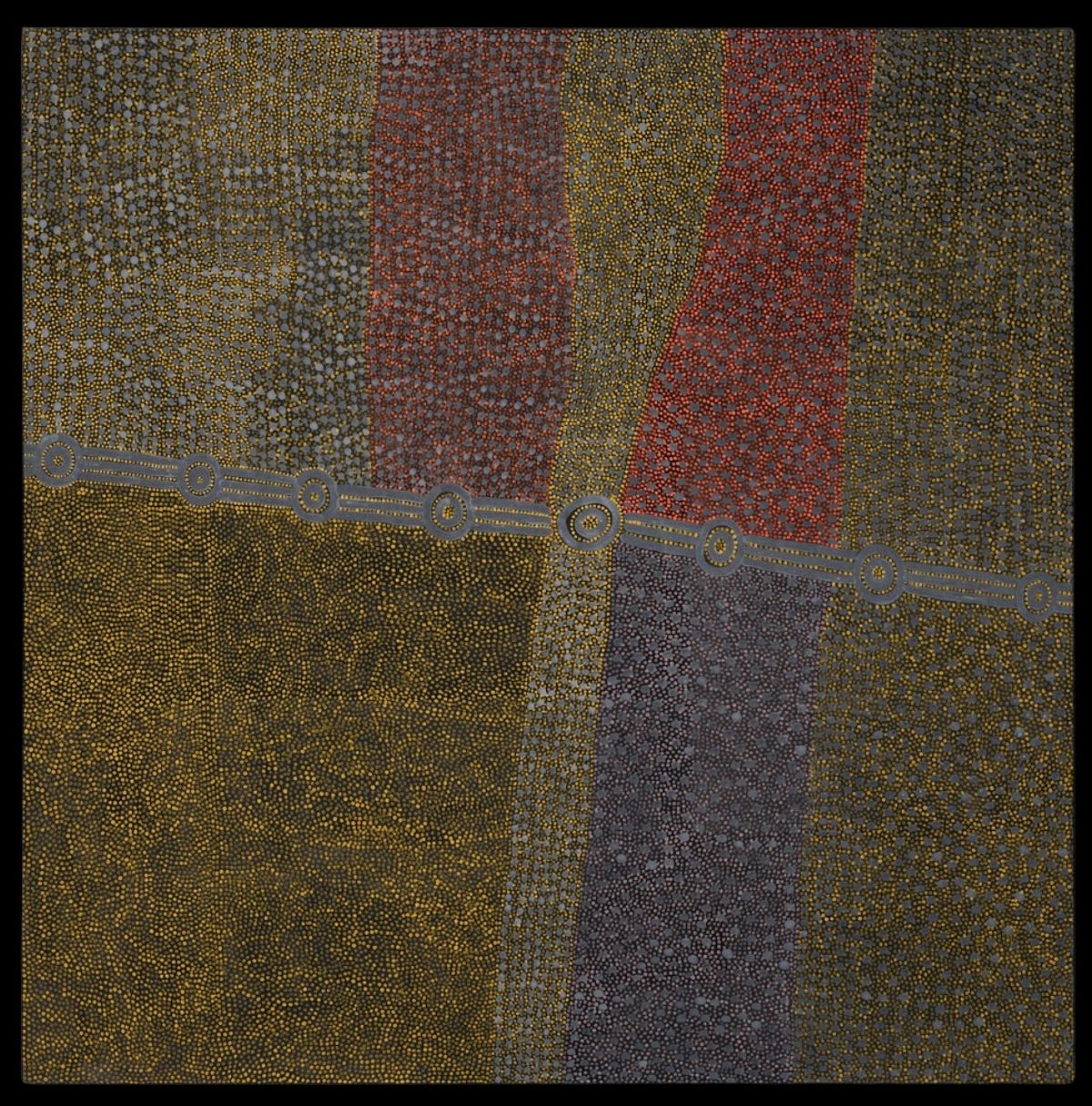
I specialize in the private treaty sale of early and significant artworks by Mick Namarari Tjapaltjarri. If you have an example that you wish to have appraised please feel free to send me images and dimensions.
The Beginnings of Western Desert Art (1971)
Mick Namarari Tjapaltjarri was a pioneering figure in the Western Desert art movement, beginning his painting career in 1971 as one of the original Papunya Tula artists. His early works were painted on composition board with monochrome backgrounds and focused on sacred ceremonial objects such as Tjuringa (bullroarers) and sand mosaics, reflecting traditional Pintupi iconography. Namarari primarily used traditional Aboriginal colours—black, yellow, red, and white—but was also one of the first to experiment with colour blending, creating pinks and oranges. This early innovation marked him as a forward-thinking artist from the outset. These foundational works set the stage for what would become a deeply influential and evolving body of work that blended ancestral knowledge with formal experimentation.
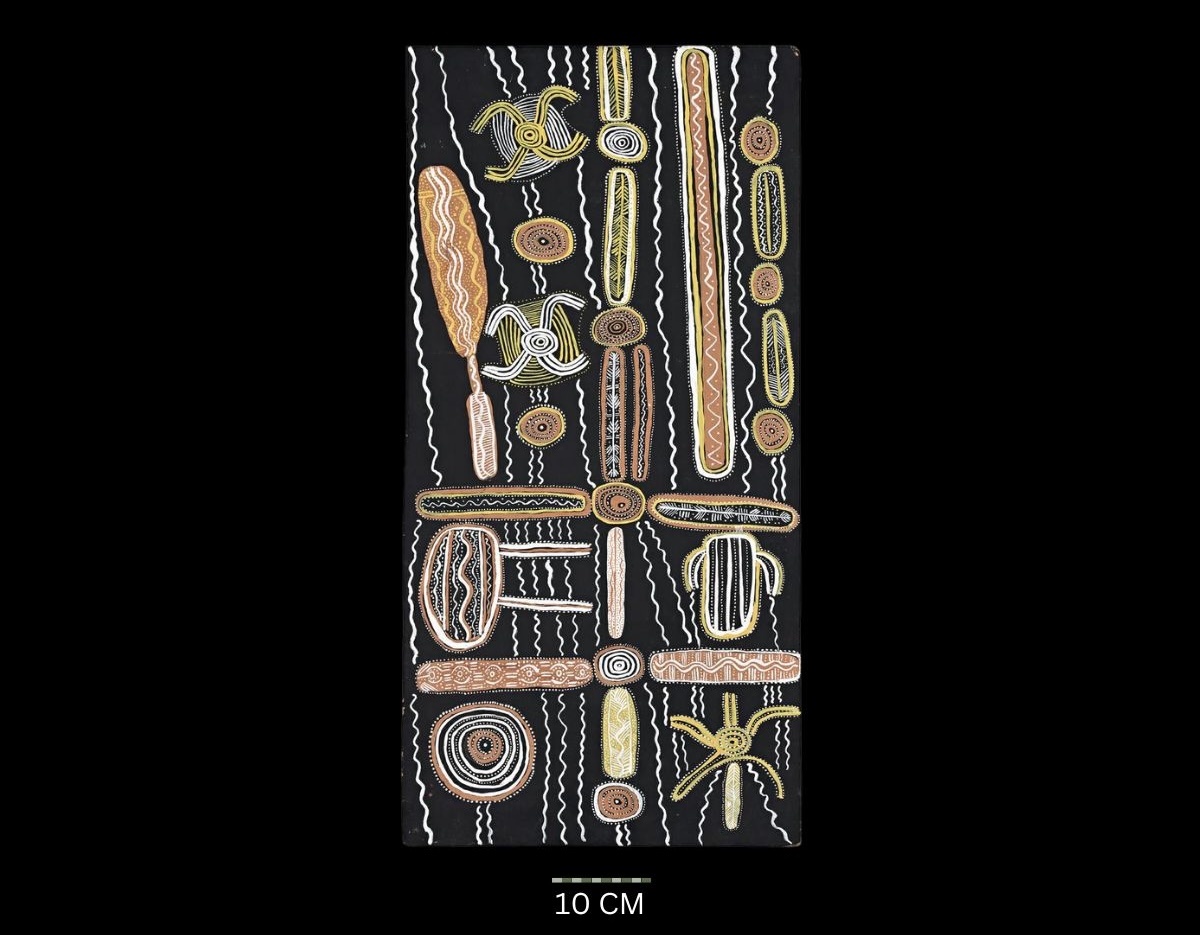
Women’s Story, 1971
Synthetic polymer powder paint on composition board, inscribed verso, Stuart Art Centre consignment no. 8018, number 75 and the remnants of an old paper label,
81 x 41 cm
UNSOLD
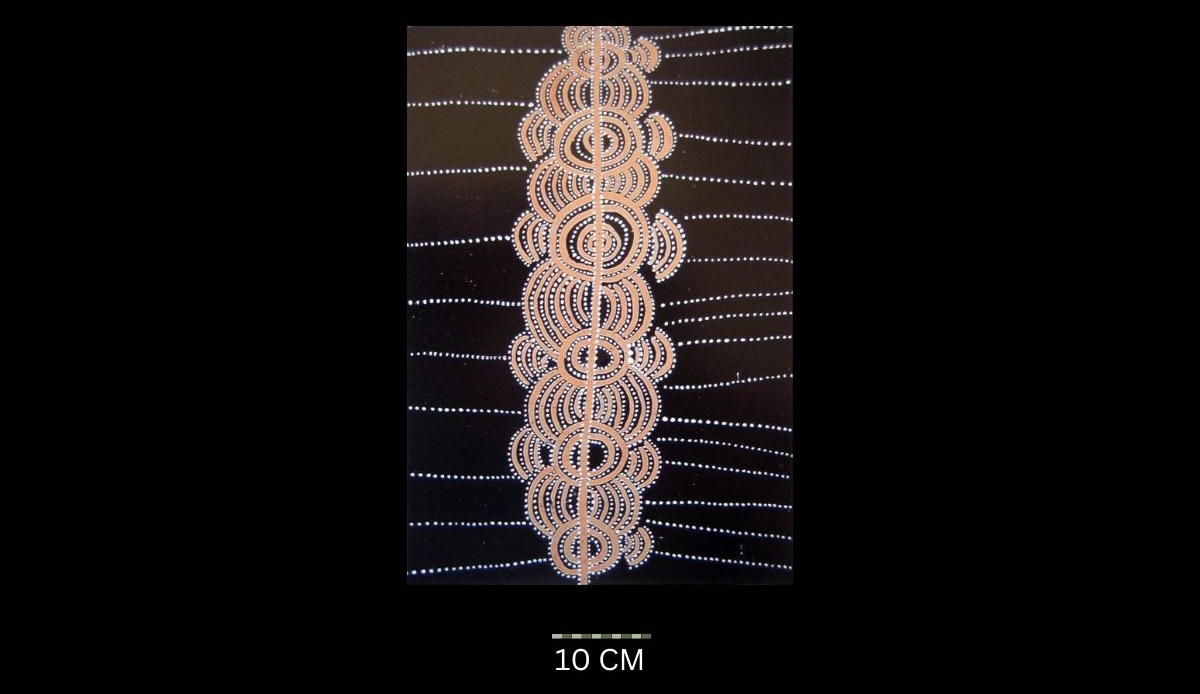
Bush Tucker Story 1971-72
Synthetic polymer/powder paint on composition board, bears Stuart Art Centre label (cat. no. 100-7) on the reverse with artist’s name and title,
51.5 x 36 cm
Hammerprice: A$35,000
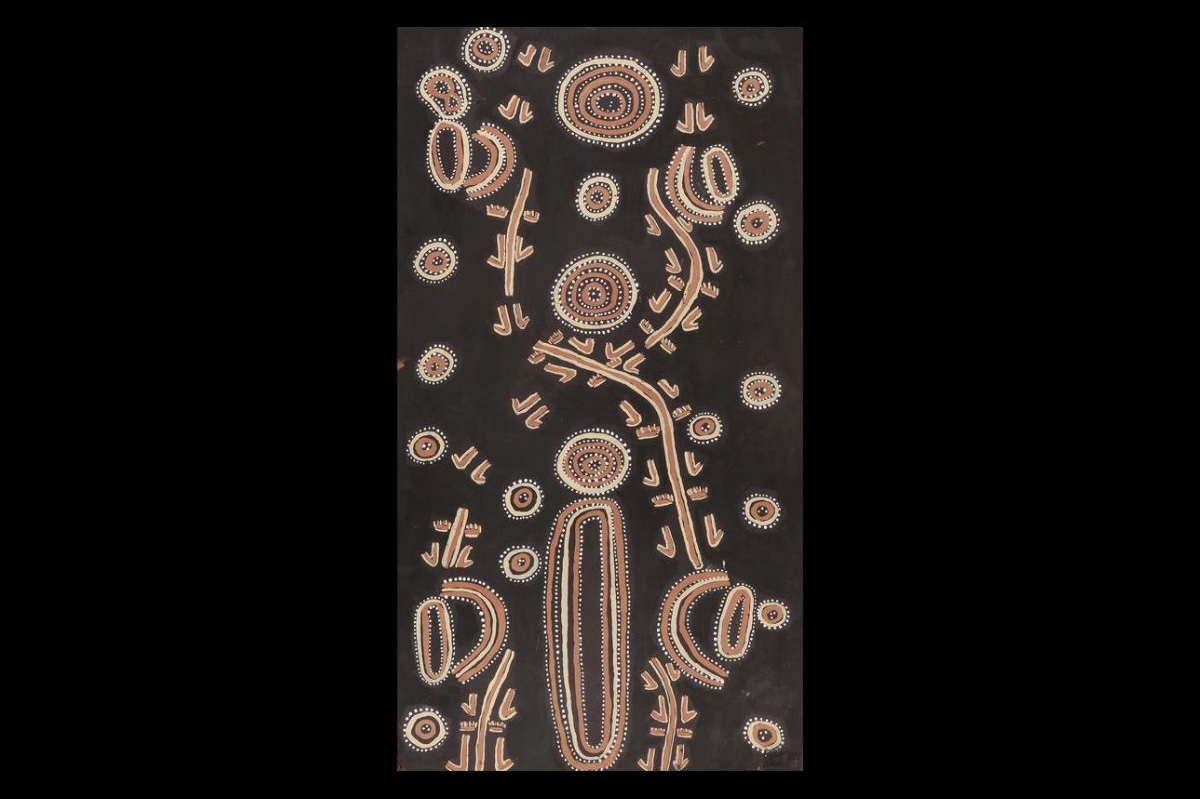
Kangaroo Dreaming with One Cave, Waterhole and Two Playful Kangaroo Men
No date recorded but likely 1971-1972
No size recorded
UNSOLD
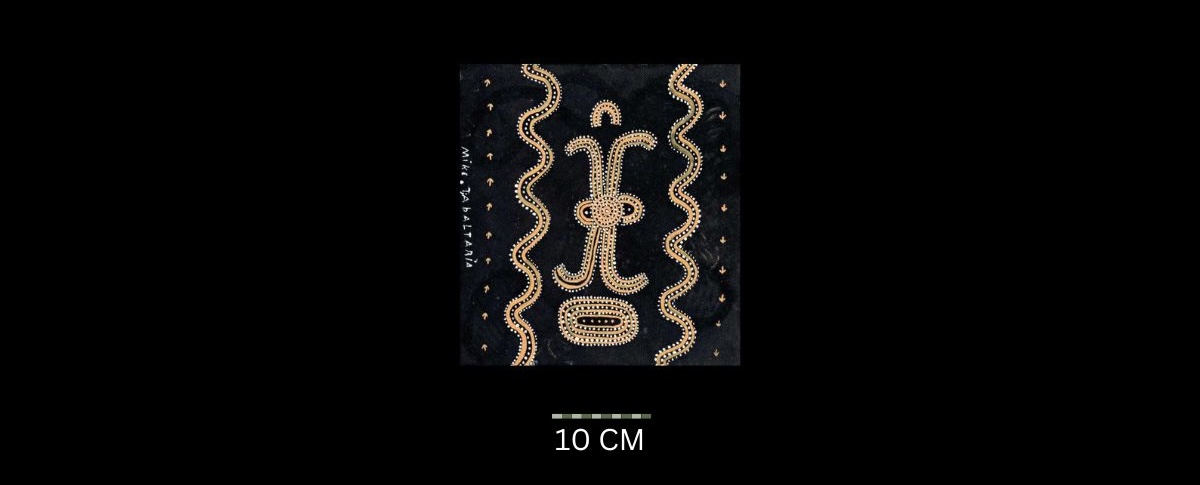
Wallaby Men’s Emu Water Story 1971
Synthetic polymer paint on composition board, inscribed ‘Mike Tabaltaria’ (sic) along lower edge,
28 x 28.5 cm
UNSOLD
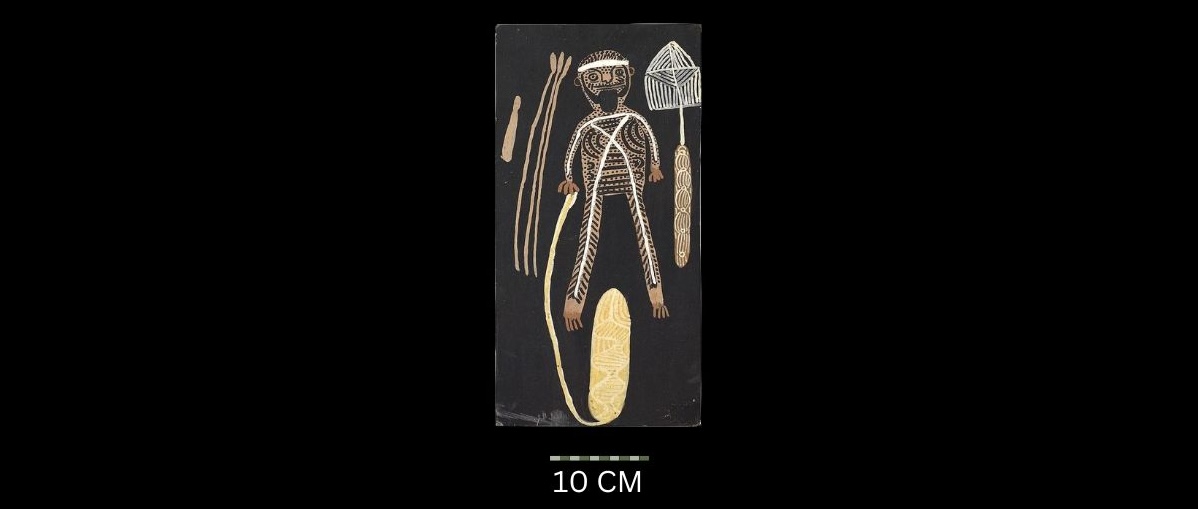
Ceremonial Medicine Story (1971)
Natural earth pigments and bondcrete on composition board,
40 x 20 cm
Hammerprice: A$46,000
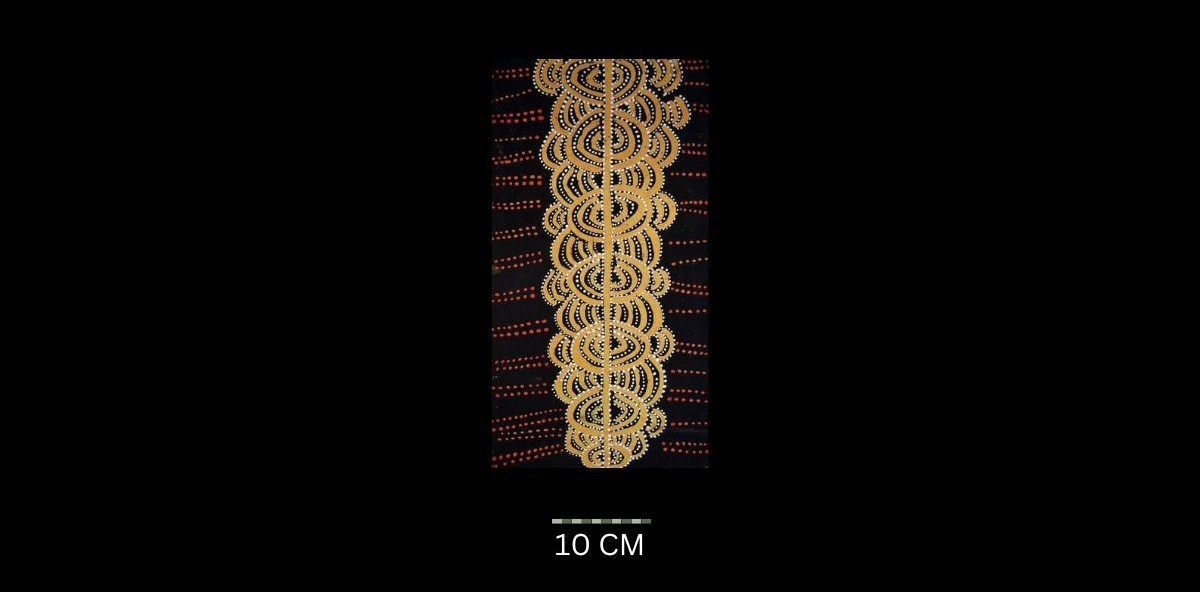
Wild Potato Story 1971
Synthetic polymer paint on composition board, bears Stuart Art Centre consignment number 6004 on the reverse,
40 x 21 cm
UNSOLD
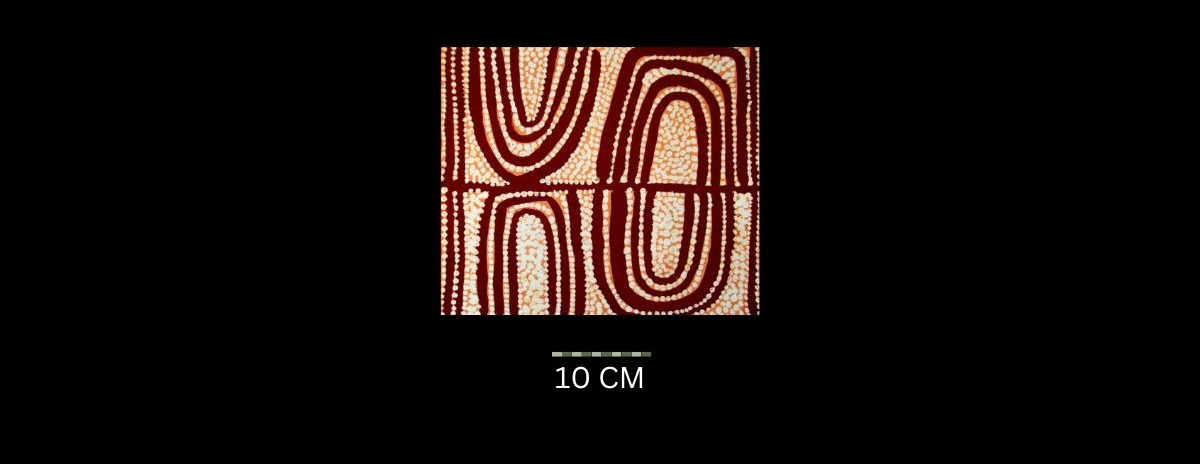
Woman Carrying a Nulla Nulla 1971
Synthetic polymer paint and PVA on composition board, bears artist’s name and title on label on the reverse,
22.5 x 26 cm
Hammerprice: A$12,000
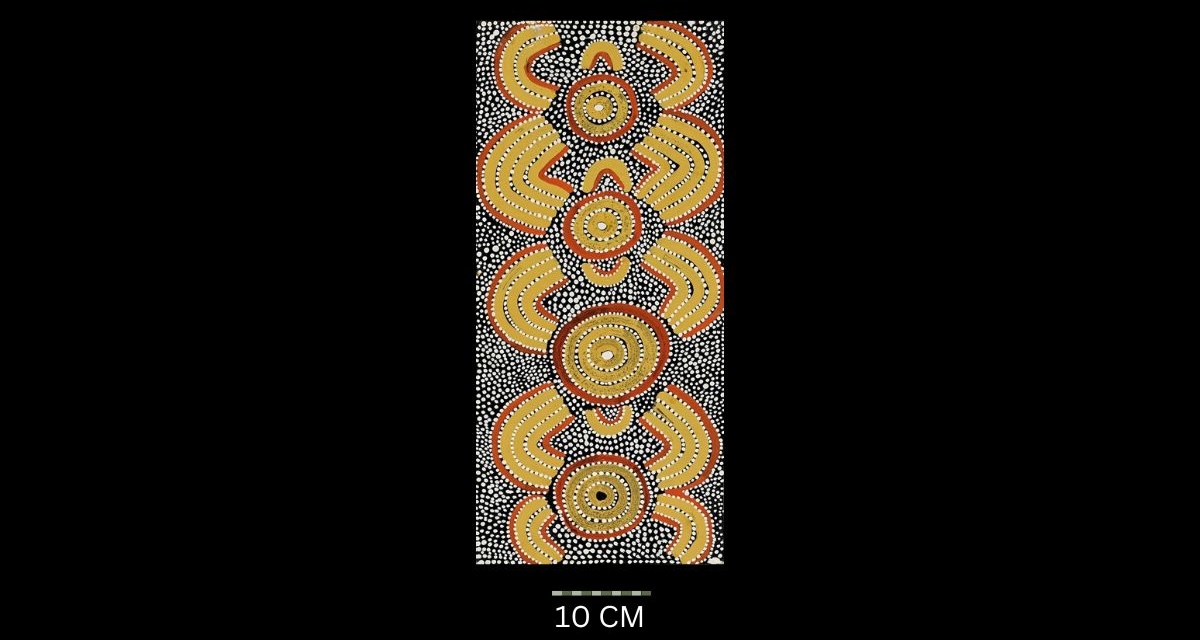
Kangaroo Dreaming (1971)
Synthetic polymer paint on composition board,
54.5 x 25.4 cm
Hammerprice: A$40,000
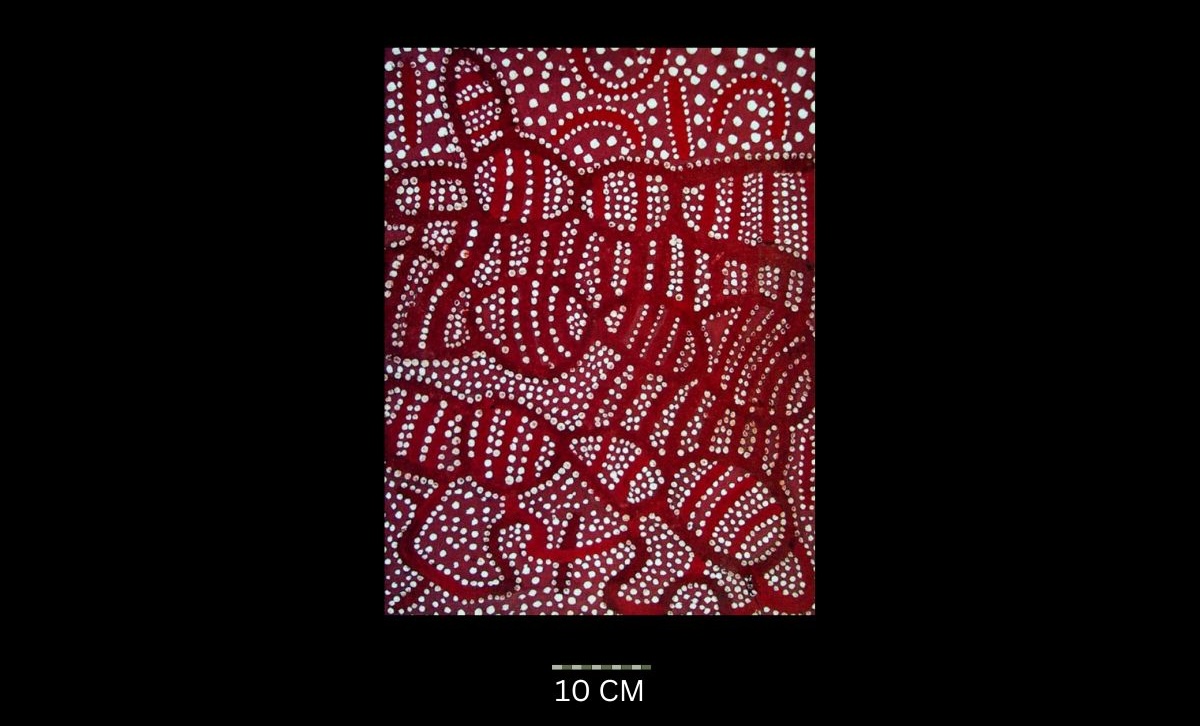
Untitled (Bush Tucker Dreaming) 1971
Synthetic polymer paint and PVA on composition board,
58 x 44 cm
UNSOLD
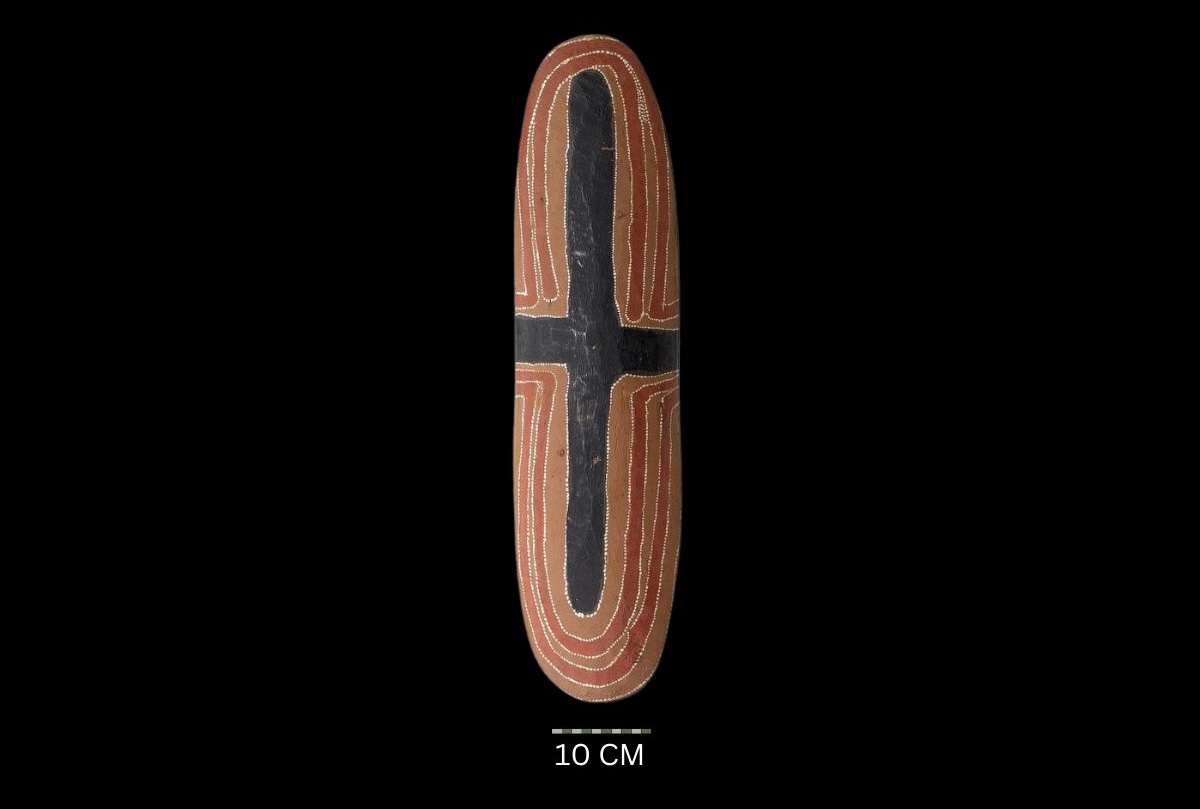
Untitled (Kutitji) (1971)
Natural earth pigments and synthetic polymer paint on carved softwood aboriginal shield.
67.5 x 16.7 cm
Hammerprice: A$7,500
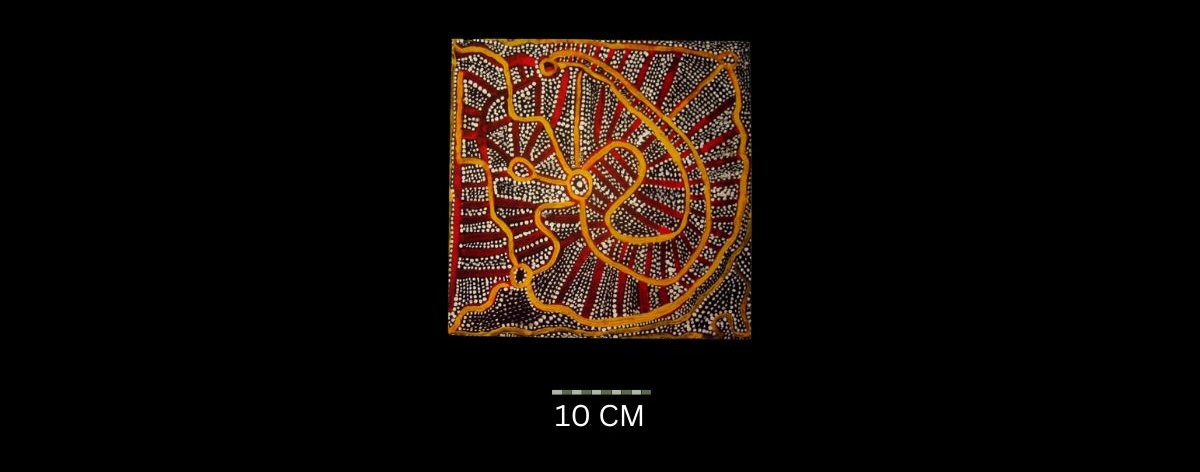
Water Dreaming in the Sandhills 1971
Synthetic polymer powder paint on composition board,
29 x 29 cm
Hammerprice: A$16,000
Early Dot Innovation and Material Use (1971–1972)
By the end of 1971, Mick Namarari began applying white dotting techniques to infill monochrome surfaces, creating new visual depth and rhythm in his paintings. His works from 1971 to 1974 were often created on accessible materials such as plywood or other inexpensive building panels, which were standard for the first generation of Papunya artists. In 1972, his focus began to shift away from strictly depicting ceremonial objects, turning toward the aesthetic and symbolic potential of the dots themselves. Paintings like Bush Tucker Dreaming (1972) demonstrate Namarari’s unique approach—while grounded in traditional form, his work was becoming increasingly abstract. He expanded his palette, experimenting with dot colours, densities, and distribution to form dynamic and visually compelling compositions.
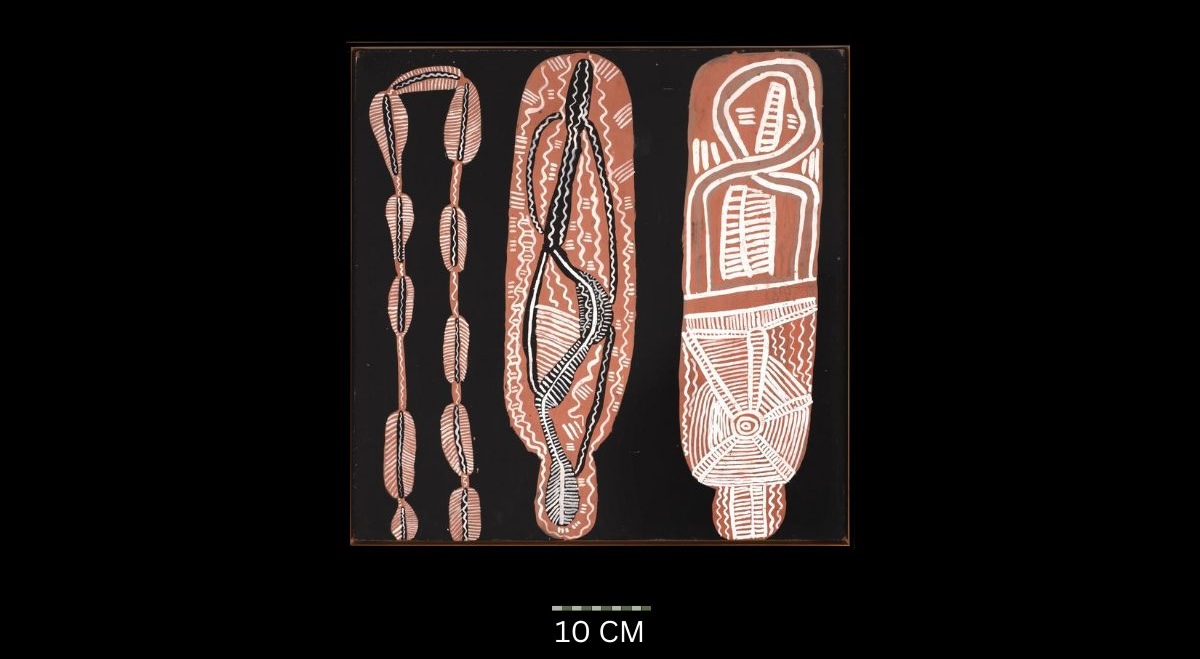
Dingo Ceremony, 1972
Synthetic polymer powder paint on composition board,
50.5 x 50.5 cm
Hammerprice: A$70,000
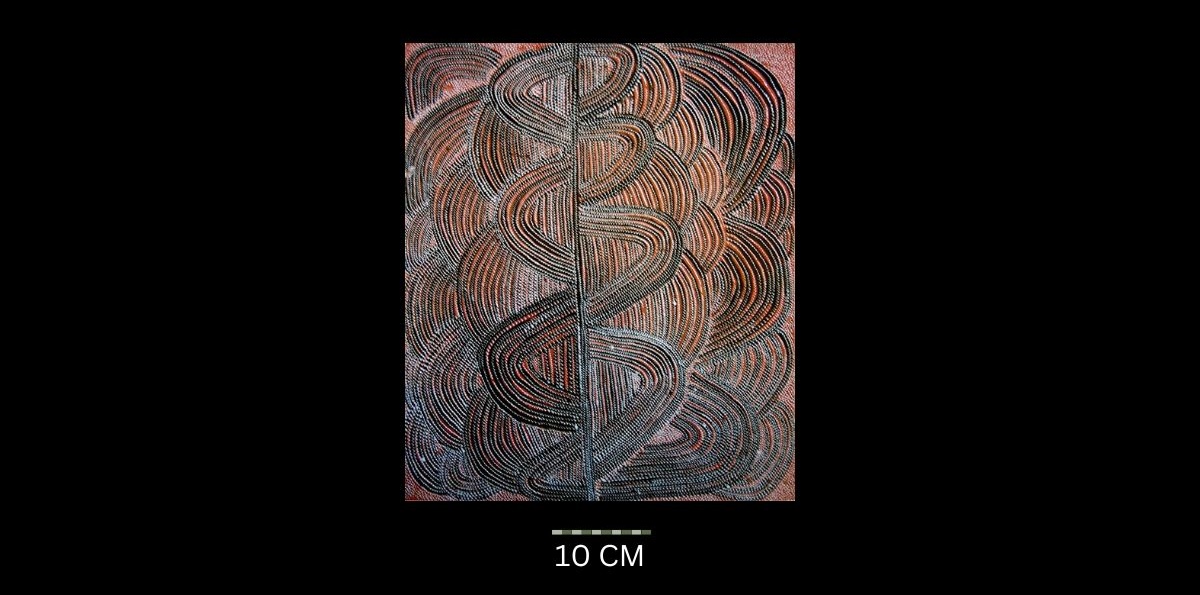
Untitled c. 1972
Synthetic polymer paint on composition board, bears artist’s name ‘Mick Jabaljari’ (sic.) on the reverse,
45 x 37 cm
Hammerprice: A$36,000
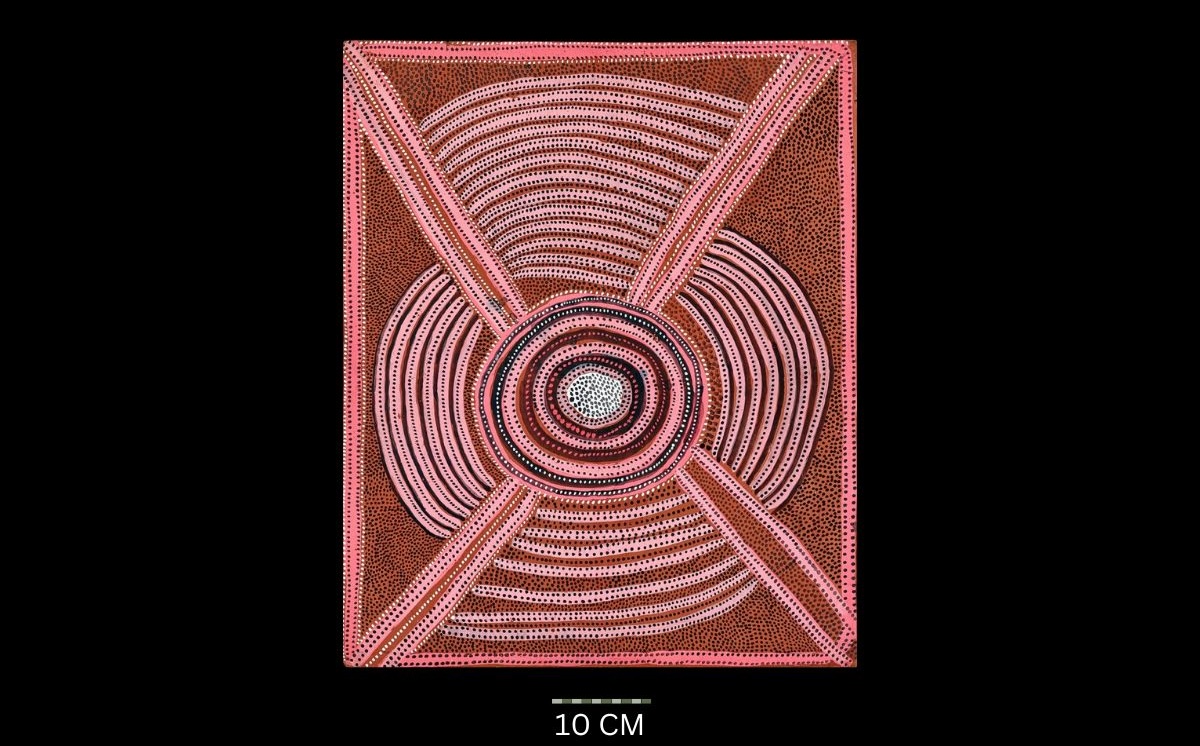
Untitled, 1972
Synthetic powder paint on composition board,
62 x 51 cm
Hammerprice: A$60,000
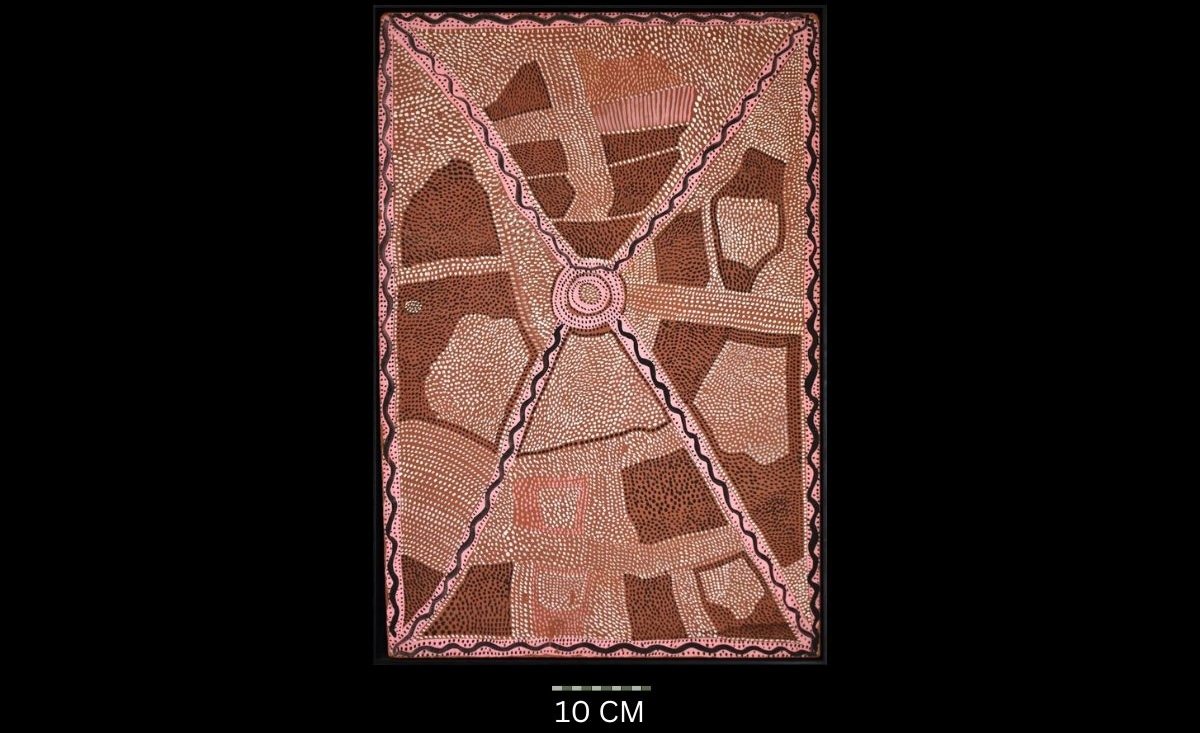
Untitled – Yam Story, 1972
Synthetic polymer paint on board,
65 x 44 cm
Hammerprice: A$80,000
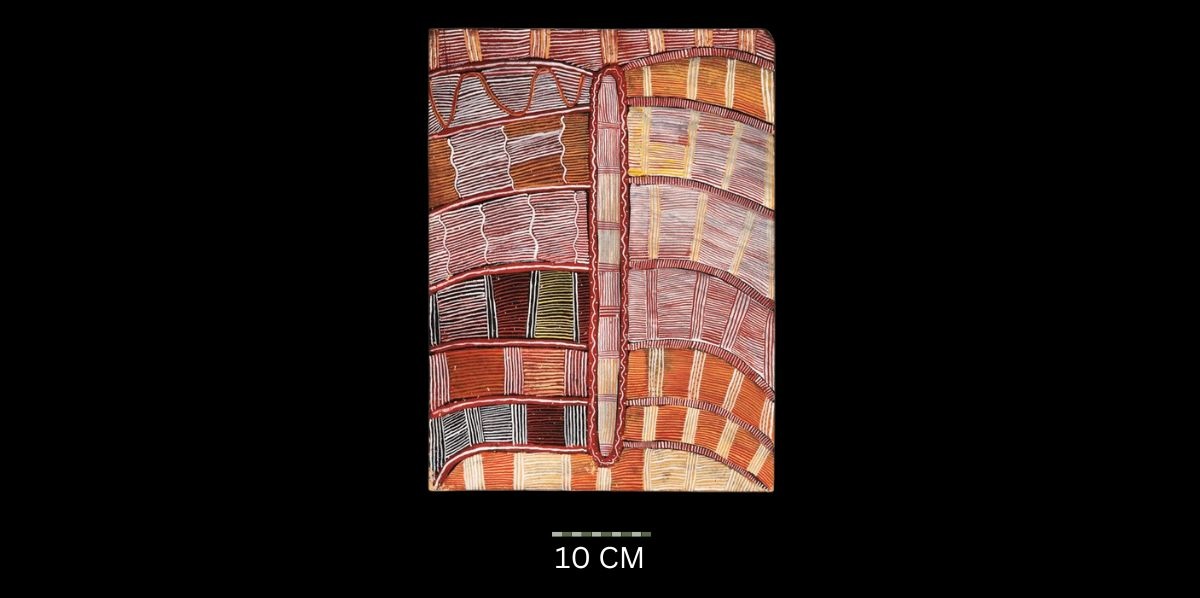
Sandhill Dreaming, Circa 1972
Synthetic polymer paint on board,
46 x 34 cm
Hammerprice: A$65,000
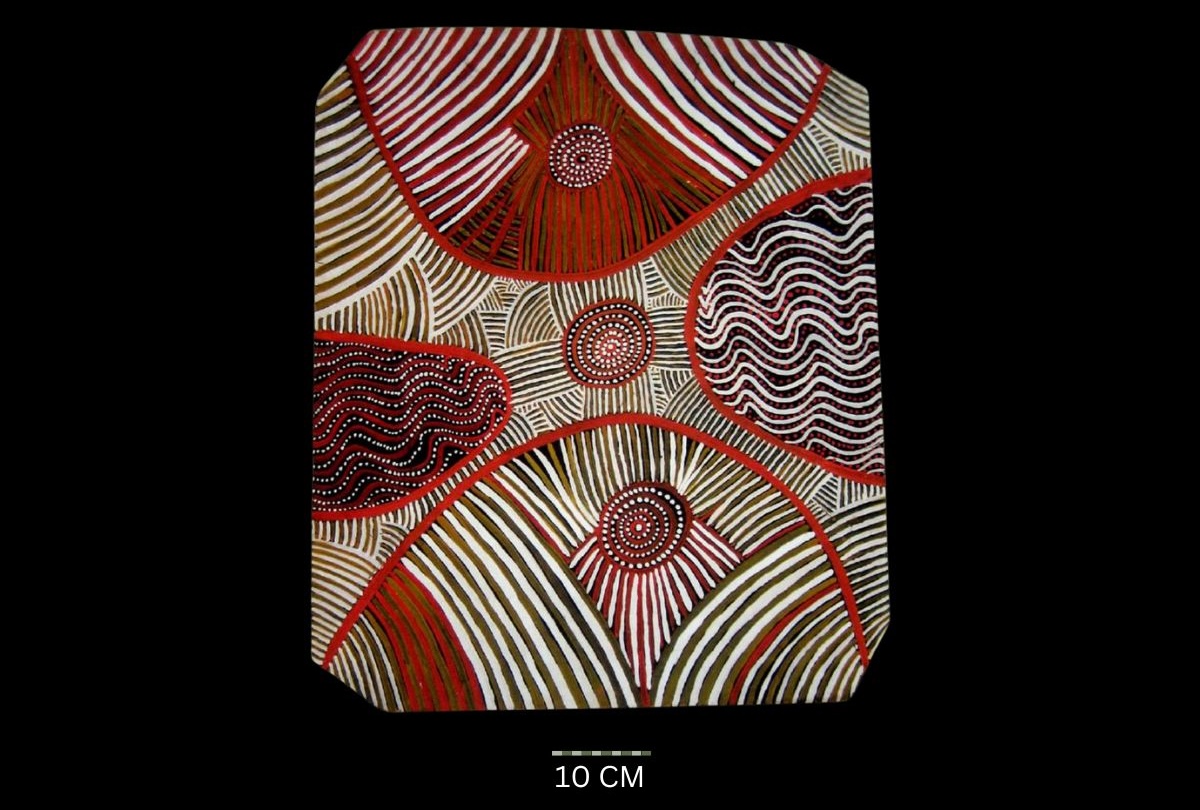
Water Dreaming c. 1972
Also known as ‘Dingo Dreaming’ c1972, synthetic polymer powder paint on board, inscribed verso: Mick Numerari/ PT-30,
69 x 57 cm
Hammerprice: A$60,000
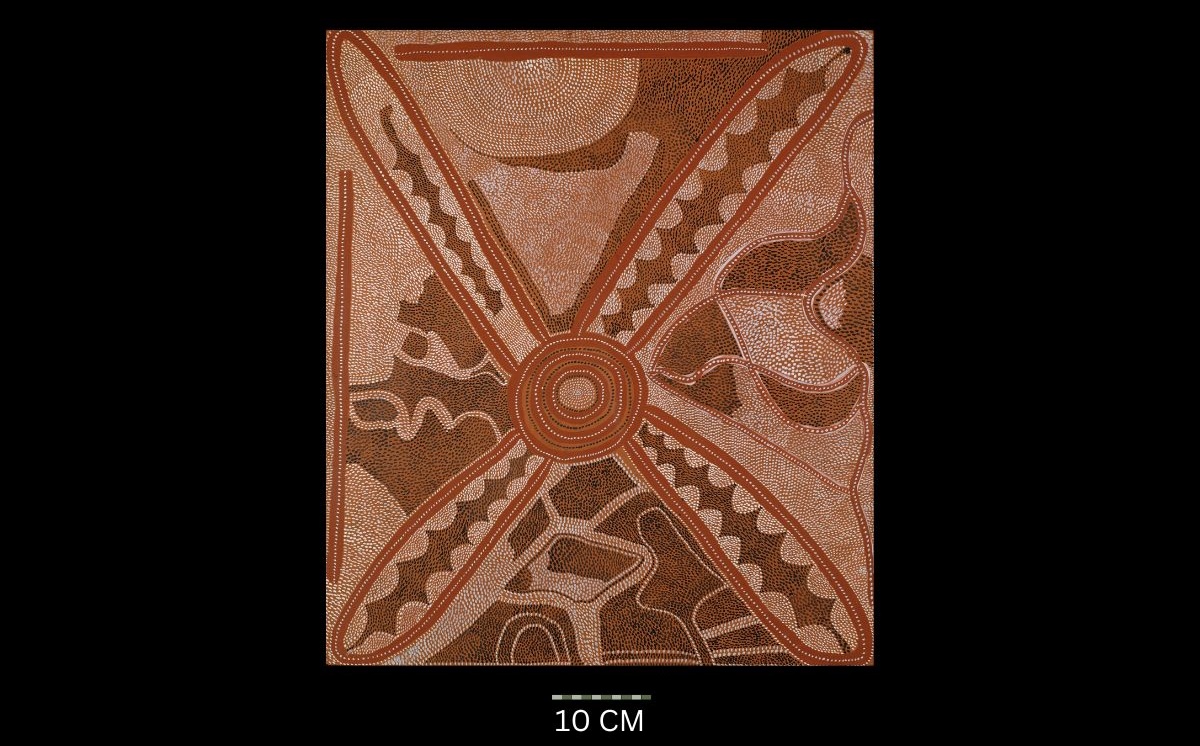
Yam Story 1972
Synthetic polymer powder paint on composition board,
85 x 80 cm
Hammerprice: A$42,000
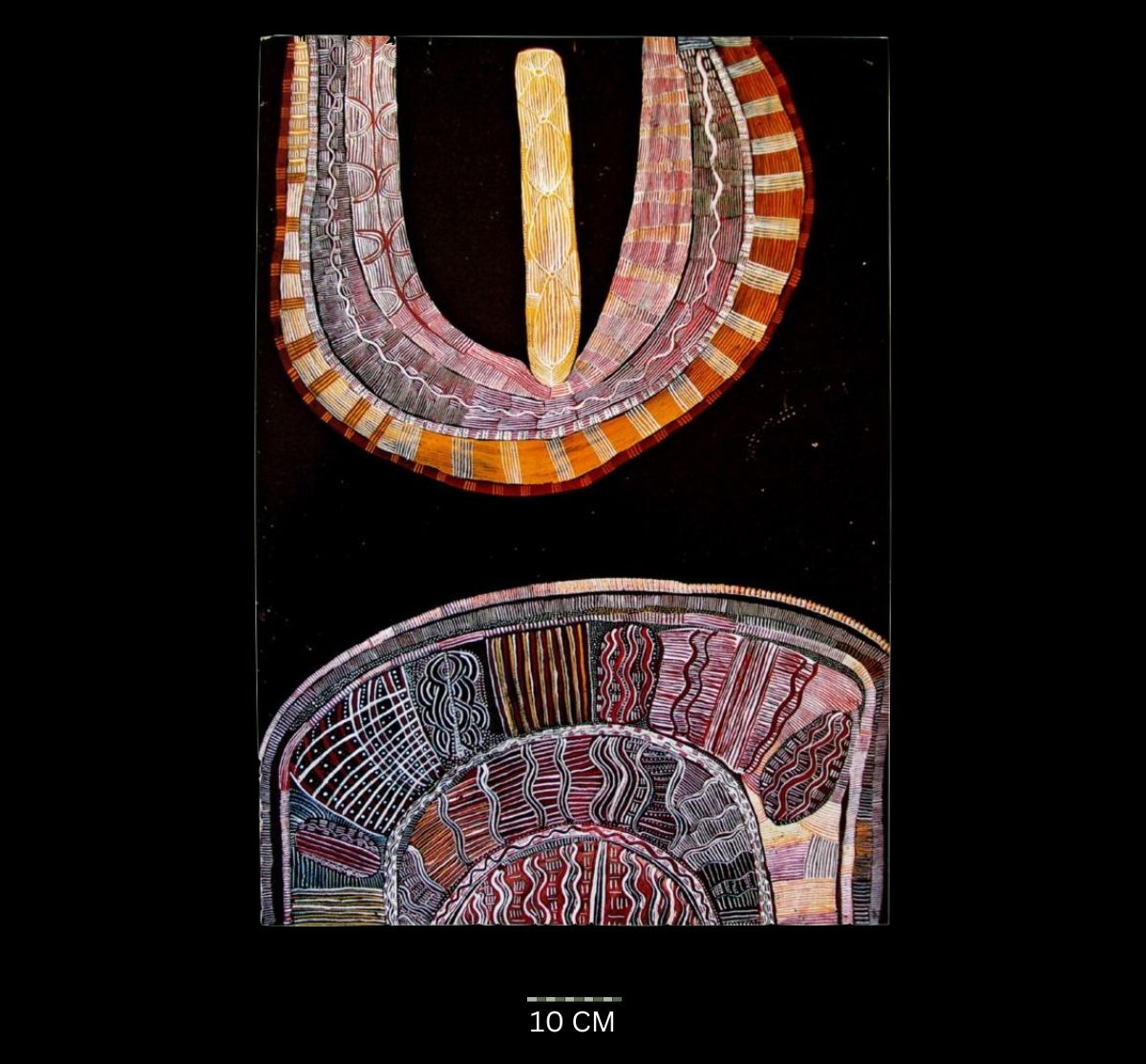
Untitled 1972
Synthetic polymer powder paint on composition board, signed ‘Mick Jabandardi’ (sic) on the reverse,
91 x 64 cm
Hammerprice: A$145,000
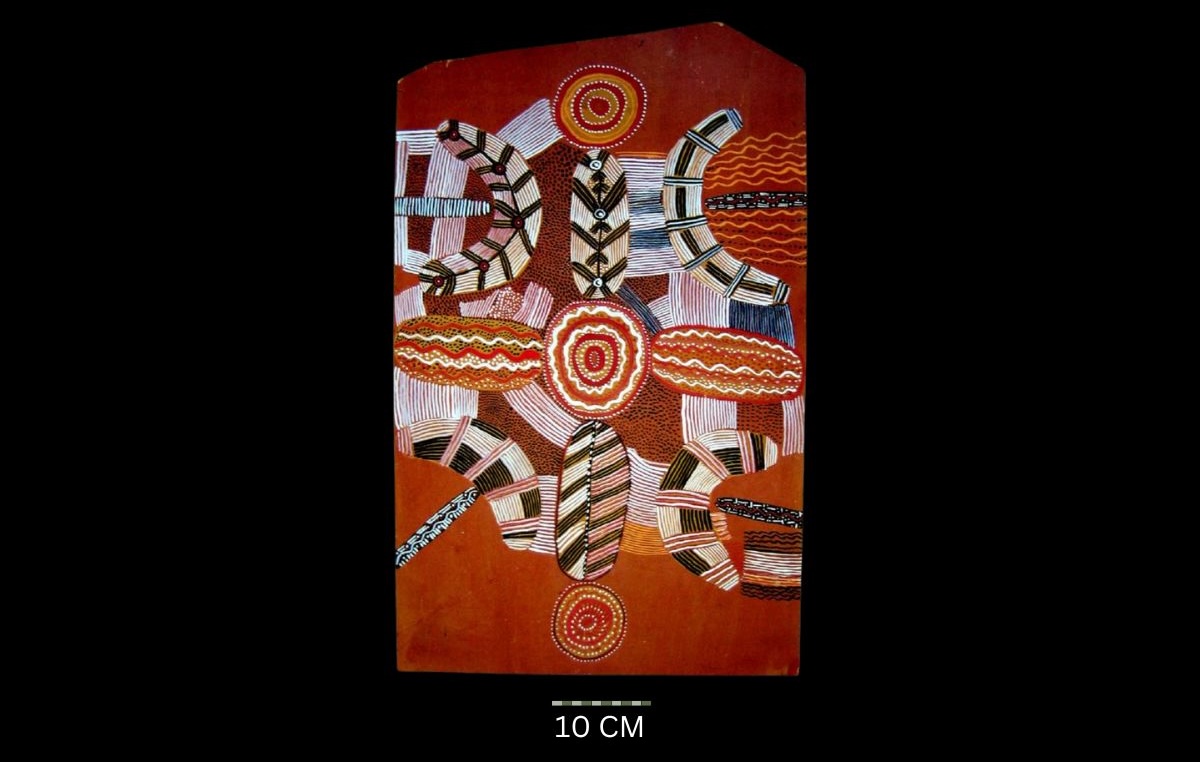
Untitled 1972
Synthetic polymer/powder paint on composition board, bears signed Stuart Art Centre catalogue number 14037 on the reverse,
66 x 41 cm
Hammerprice: A$40,000
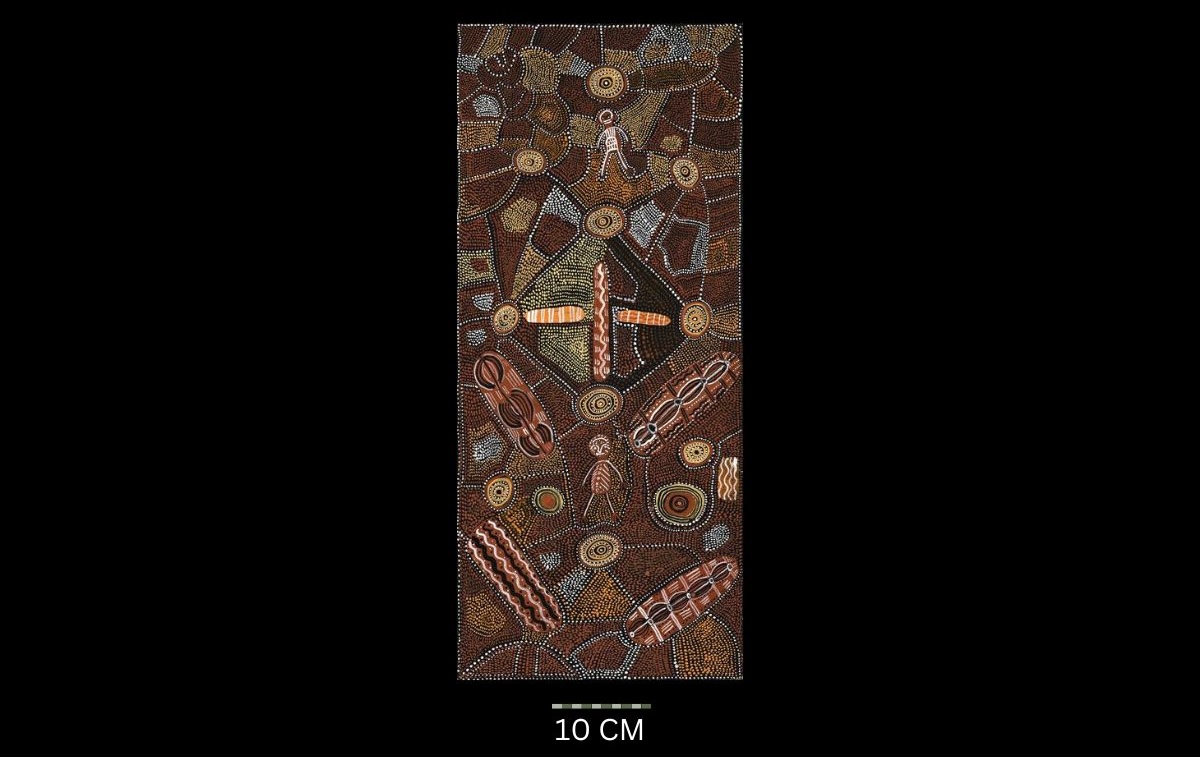
Untitled (Medicine and Bush Tucker), 1972
Synthetic polymer powder paint on composition board, signed verso: mick,
65 x 29 cm
Hammerprice: A$35,000
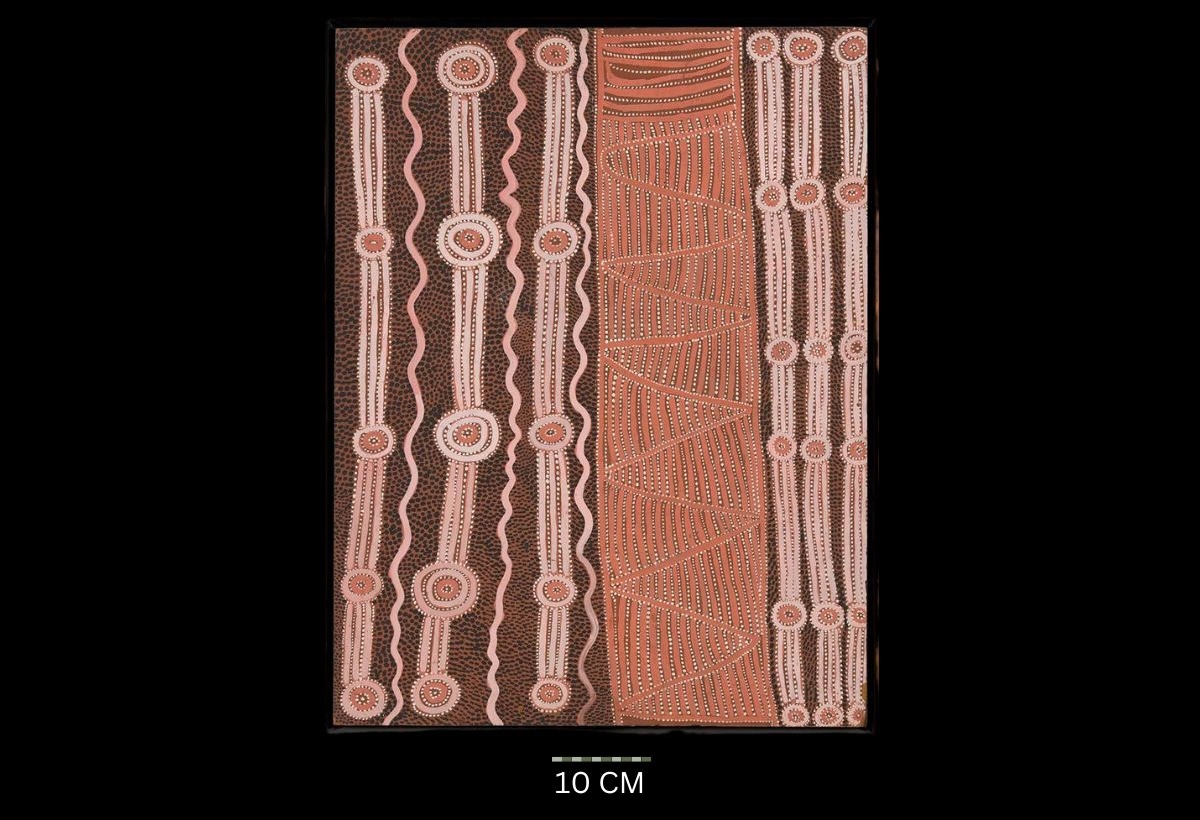
Tingari Cycle Dreaming Journey, 1972
Synthetic polymer powder paint and PVA on composition board, inscribed verso: MICK / MNS3-78,
70 x 42 cm
Hammerprice: A$43,000
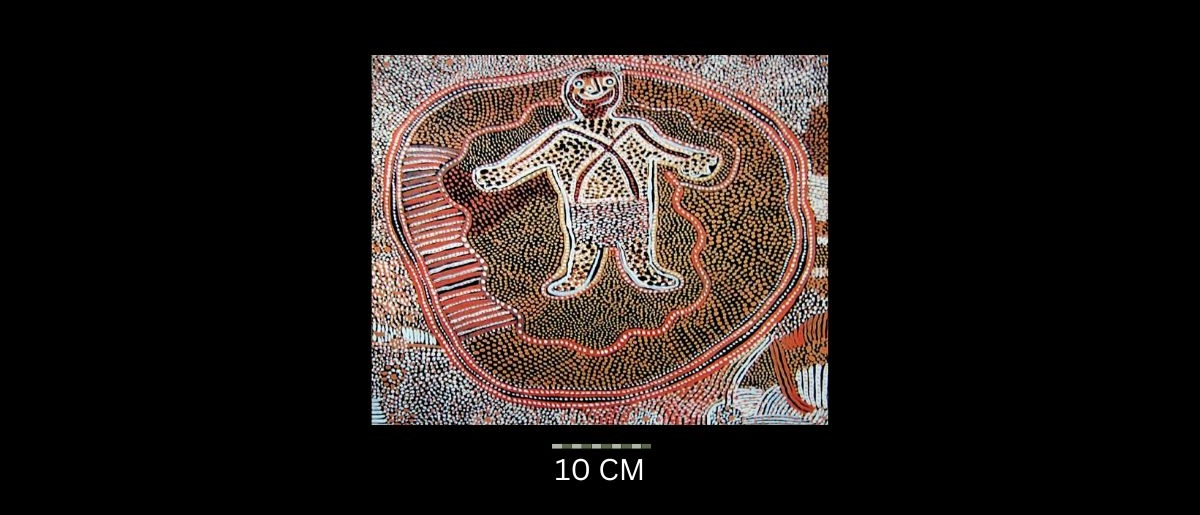
Old Man’s Dreamings, c. 1972
Synthetic polymer powder paint on composition board,
45 x 41 cm
Hammerprice: A$28,000
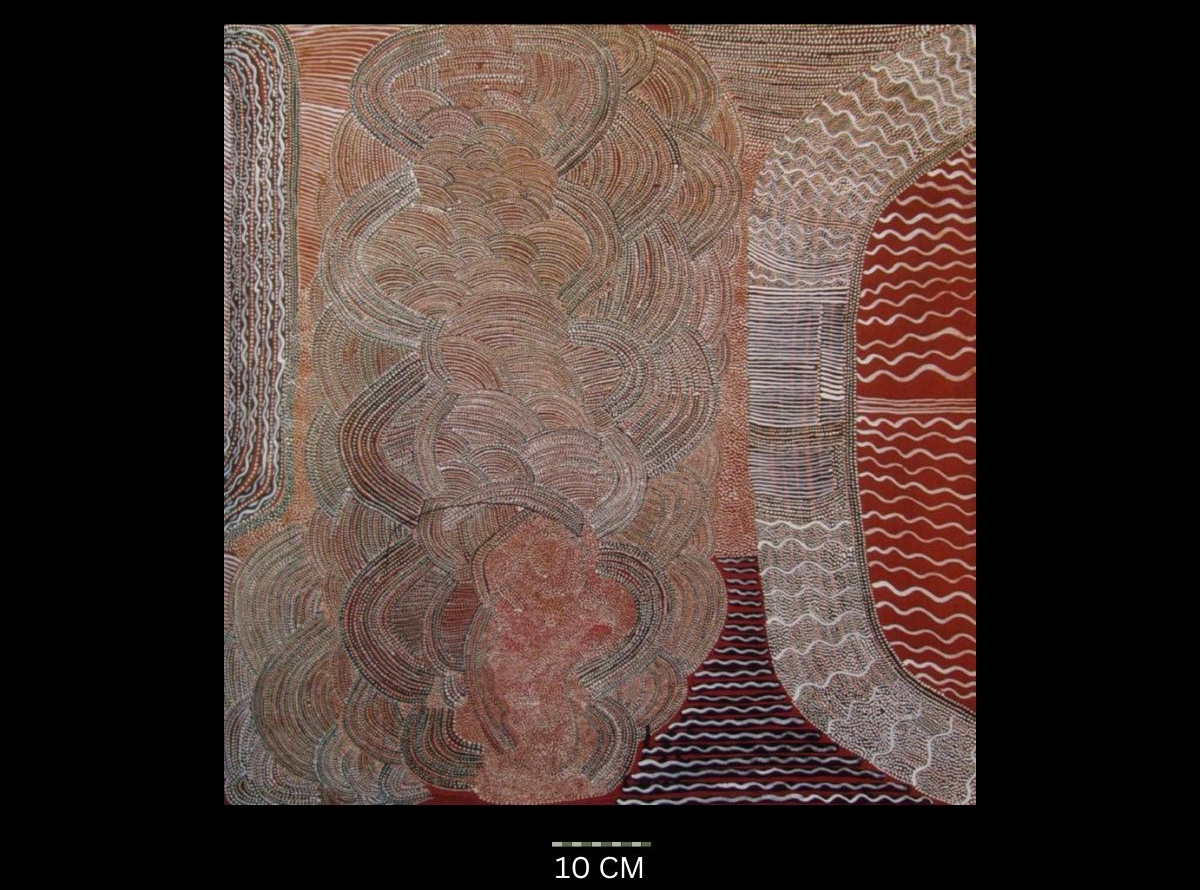
Bush Tucker Story 1972
Ochre and synthetic polymer on board,
78 x 75 cm
Hammerprice: A$30,000
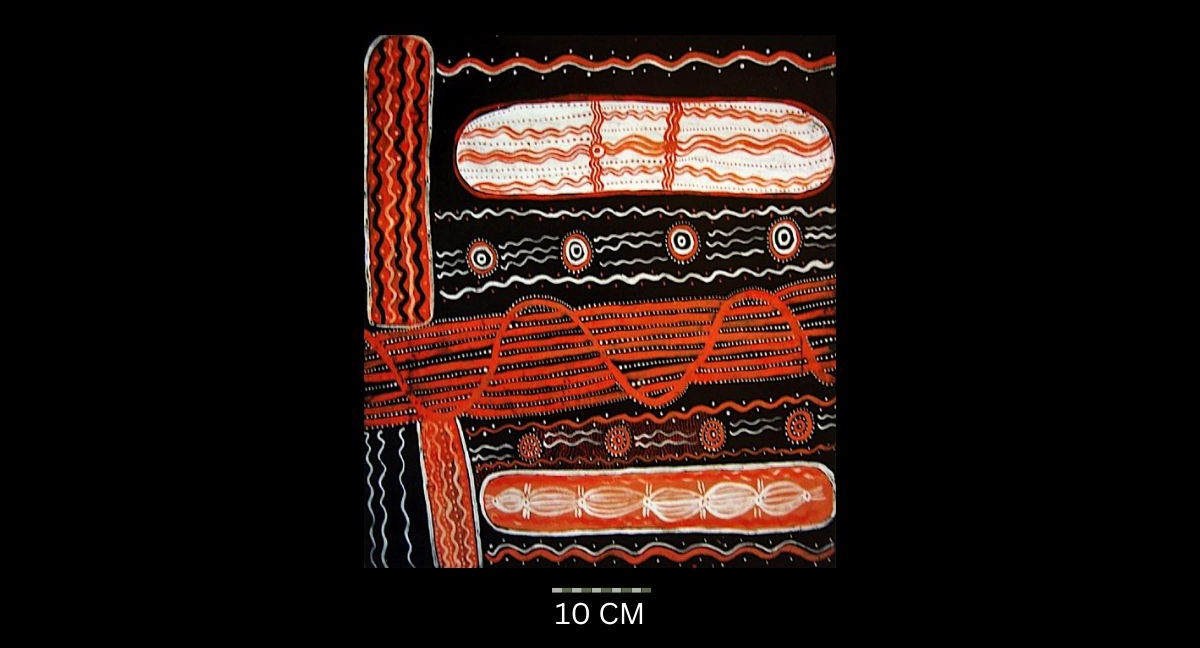
Untitled 1972
Synthetic polymer powder paint on composition board, bears Stuart Art Centre consignment numbers 9009 (struck out) and 9013 on The reverse,
53 x 46 cm
Hammerprice: A$28,000
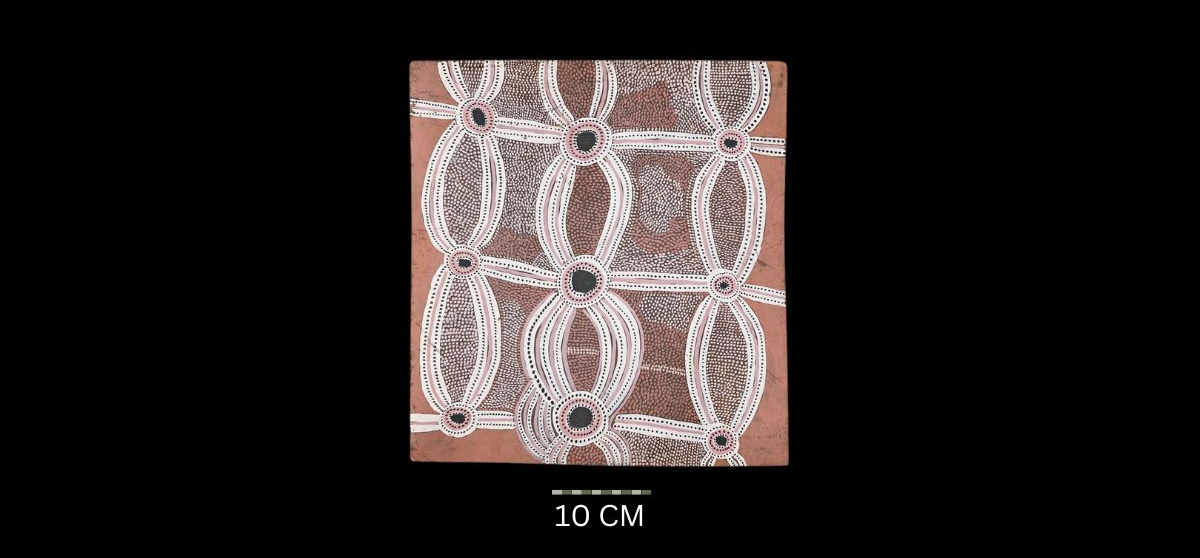
Dingo Puppies (Nyunmanu), 1972
Synthetic polymer powder paint on composition board, inscribed verso, artist’s initials MN and Papunya Tula Artists cat. 19307,
55 x 52 cm
Hammerprice: A$28,000
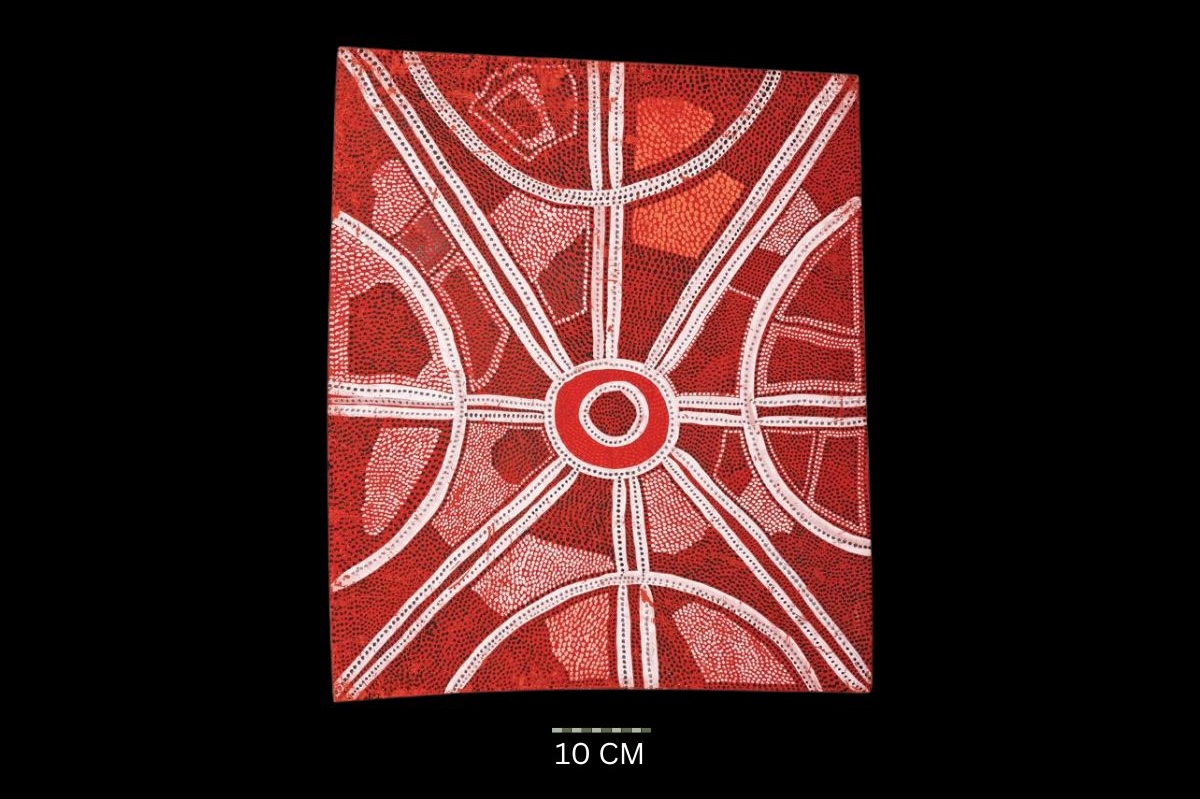
Travelling Story on the Sandhills, Circa 1972
Synthetic polymer paint on board,
66 x 55 cm
Hammerprice: A$26,000
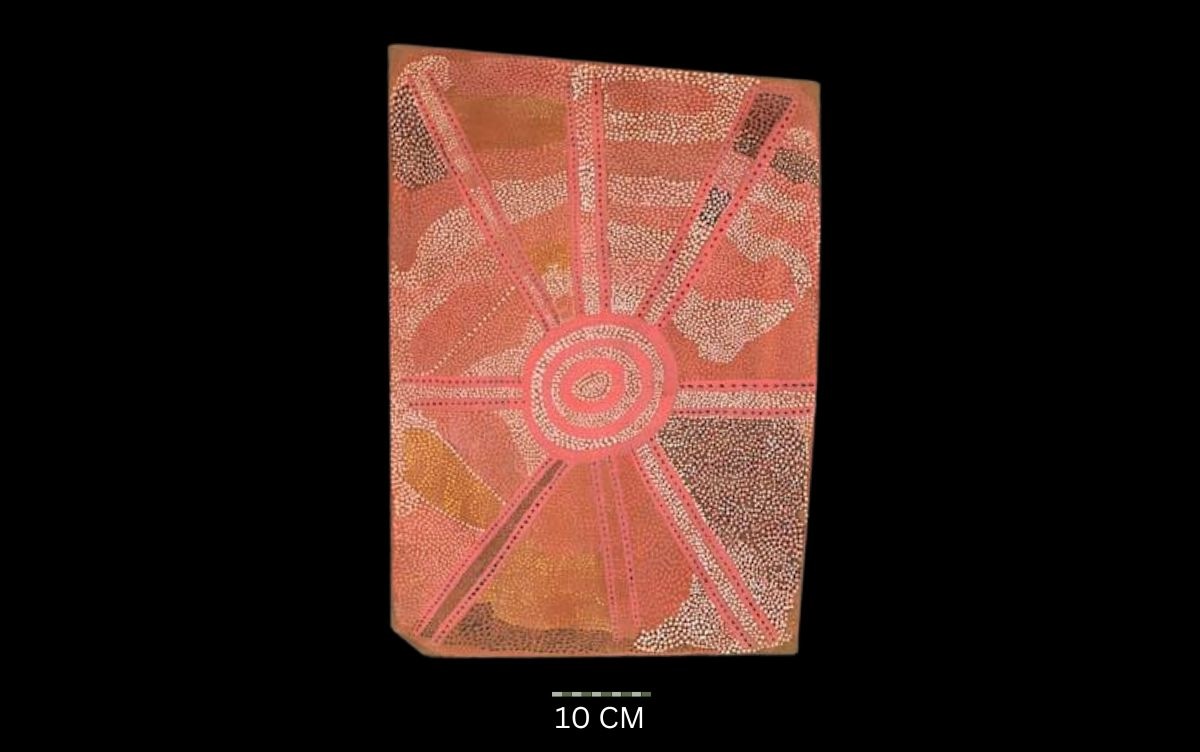
Wind Spirit 1972
Synthetic polymer paint on composition board,
61 x 45 cm
Hammerprice: A$18,000
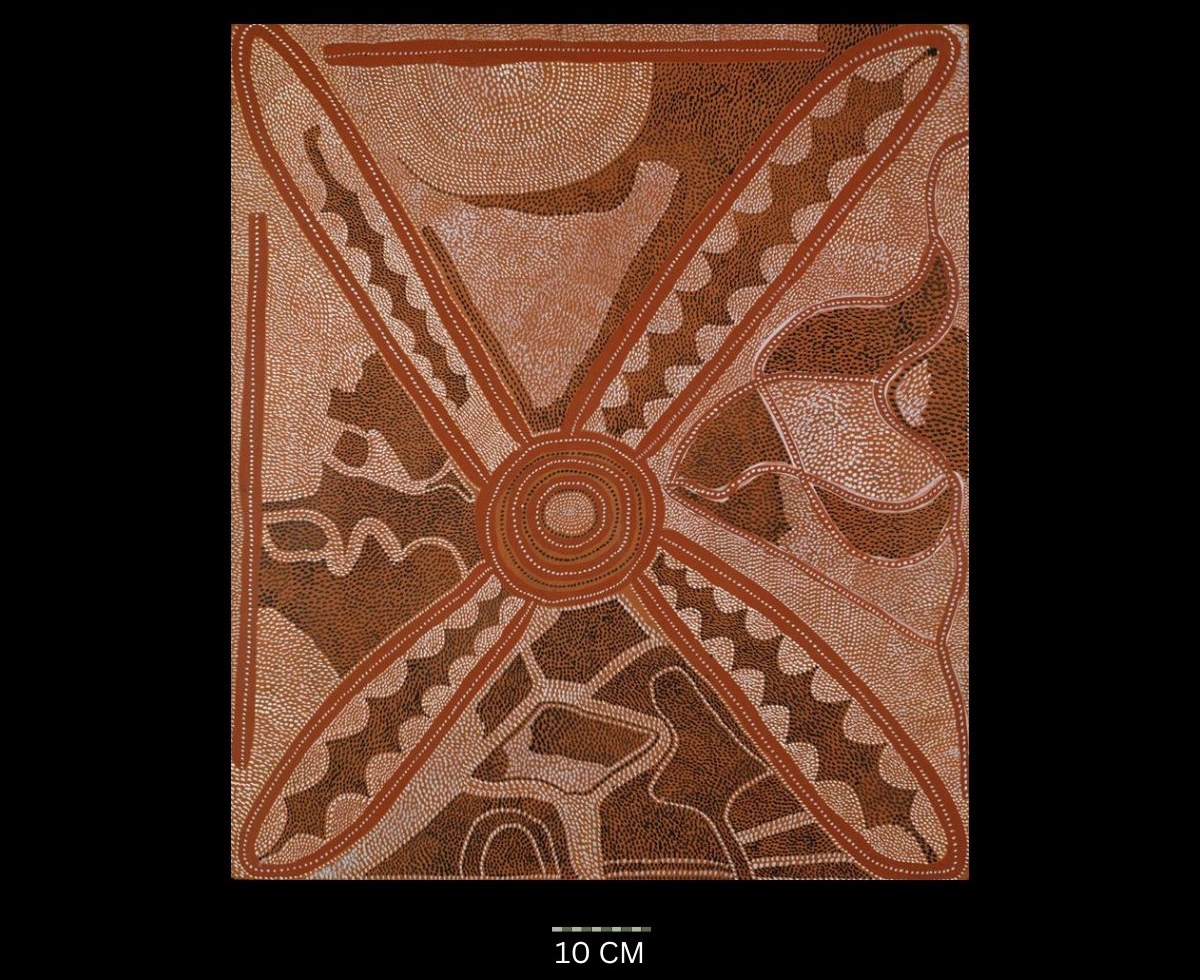
Yam Story 1972
Synthetic polymer powder paint on composition board,
85 x 80 cm
Hammerprice: A$57,000
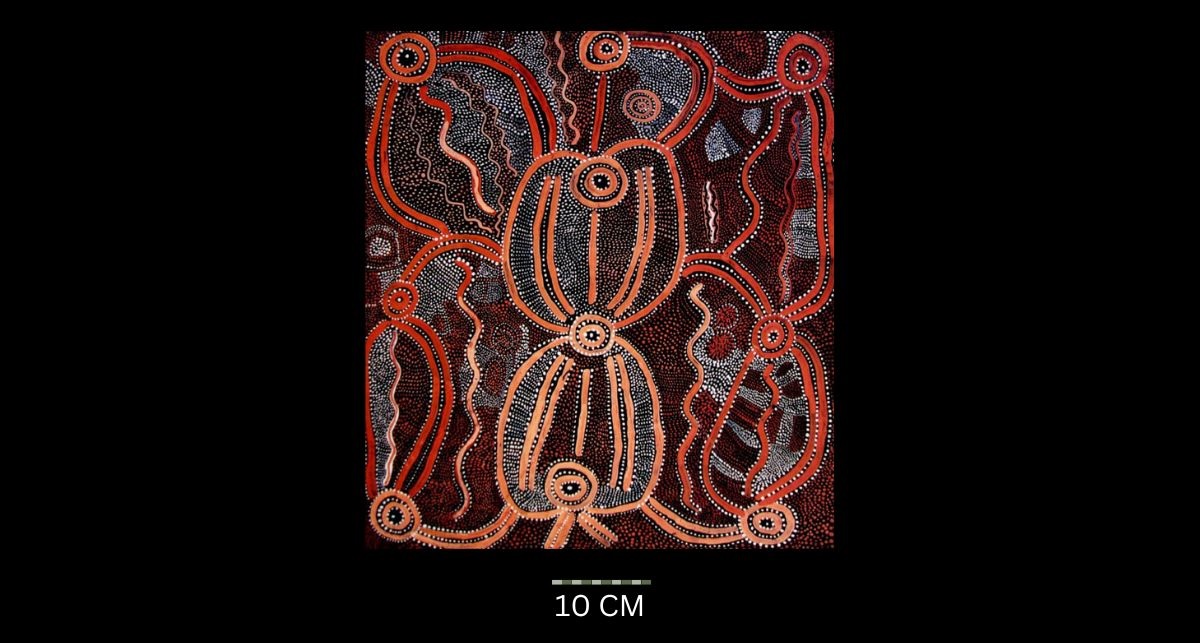
Untitled (Water Dreaming) 1972
Synthetic polymer powder paint on composition board, signed ‘MCIK’ (sic) on the reverse,
51 x 46 cm
Hammerprice: A$15,000

Wind Spirit, 1972
Synthetic powder paint on composition board,
62 x 50 cm
Hammerprice: A$20,000
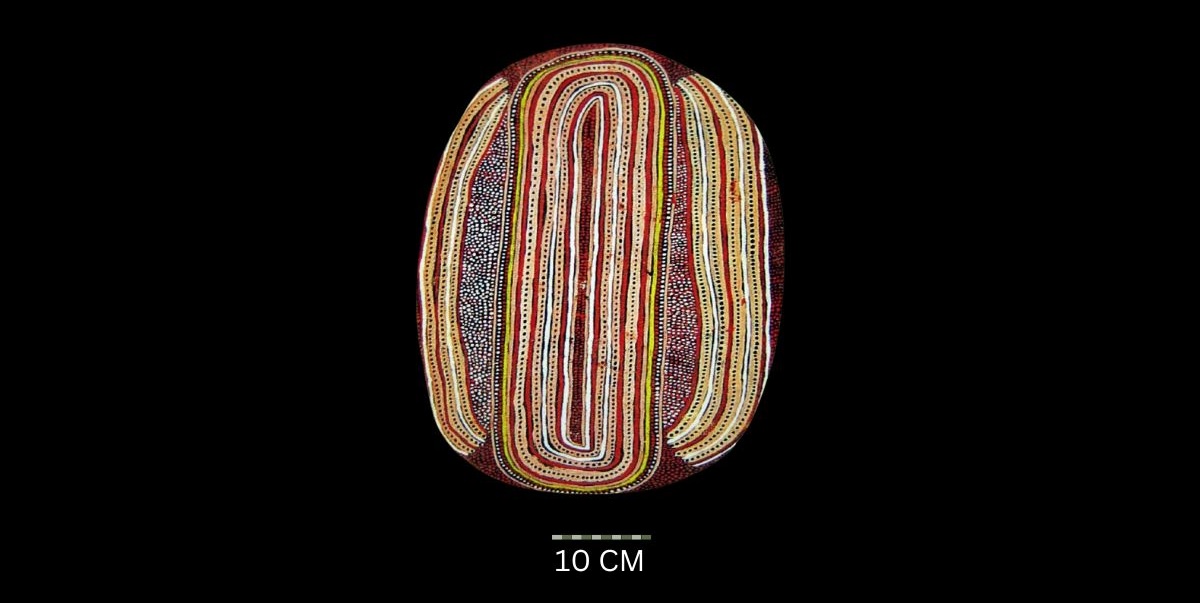
Old Man’s Dreamings, c. 1972
Synthetic polymer paint on carved beanwood,
45 x 29 cm
Hammerprice: A$16,000
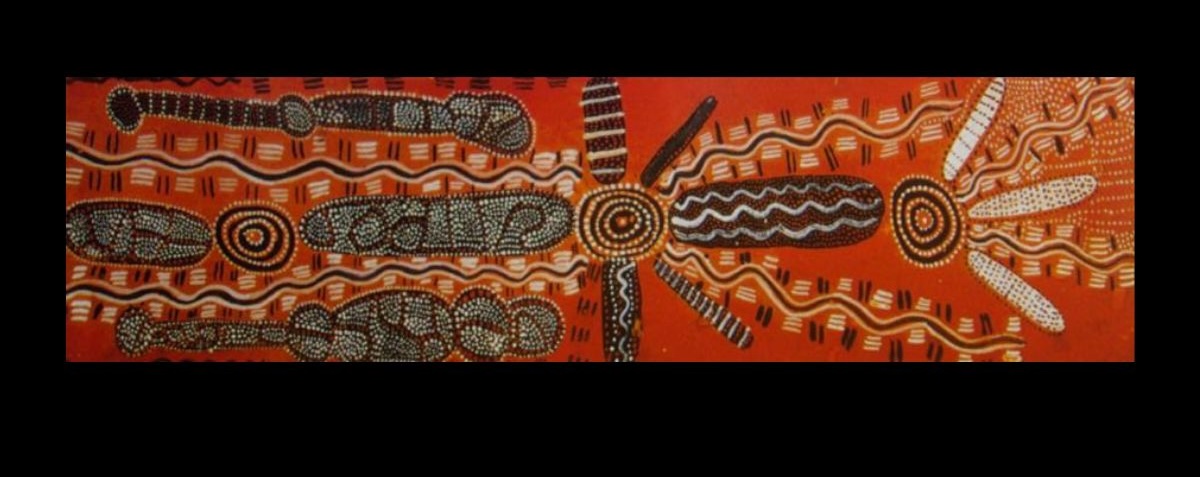
Ceremonial Corroboree Story 1972
Synthetic polymer and ochre on board
No size recorded
Hammerprice: A$5,500
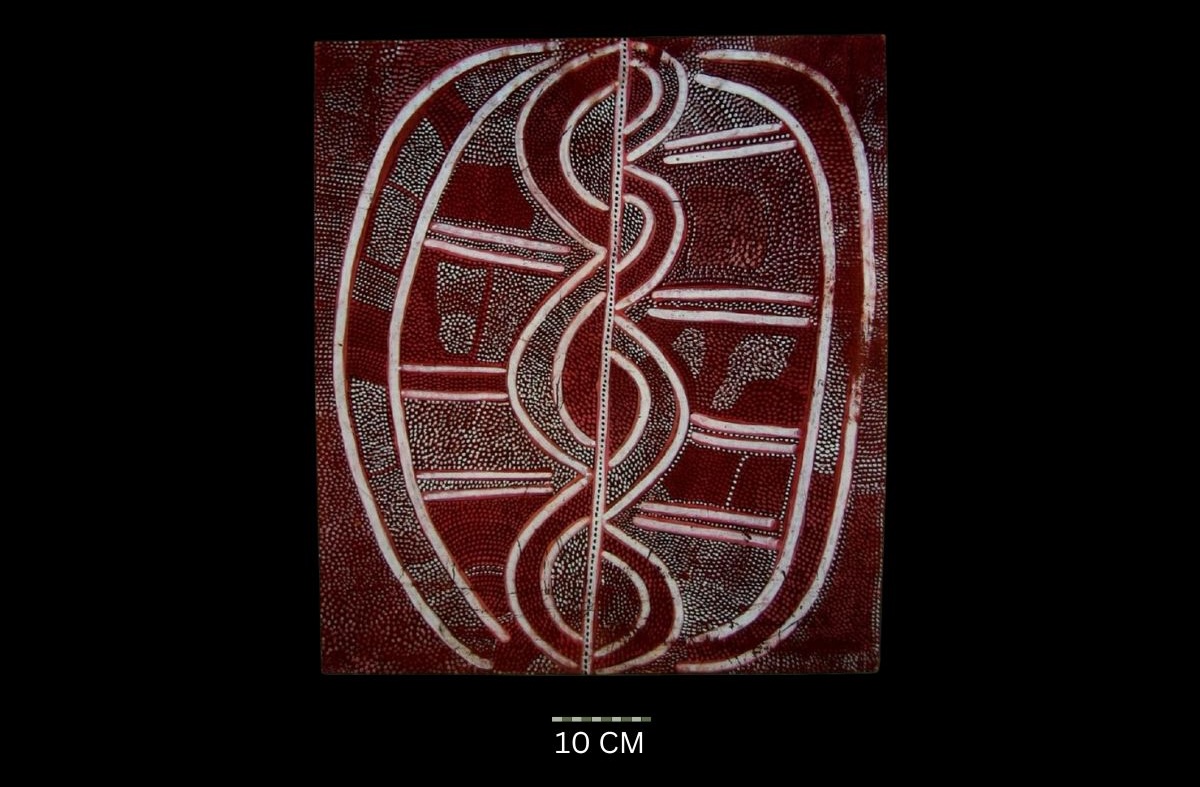
Water Totem Place for Men, 1972
Synthetic polymer paint on composition board, bears number 19281 verso, 64.5 x 57.5 cm
UNSOLD
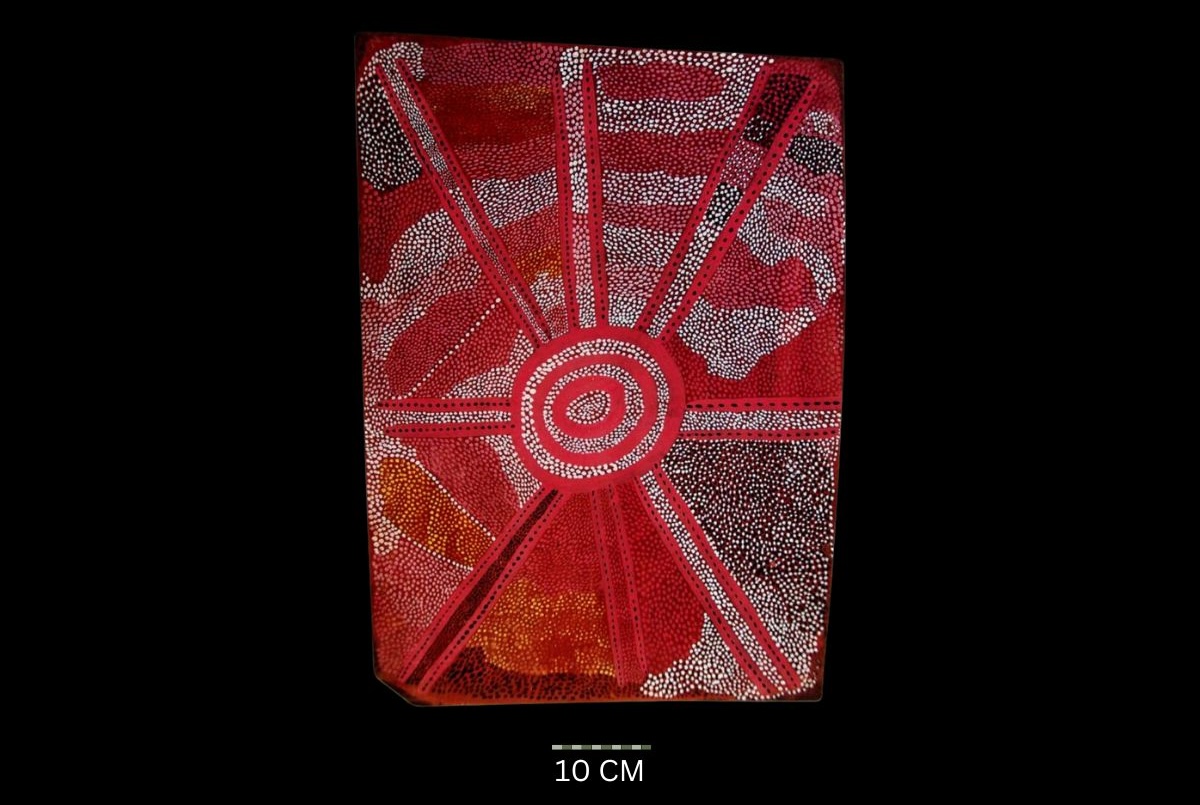
Wind Spirit 1972
Synthetic polymer powder paint on composition board, bears consignment number 19273 in chalk on the reverse,
68.5 x 48 cm
Hammerprice: A$13,500
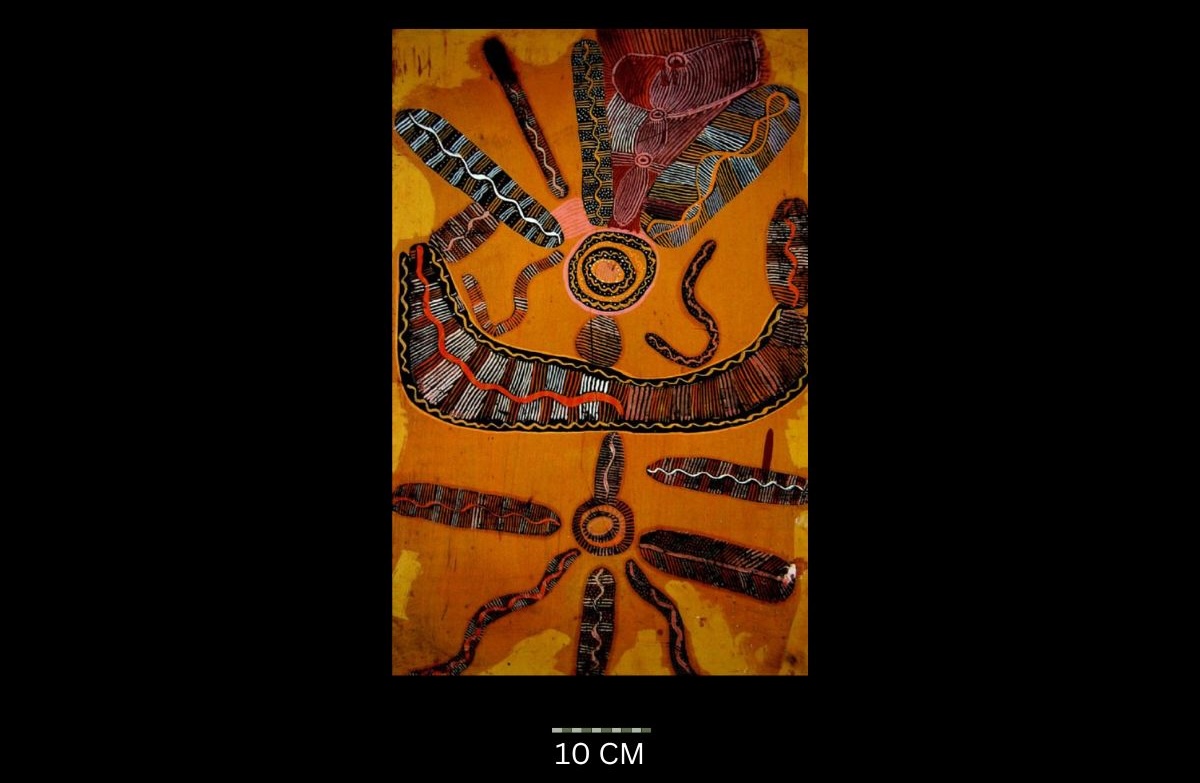
Untitled 1972
Synthetic polymer powder paint on composition board, bears Stuart Art Centre consignment number 18051 on the reverse,
64 x 40.5 cm
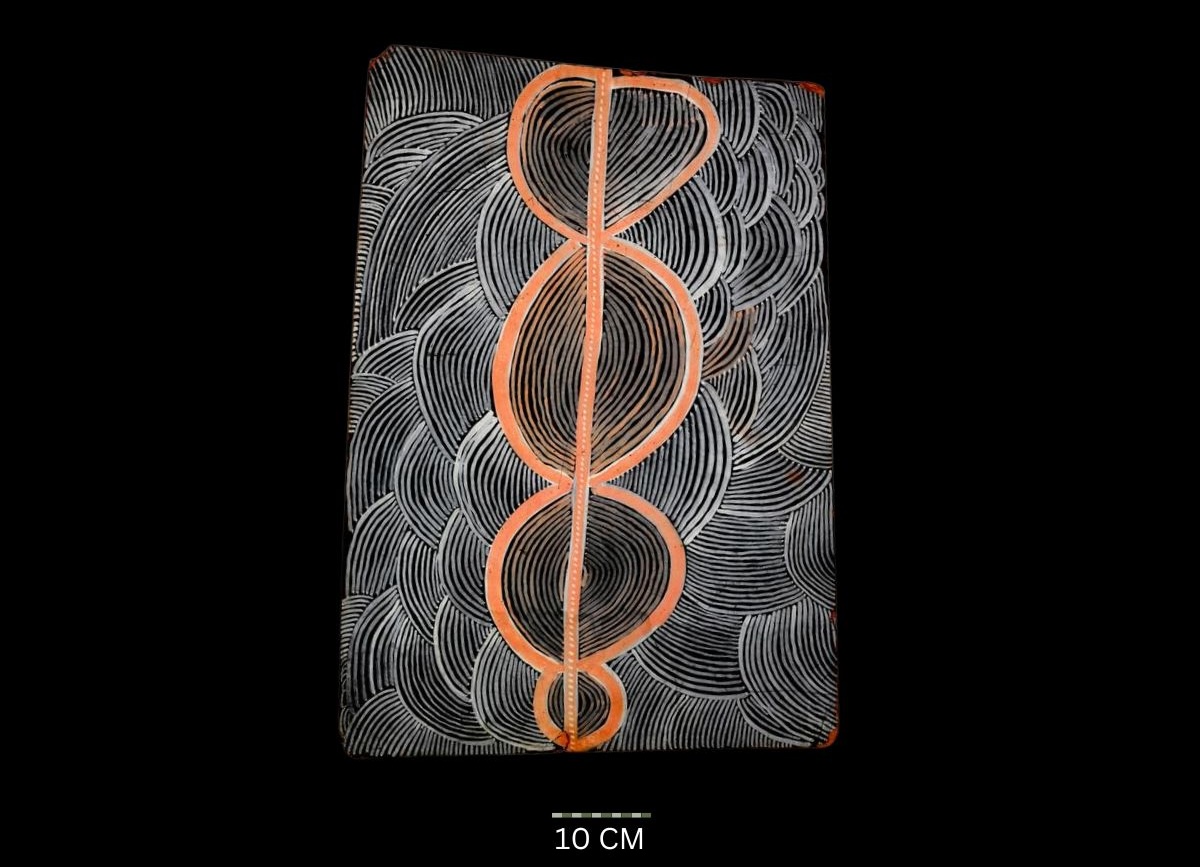
Untitled
Undated but assumed to be 1972-73
Synthetic polymer powder paint on composition board, bears various inscriptions on the reverse, including Stuart Art Centre catalogue no. 19341, 72 x 54 cm
UNSOLD
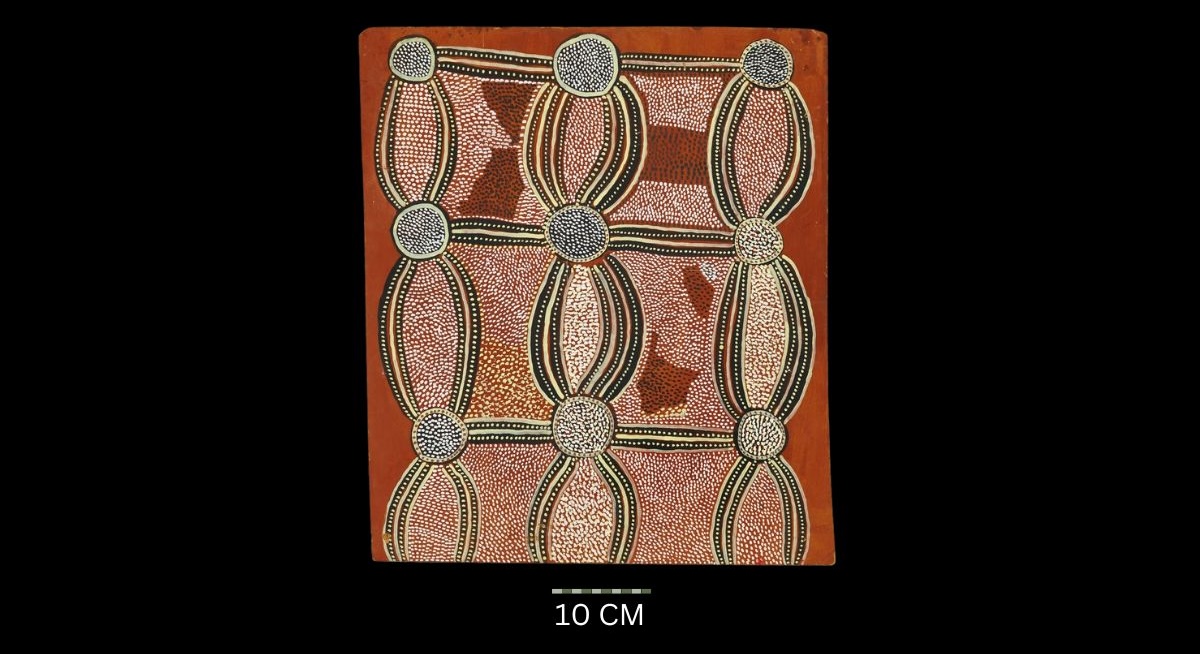
Untitled (Sandhill Travelling Dreaming), 1972
Synthetic polymer paint on composition board, bears inscription verso: artist’s name, Stuart Art centre cat. 1922 and cat. 00060/84,
54 x 46.5 cm
Hammerprice: A$50,000
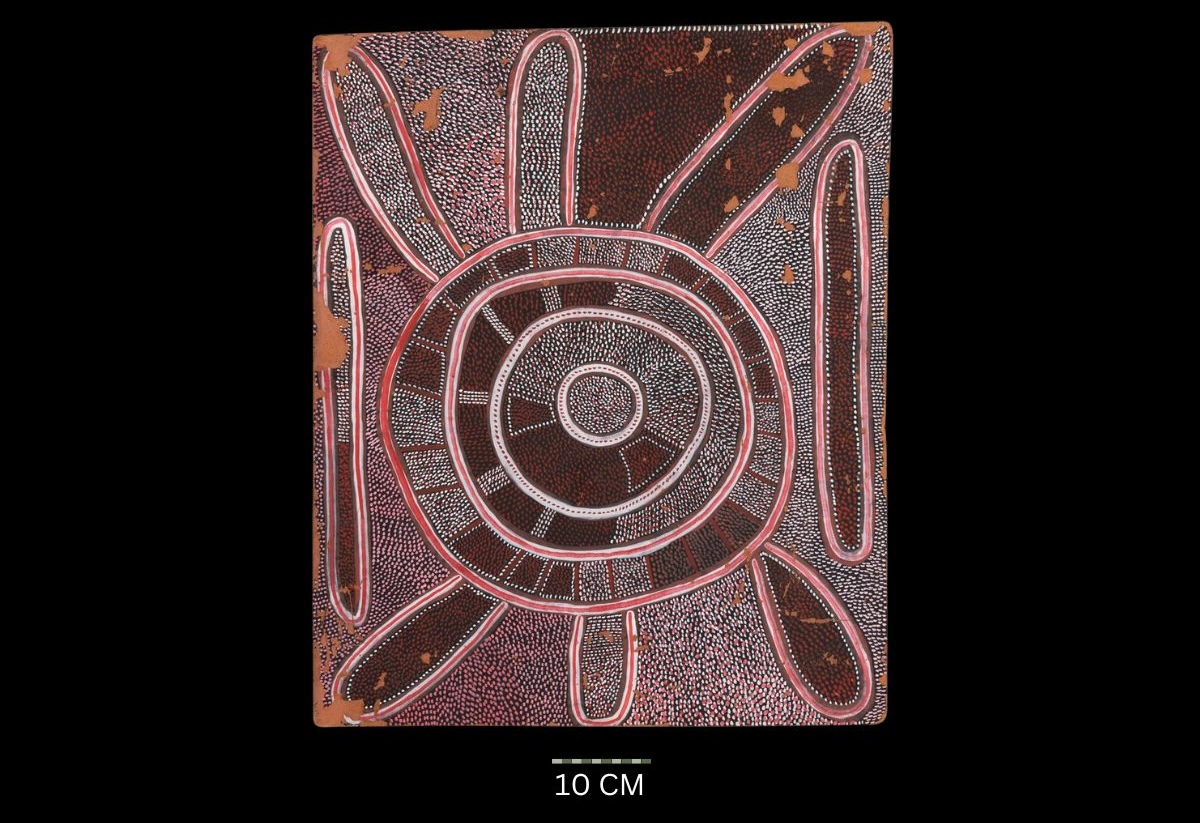
Red Lizard c. 1972
Synthetic polymer paint on board, inscribed verso, ‘Tjatjupi-nya’,
71 x 55.5 cm
UNSOLD
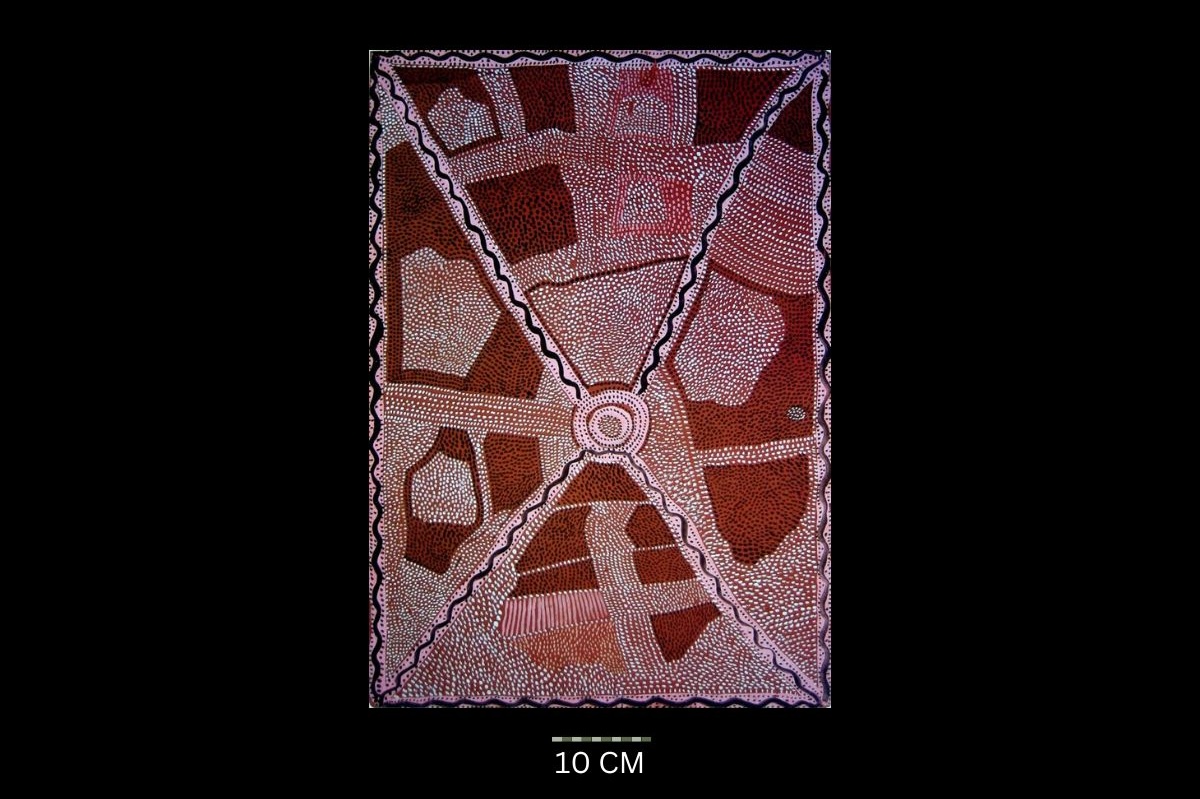
Untitled 1972
Synthetic polymer paint on composition board, bears consignment number 19092 on the reverse,
65 x 45 cm
UNSOLD
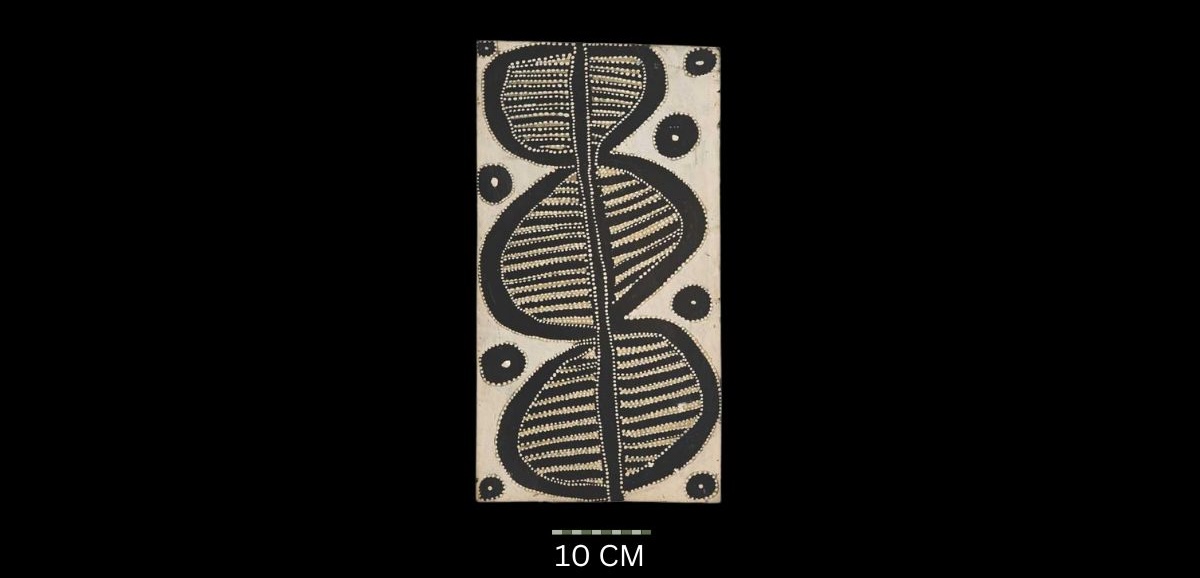
Wild Dog Dreaming c. 1972
Synthetic polymer paint on composition board, bears old label on the reverse of original frame,
47 x 25.5 cm
Hammerprice: A$88,500
Experimentation and Asymmetry (1973–1975)
Between 1973 and 1975, Mick Namarari continued pushing the boundaries of Aboriginal painting by combining traditional motifs with non-traditional, asymmetrical designs. Unlike contemporaries such as Kaapa Mbitjana and Tim Leura, who came from churinga-carving backgrounds and favoured symmetry, Namarari embraced asymmetry and subtle tonal blending. His signature use of layered dots across varied coloured backgrounds resulted in works with a pastel-like quality, setting them apart visually and conceptually from his peers. This period solidified Namarari’s position as a leading innovator in the Papunya Tula movement and foreshadowed his transition to desert minimalism.
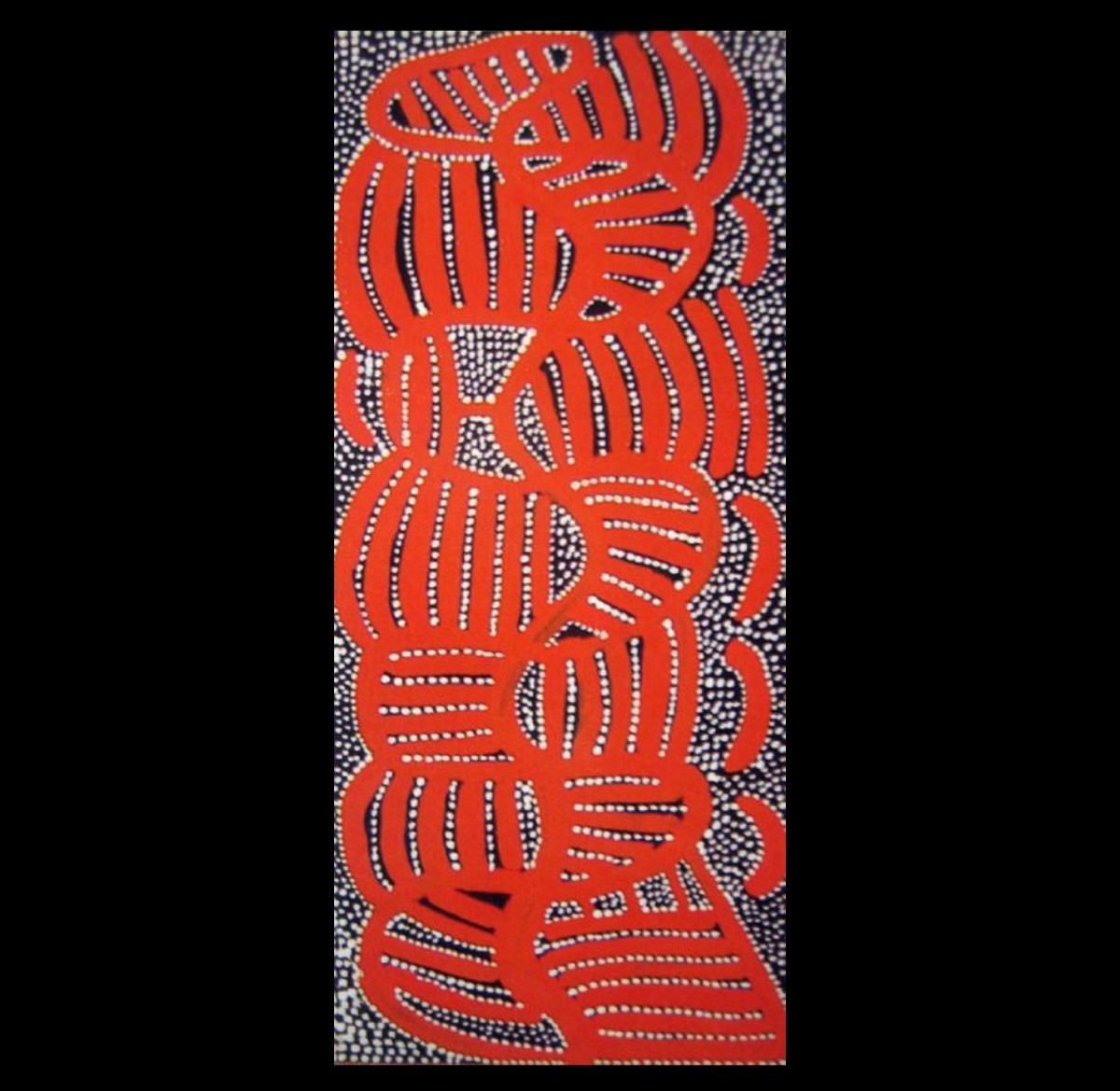
Blackbird Dreaming
No date assumed 1972-1973
Acrylic on plywood
No size recorded
Hammerprice: A$7,500
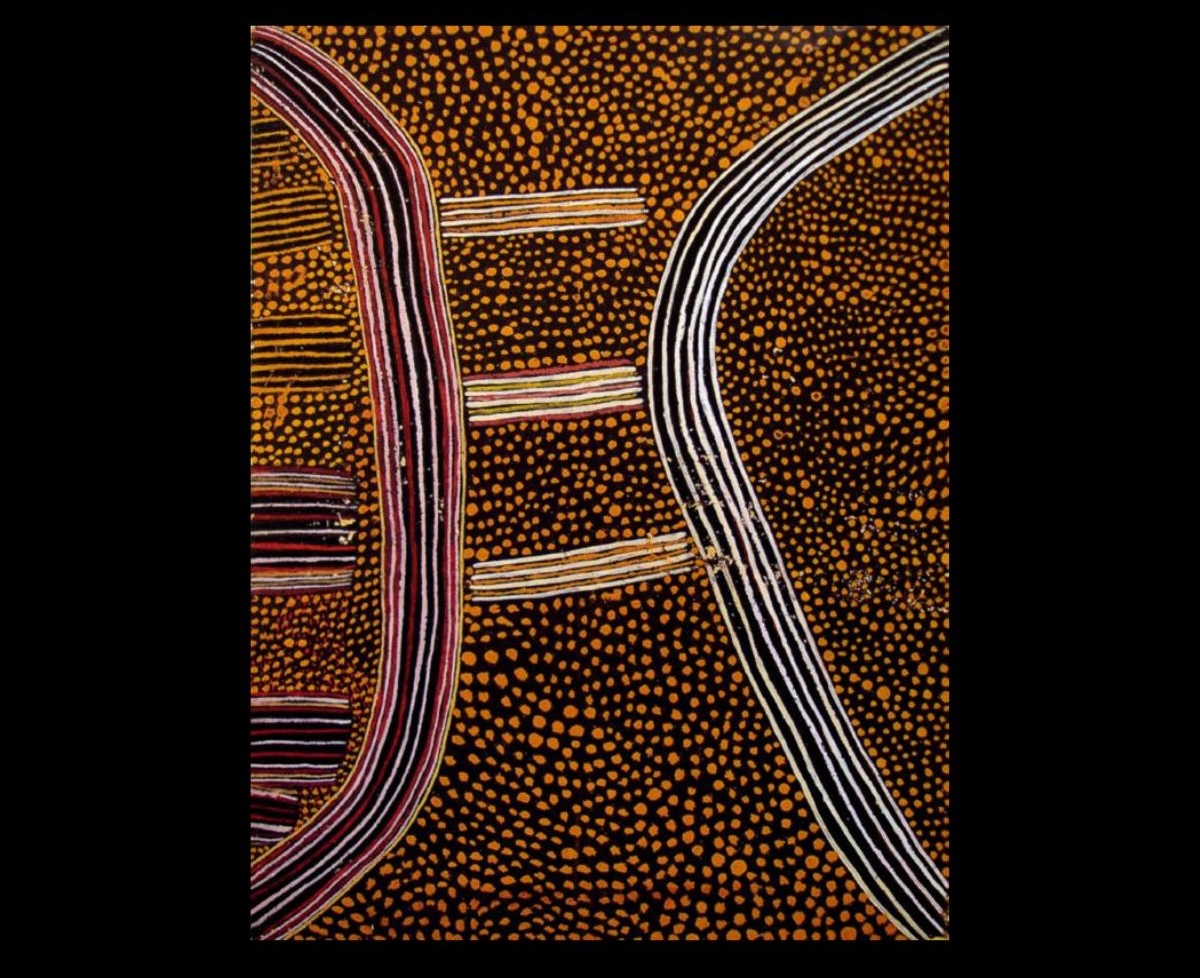
Untitled (Old Mans Story/Lightning) 1972-73
Synthetic polymer powder paint on composition board
NO SIZE RECORDED
Hammerprice: A$12,000
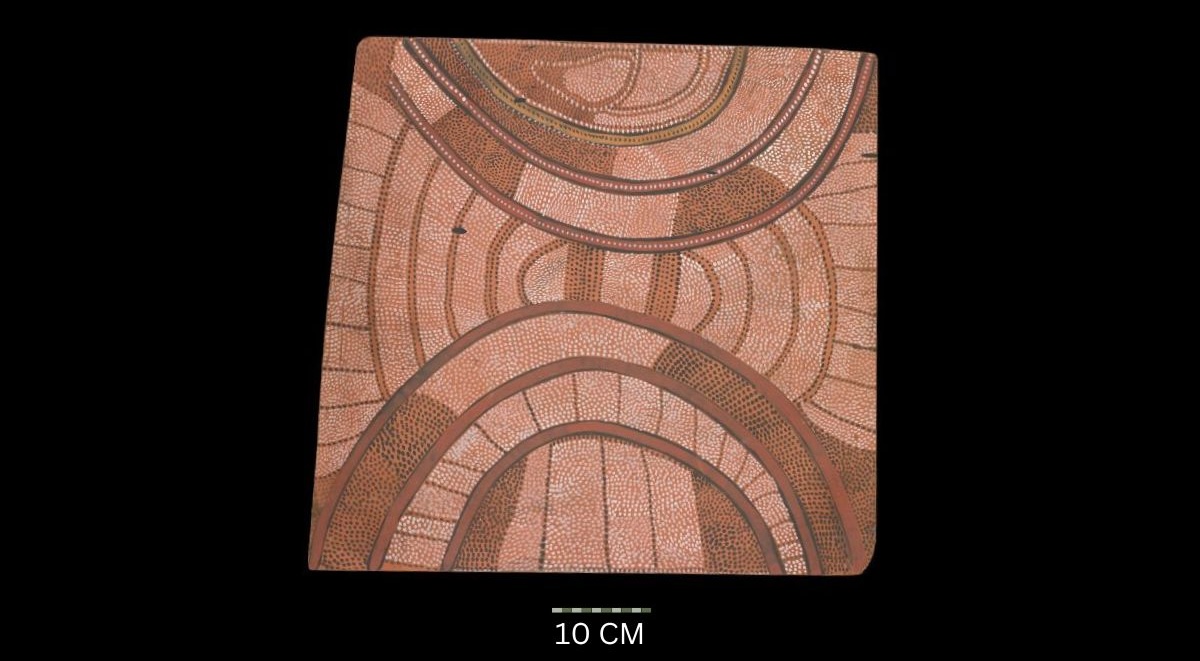
Kangaroos Sleeping, Grass in the Rocks
No date recorded assumed to be 1973
Synthetic polymer powder paint on composition board, bears artist’s name ‘Mick Jab’ (sic) and catalogue number 19123 A and inscribedin Peter Fannin’s hand ‘Kangaroo’s Sleeping: Grass in the Rocks – MN’ on the reverse,
57.5 x 54.5 cm
Hammerprice: A$20,000
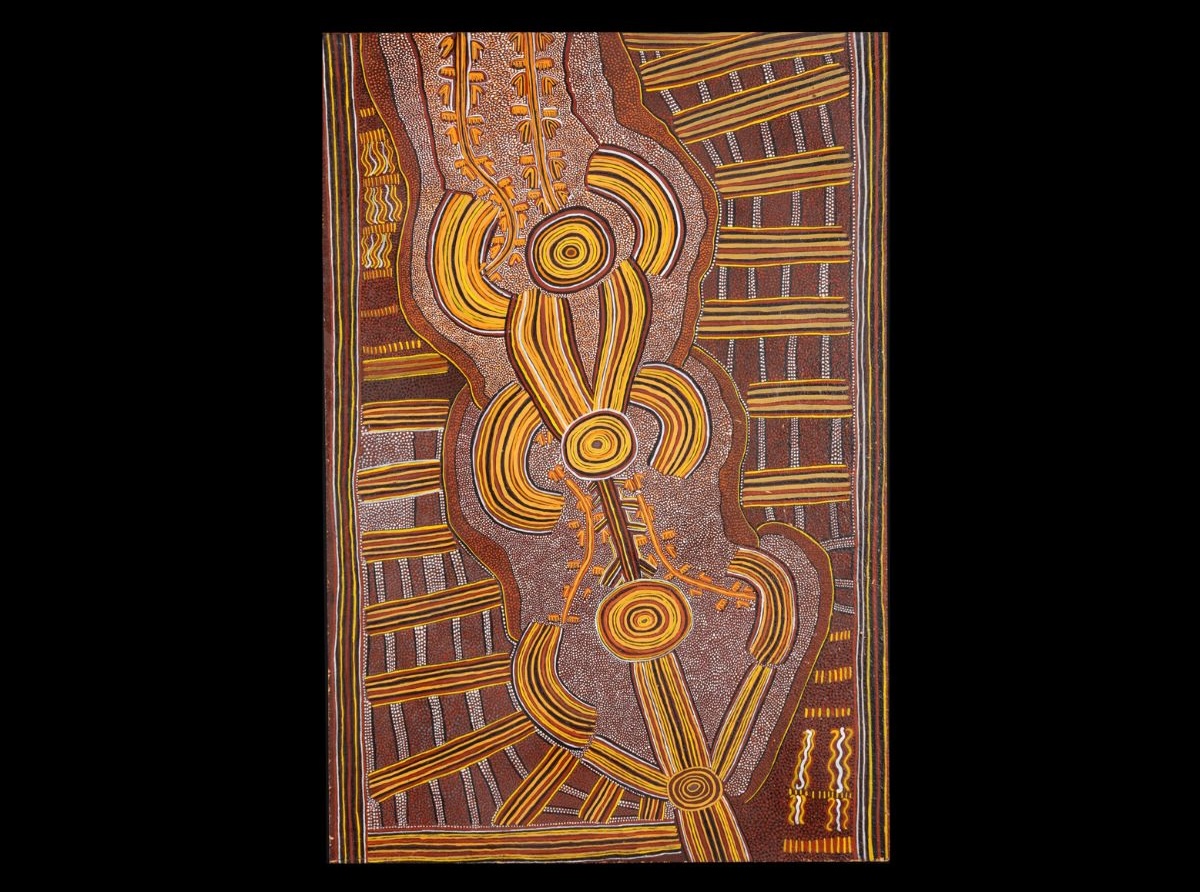
‘Unknown Dreaming at Walukaritji’ 1973
Acrylic on board
No size recorded
Hammerprice: A$9,000
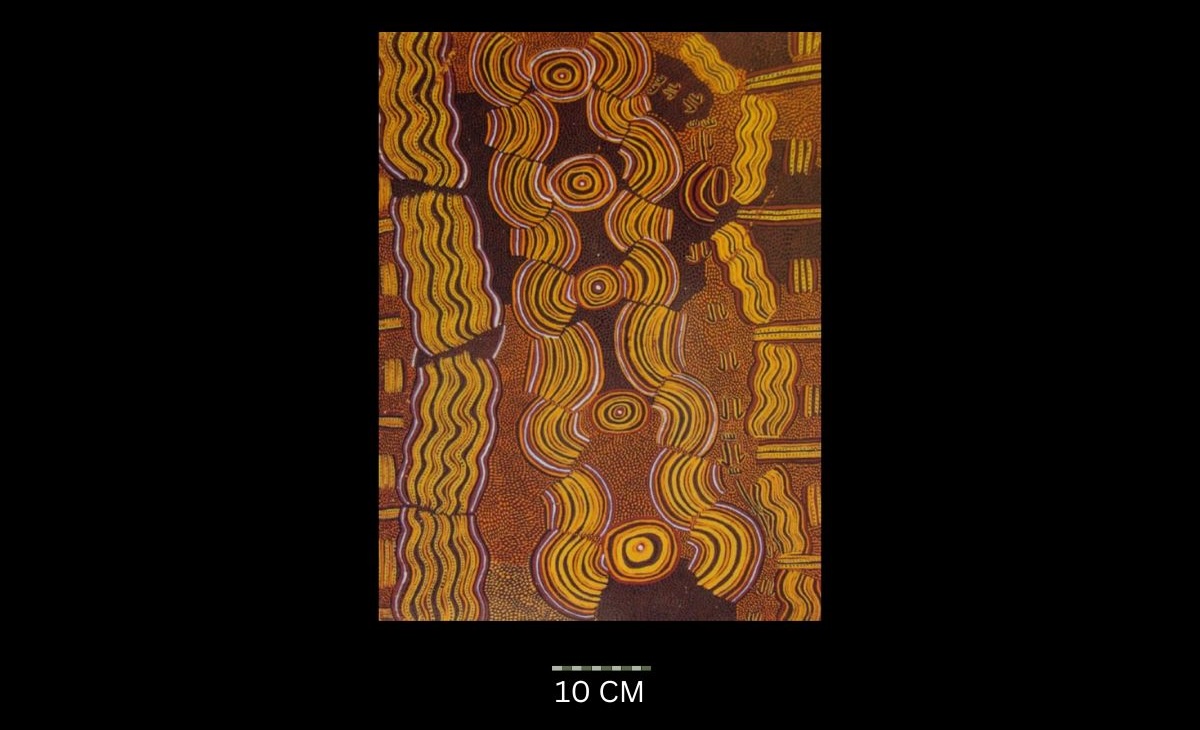
Fires on a Sandridge at Mandi 1973
Synthetic polymer on canvas, unsigned, bears Papunya Tula catalogue number MN735707 on reverse,
58 x 44 cm
Hammerprice: A$11,000
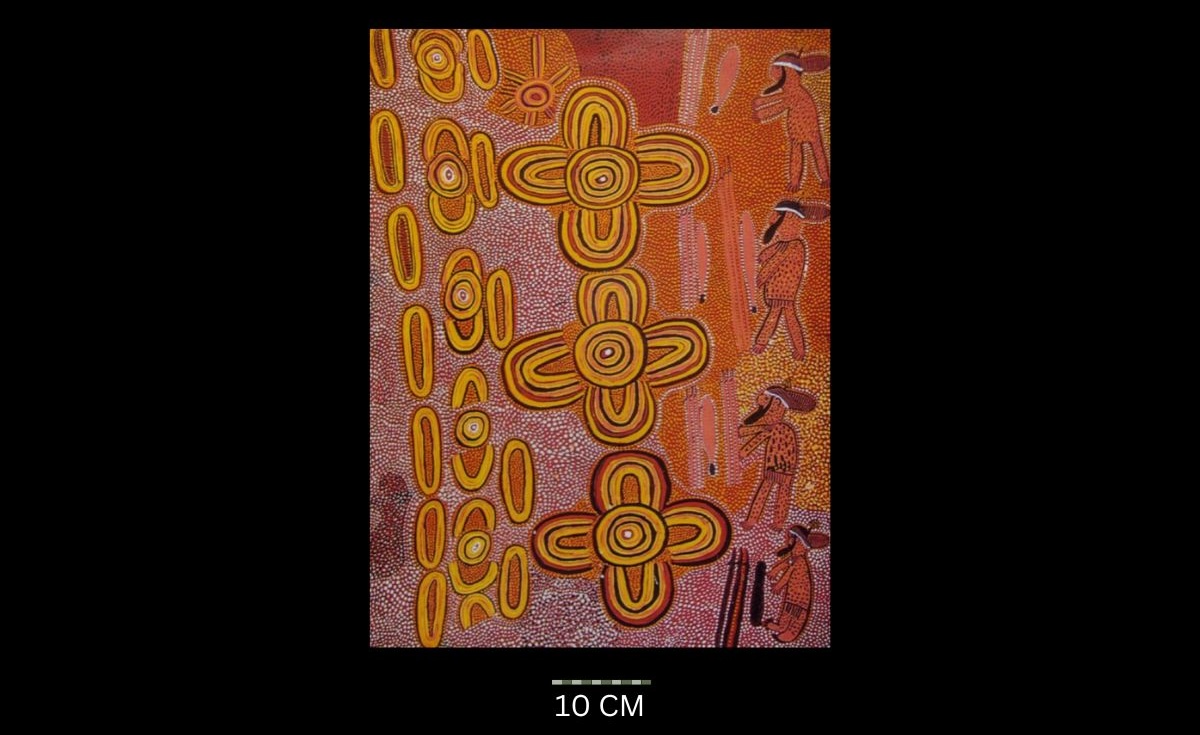
Story of a Corroboree at Tjilka 1973
Synthetic polymer on board, unsigned, bears Papunya Tula catalogue number on reverse,
61 x 46 cm
Hammerprice: A$24,000
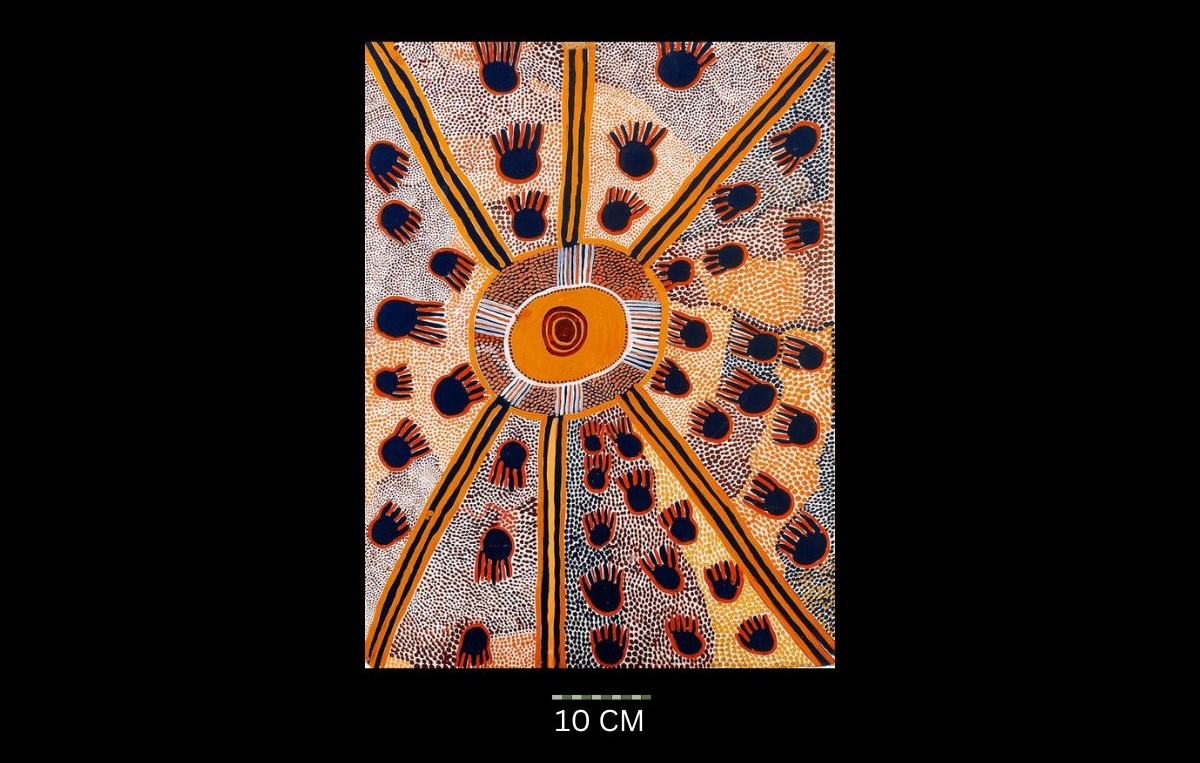
Porcupine Moon Dreaming
No date recorded but likely 1973-1974
Synthetic polymer paint and synthetic binder on composition board, bears catalogue numbers MN S1-78 and PT30N411 on the reverse,
62 x 46 cm
Hammerprice: A$9,000
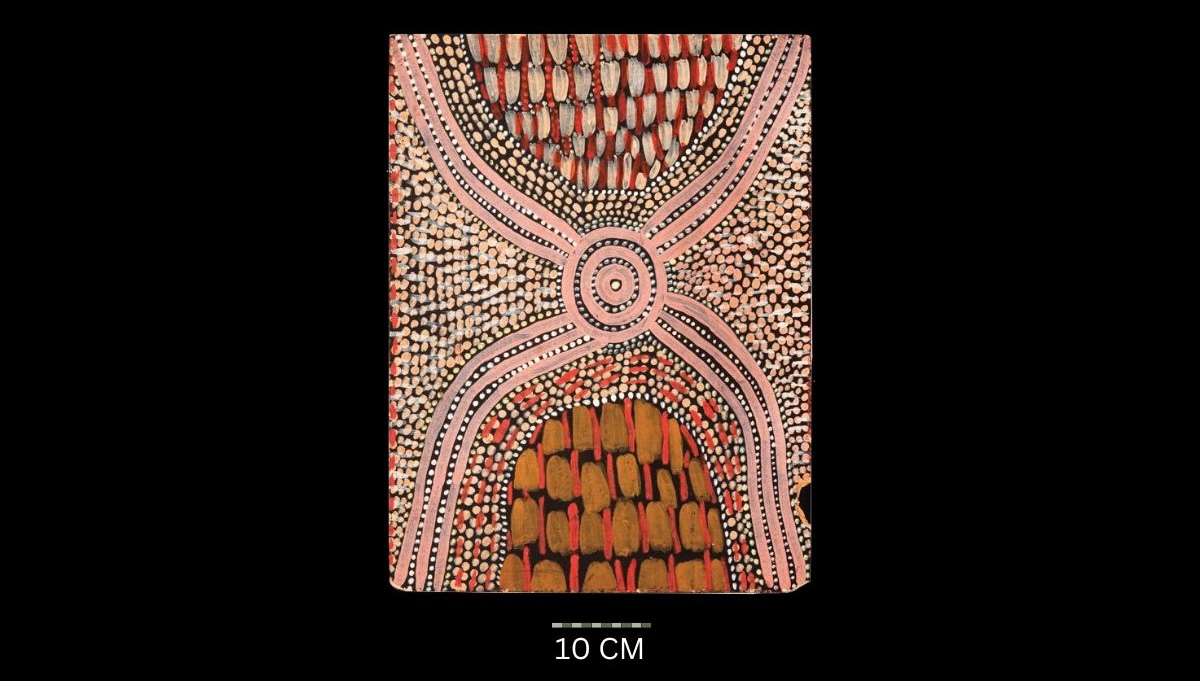
A Dingo Icongraph, 1974
Synthetic polymer paint on board,
57 x 43 cm
Hammerprice: A$5,000
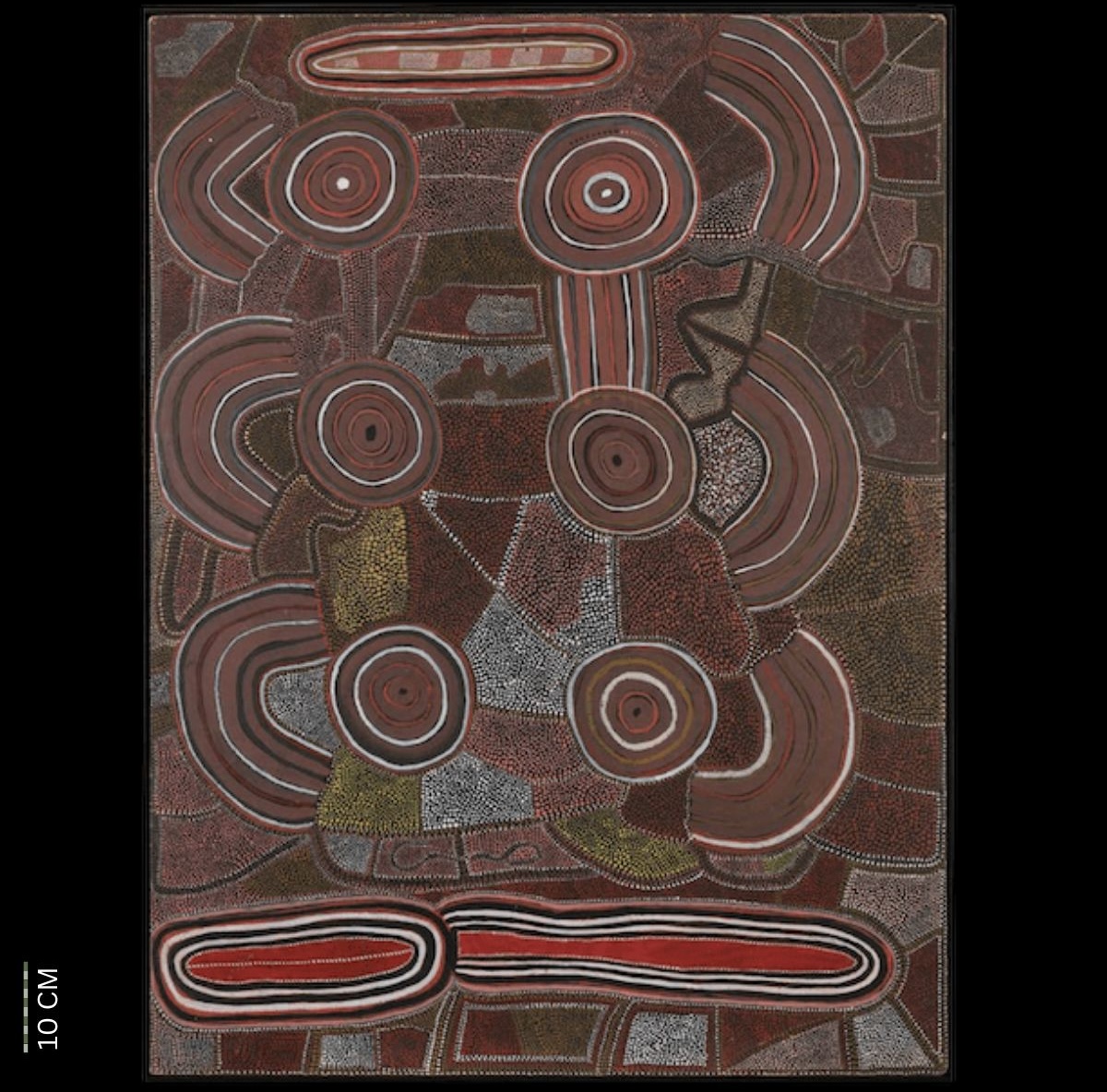
Kangaroo (Malu) Dreaming
No date but likely 1974
Synthetic polymer paint on particle board,
122 x 91.5 cm
Hammerprice: A$50,000
Master of Western Desert Minimalism
From 1975 onward, Mick Namarari Tjapaltjarri’s work evolved dramatically, culminating in his recognition as the undisputed master of Western Desert minimalism. He moved beyond traditional Aboriginal iconography, embracing pure dot fields as a powerful visual language. In works like Mouse Dreaming and Wallaby Dreaming at Tjunginga (1991), Namarari achieved a masterful synthesis of form, texture, and spirituality. His use of subtly varied dot sizes, densities, and colours created immersive, impressionistic surfaces that evoked ancestral presence and deep country. Where dots were once background detail, Namarari brought them to the forefront, transforming them into meditative landscapes of cultural memory and spiritual depth. These paintings stand as masterpieces of contemporary Indigenous art, celebrated for their aesthetic brilliance and cultural resonance.
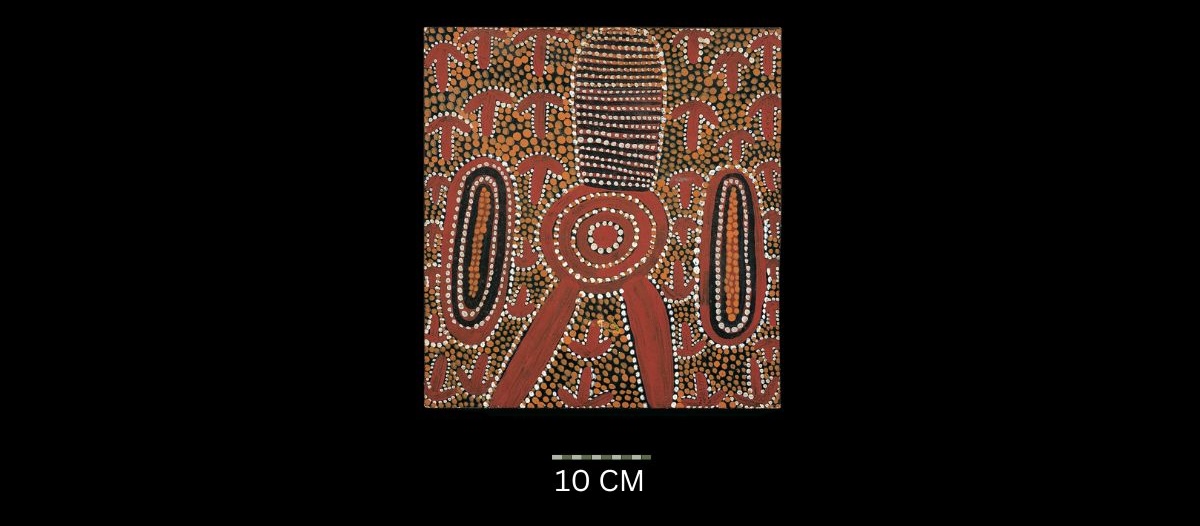
Talkira 1976
Synthetic polymer paint on board, inscribed verso, ‘MN768105′,
38.5 x 36 cm
Hammerprice: A$3,500
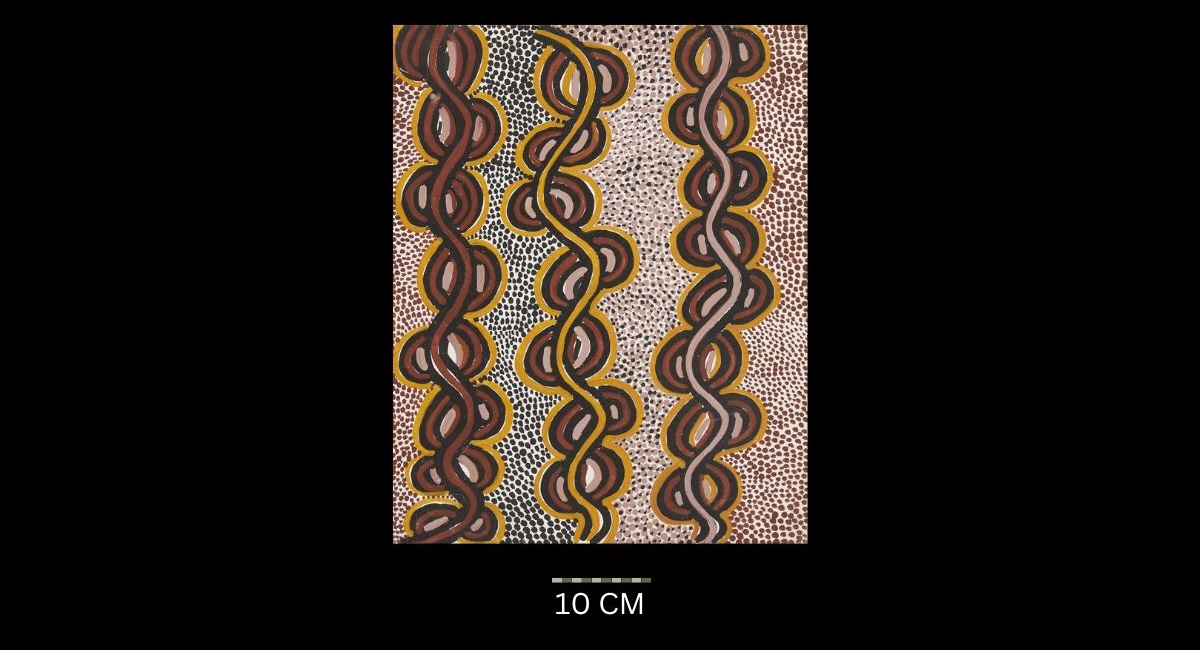
Ipalu of Silky Pear Dreaming at Tjuturrangunynga 1979
Synthetic polymer paint on board, inscribed on backing verso with artist’s name, date and Avant Galleries cat. no. 505,
51 x 41 cm
Hammerprice: A$6,000
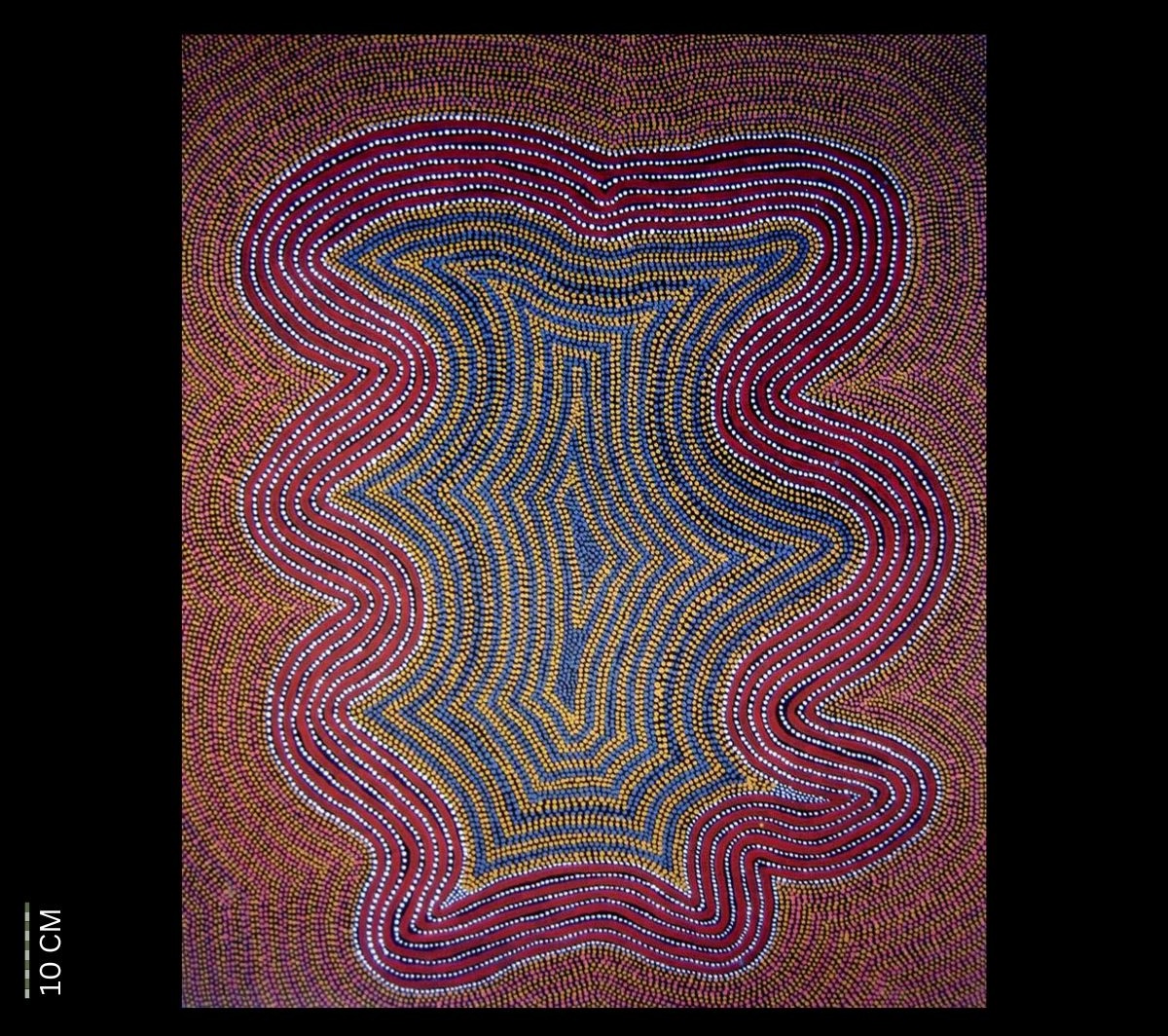
Narrkulynga Dreaming Site 1982
Synthetic polymer paint on linen, bears Papunya Tula Artists catalogue number MN820811 on the reverse,
81 x 100 cm
Hammerprice: A$8,000
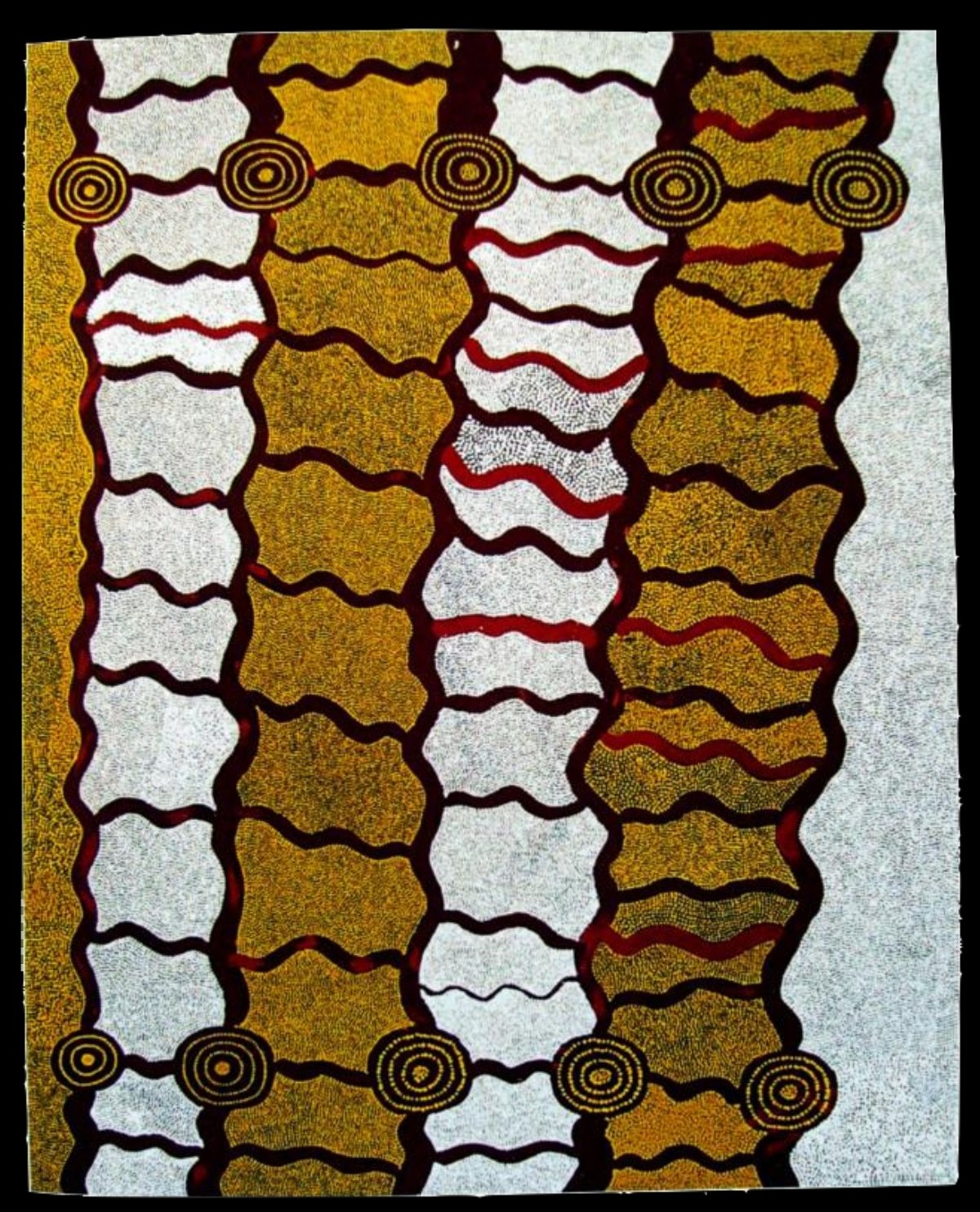
Whirlwind Dreaming 1986
Synthetic polymer painting on canvas, bears the artist’s name together with Papunya Tula cat No. MN860695 on the reverse,
122 x 152 cm
Hammerprice: A$16,000
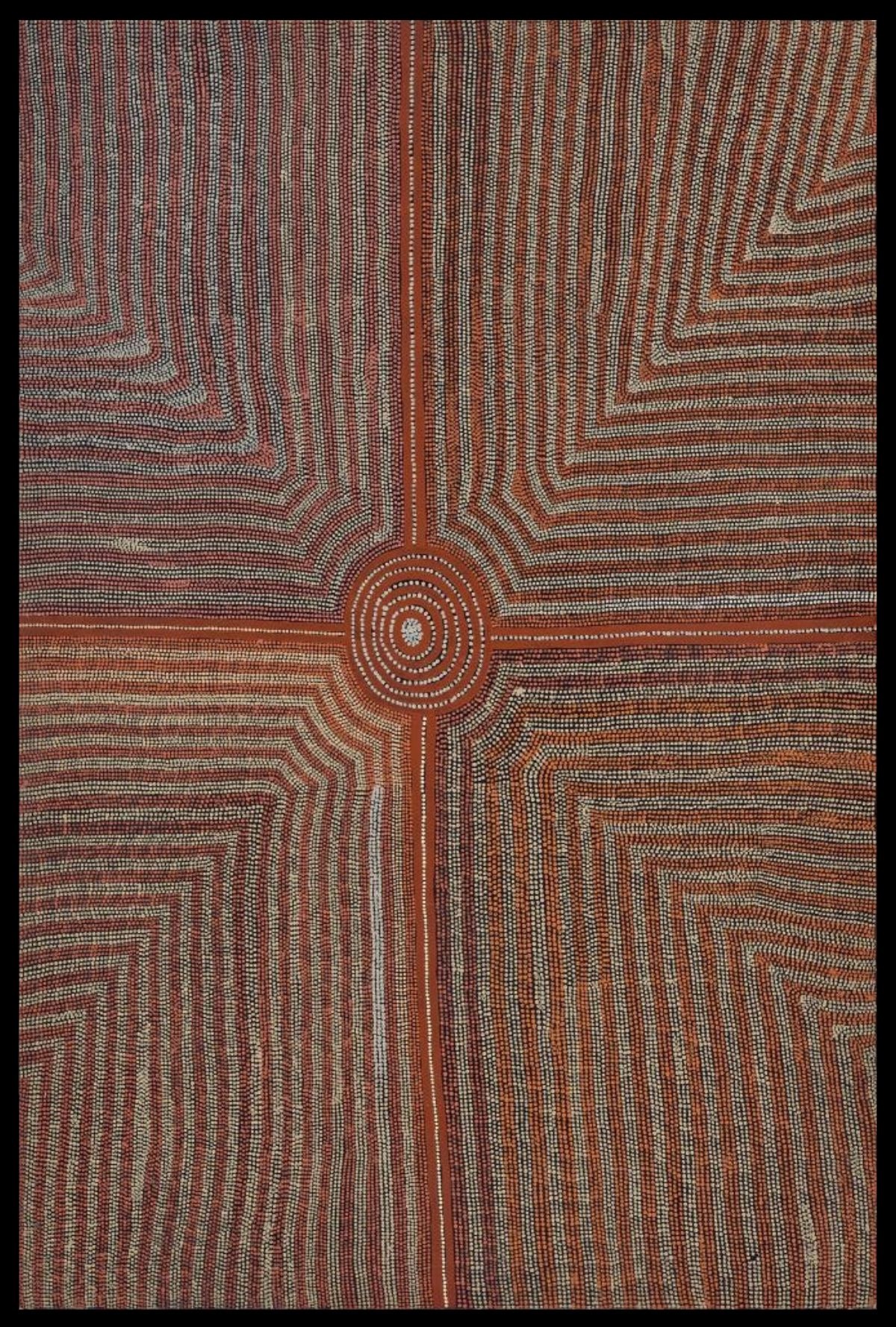
Untitled, 1987
Synthetic polymer paint on linen, bears inscription verso: Papunya Tula Artists cat. MN871234,
121.5 x 182.5 cm
Hammerprice: A$22,000
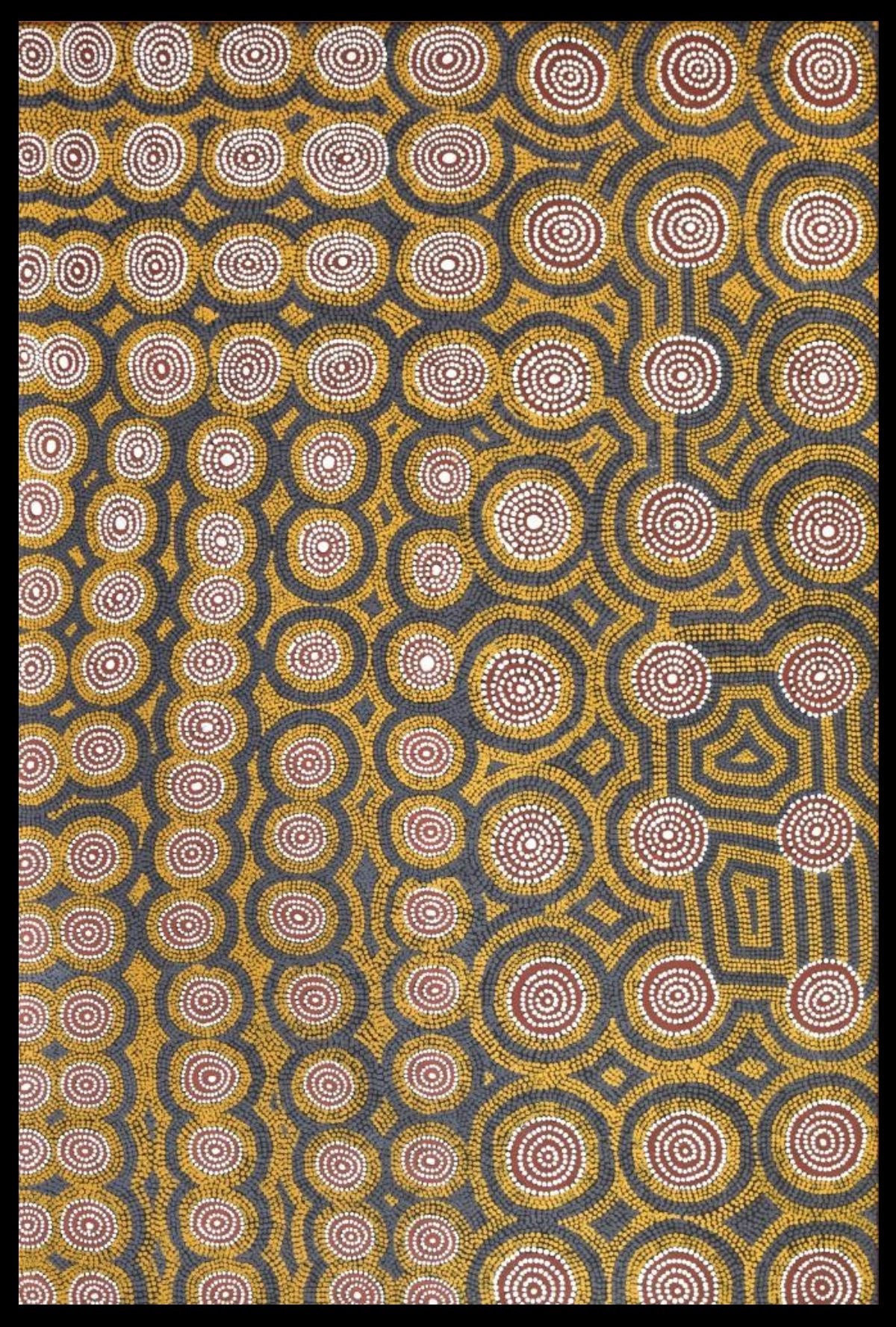
Tingari, 1988
Synthetic polymer paint on Belgian linen,
121 x 180 cm
Hammerprice: A$15,000
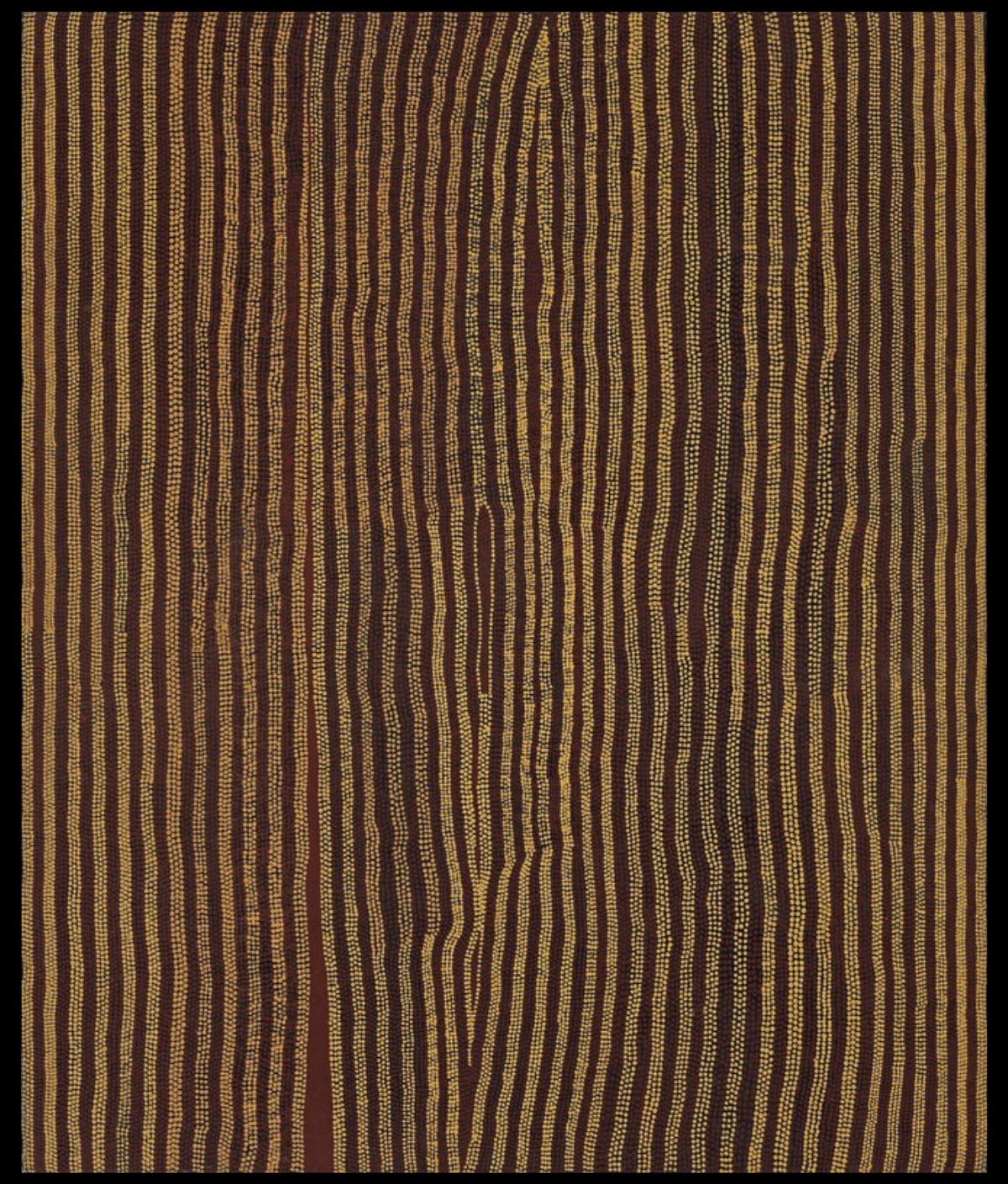
Kangaroo, Wallaby and Bird Dreaming at Manpinya, East of Kintore 1989
Synthetic polymer paint on canvas, bears artist’s name and Papunya Tula number MN891111 on the reverse,
183 x 152 cm
Hammerprice: A$60,000
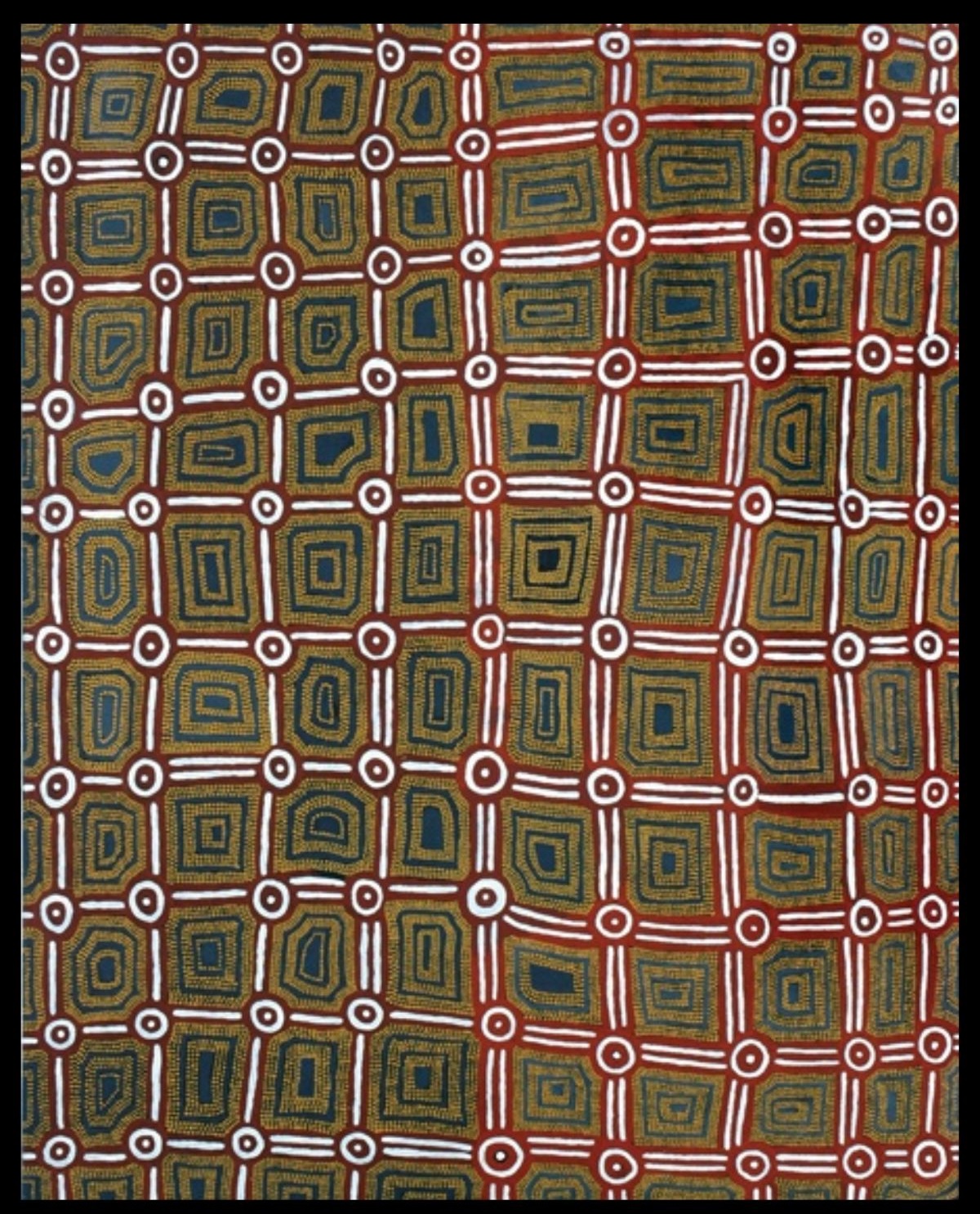
Untitled 1990
Acrylic on linen,
152 x 122 cm
Hammerprice: A$27,000

Tjunginpa 1990
Synthetic polymer paint on canvas, bears artist’s name Mick Nam (sic) and Papunya Tula Artists catalogue number MN900517 on the reverse,
122.5 x 182.5 cm
Hammerprice: A$120,000
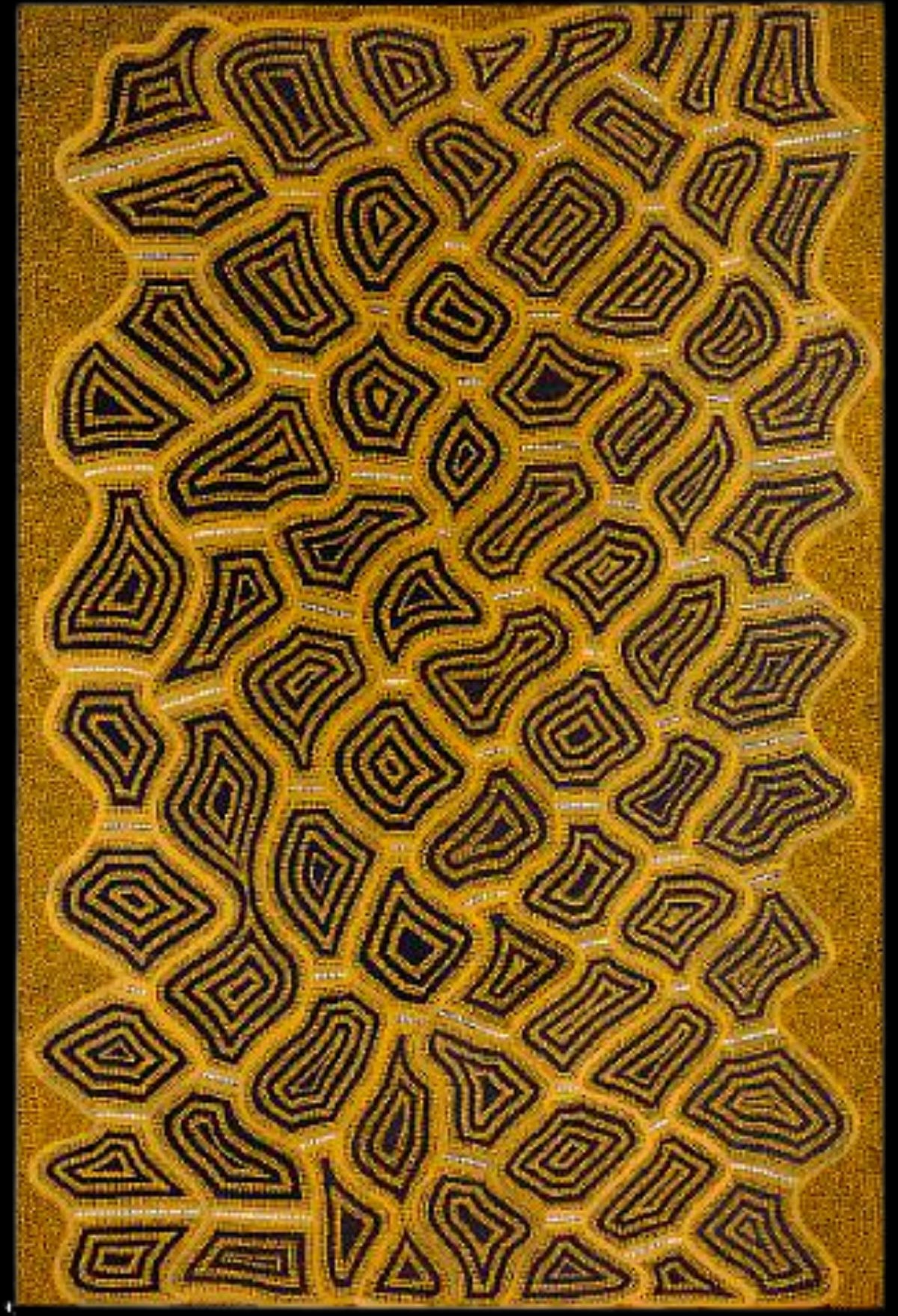
Kangaroo (Malu) Dreaming 1990
Synthetic polymer paint on linen, bears artist’s name, dimensions and Papunya Tula Artists catalogue number MN900742 on the reverse and Gallery Gabrielle Pizzi label on the reverse of the stretcher,
121.5 x 183 cm
Hammerprice: A$20,000
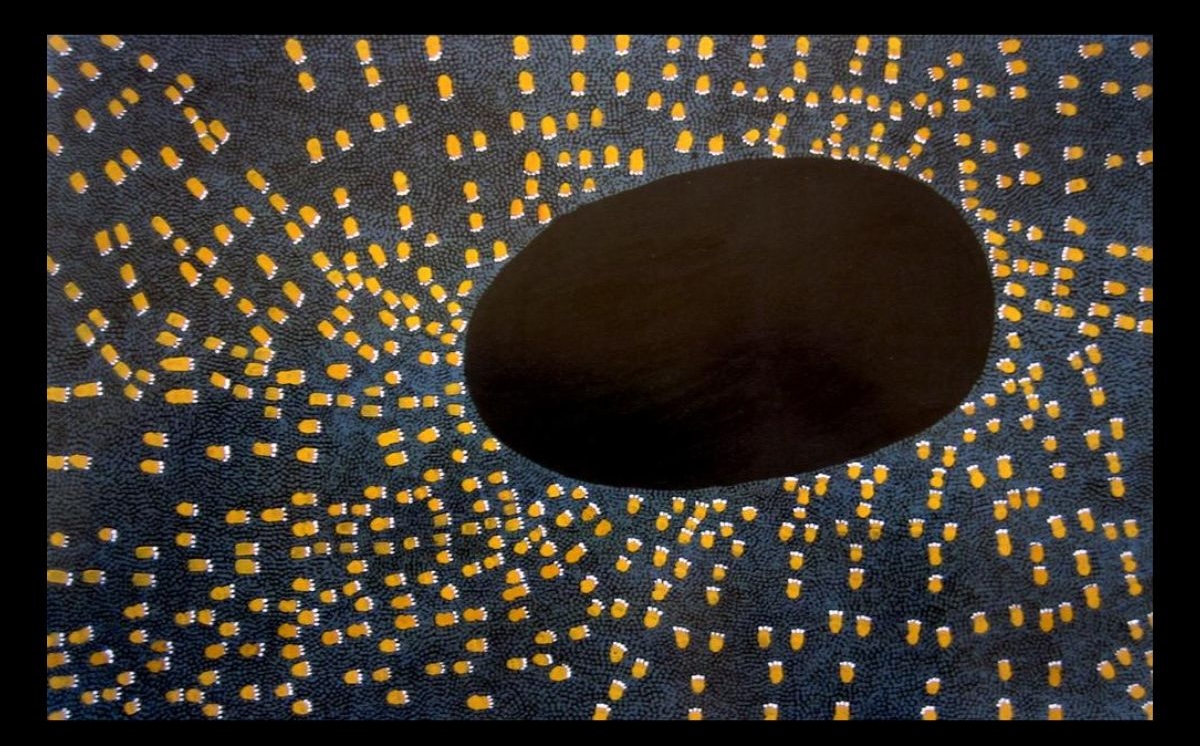
Bandicoot Dreaming 1990
Synthetic polymer paint on linen, bears artist’s name size and Papunya Tula Artists catalogue number MN900904 on the reverse
No size recorded
Hammerprice: A$34,000
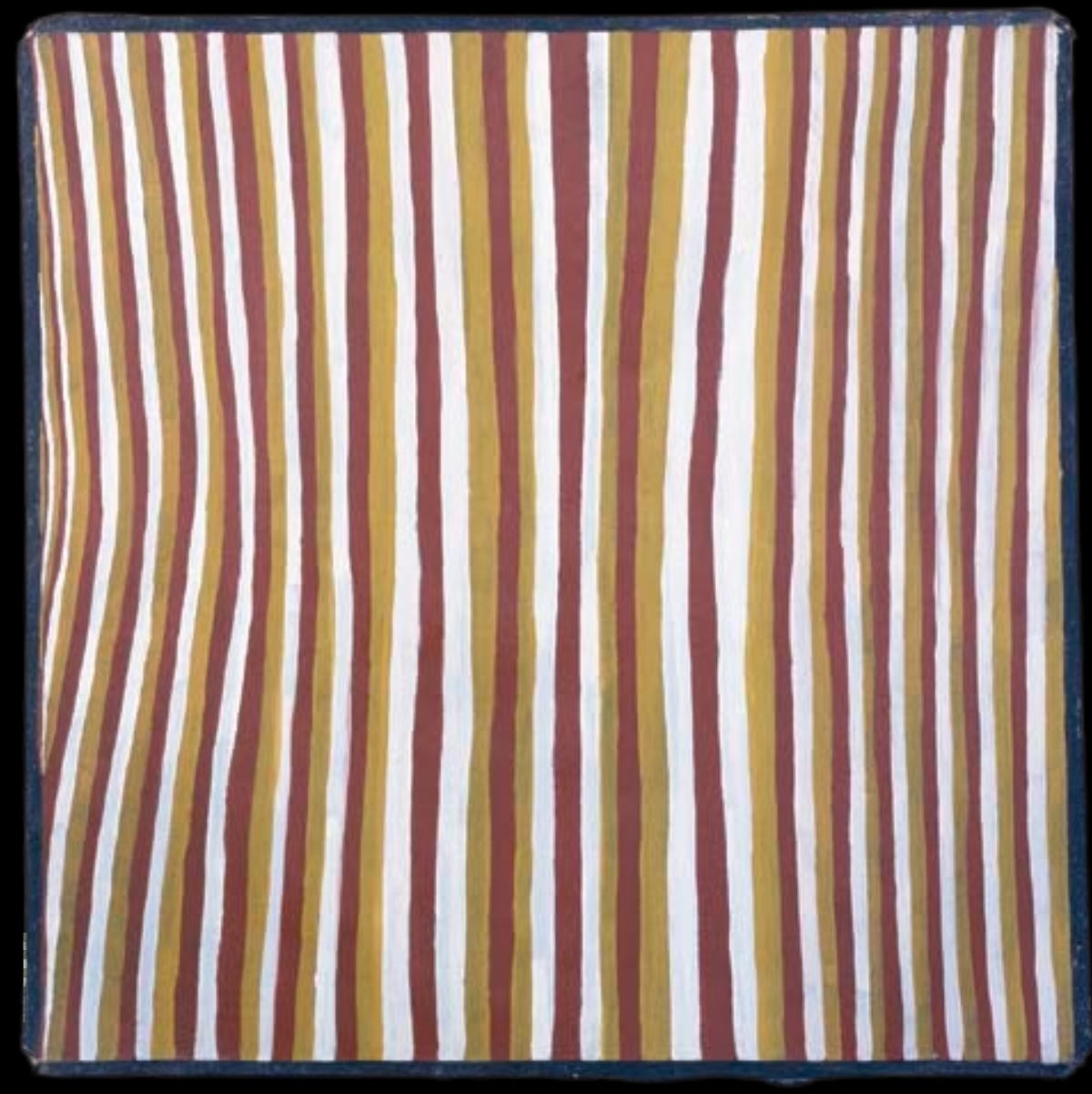
Untitled 1990
Synthetic polymer paint on linen, with Papunya Tula Artists number MN900831 on the reverse,
121 x 121.5 cm
Hammerprice: A$35,000
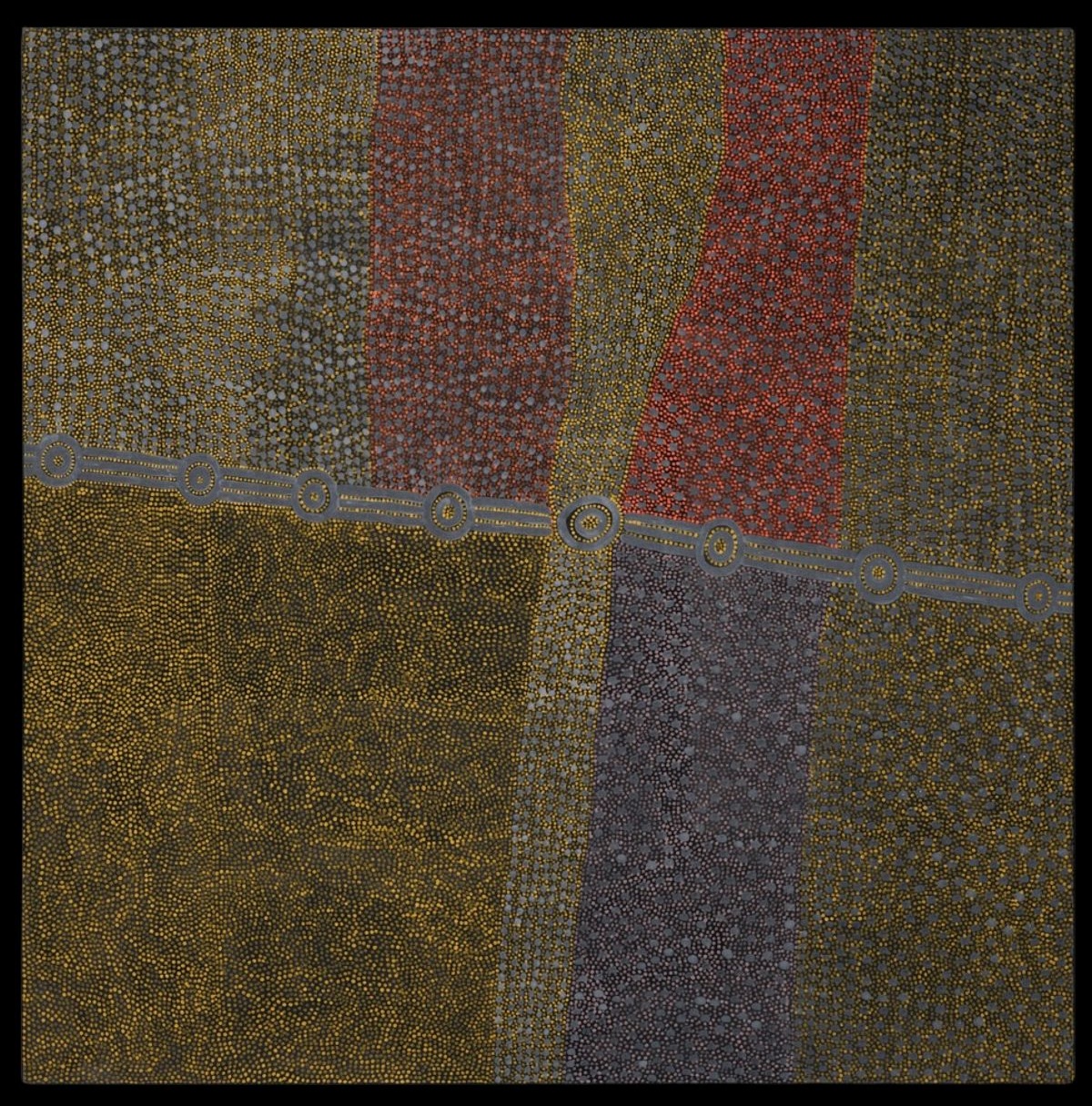
Untitled (Artist’s Grandmother’s Country), 1990
Synthetic polymer paint on canvas,
160 x 160 cm
Hammerprice: A$480,000
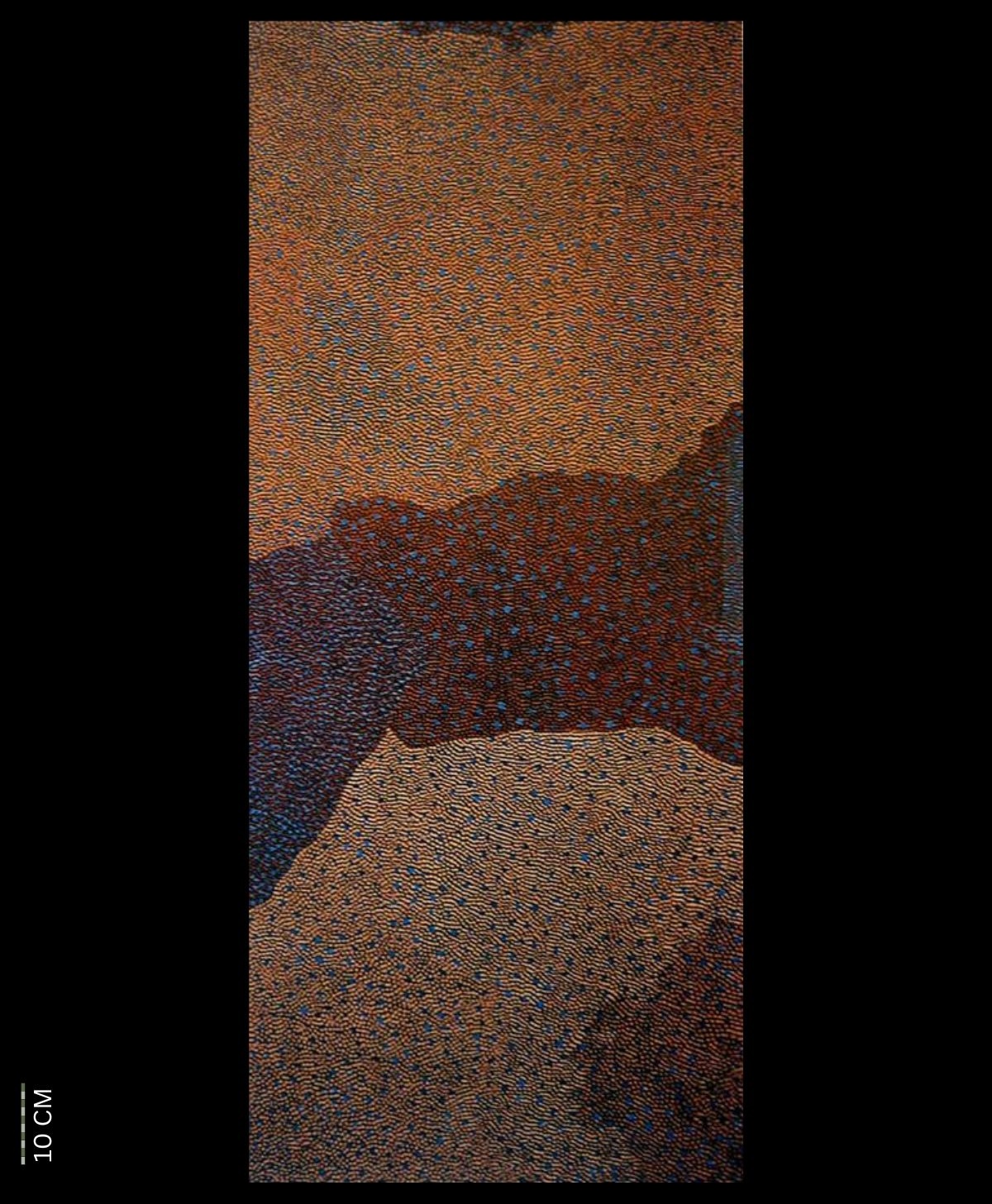
Wallaby Dreaming at Tjunginga 1991
Synthetic polymer paint on canvas, bears artist’s name and Papunya Tula catalogue number MN911255 on the reverse,
140 x 60.5 cm
Hammerprice: A$15,000
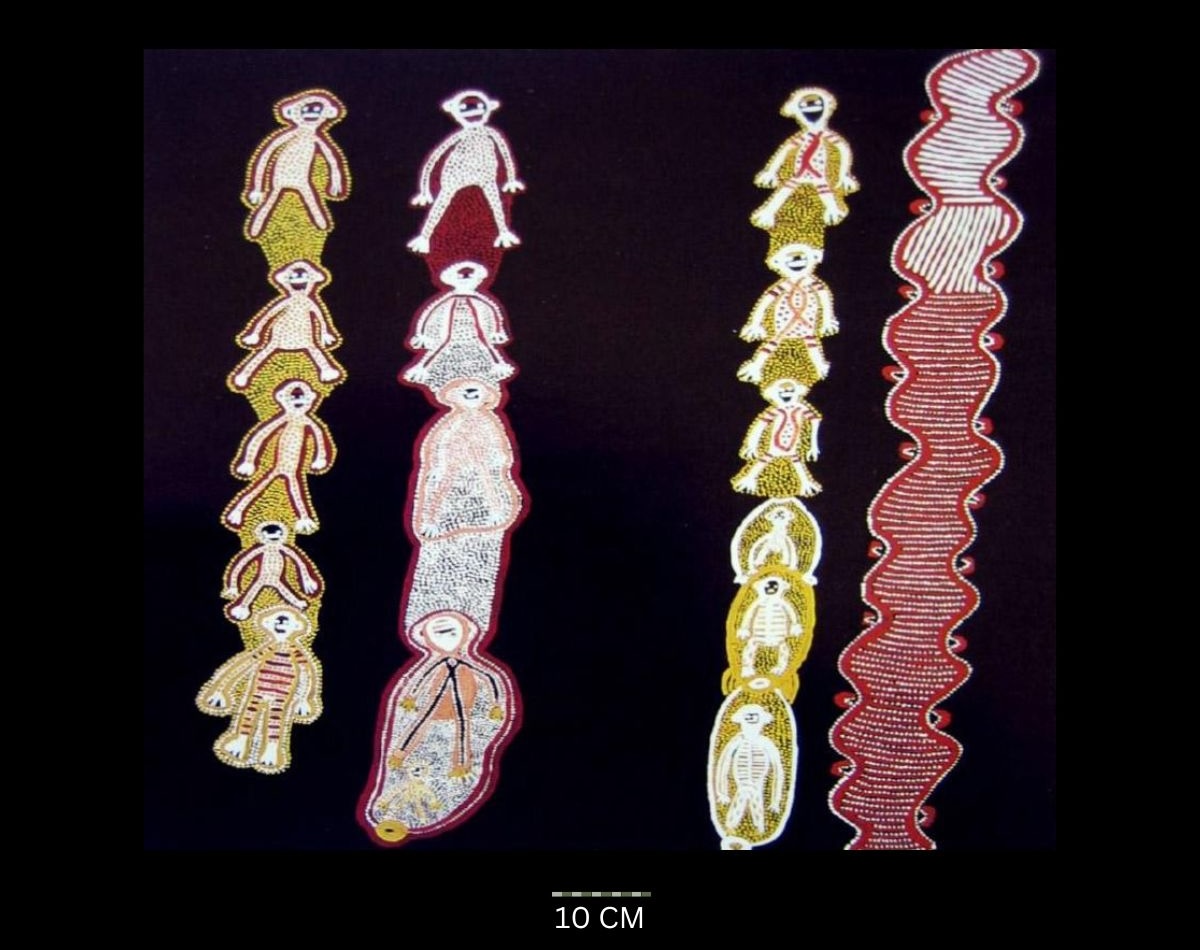
Muruntji 1991
Synthetic polymer paint on canvas, bears artist’s name and Papunya Tula Artists catalogue number MN911222 on the reverse,
91 x 91 cm
Hammerprice: A$5,500
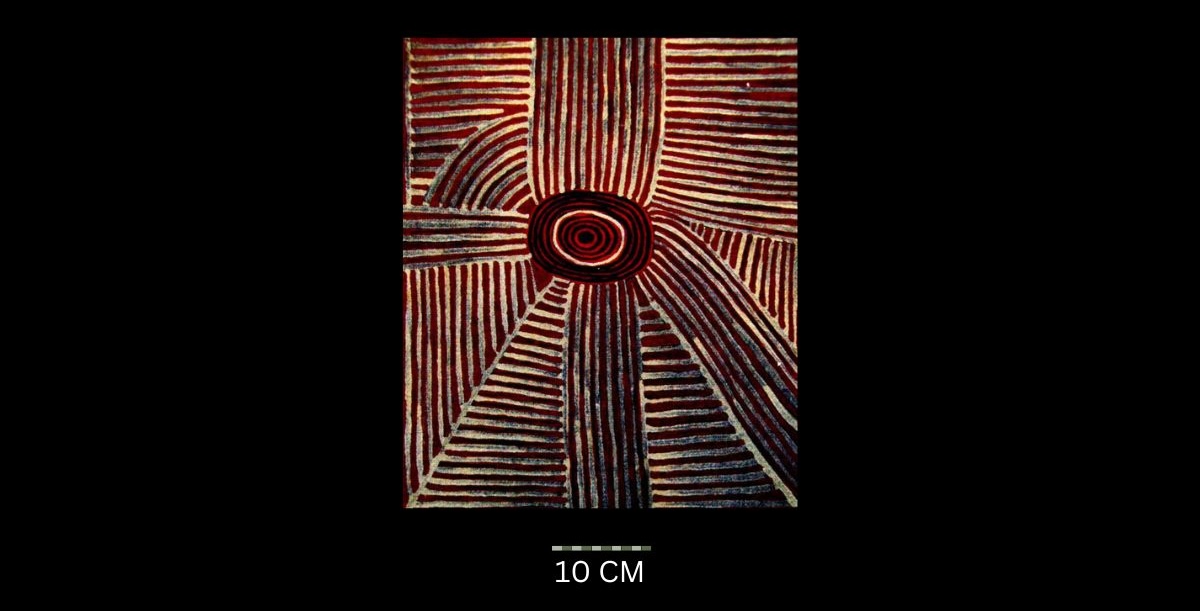
Mt Putarti 1991
Synthetic polymer paint on canvas board, signed Mick on the reverse,
46 x 38 cm
Hammerprice: A$3,500
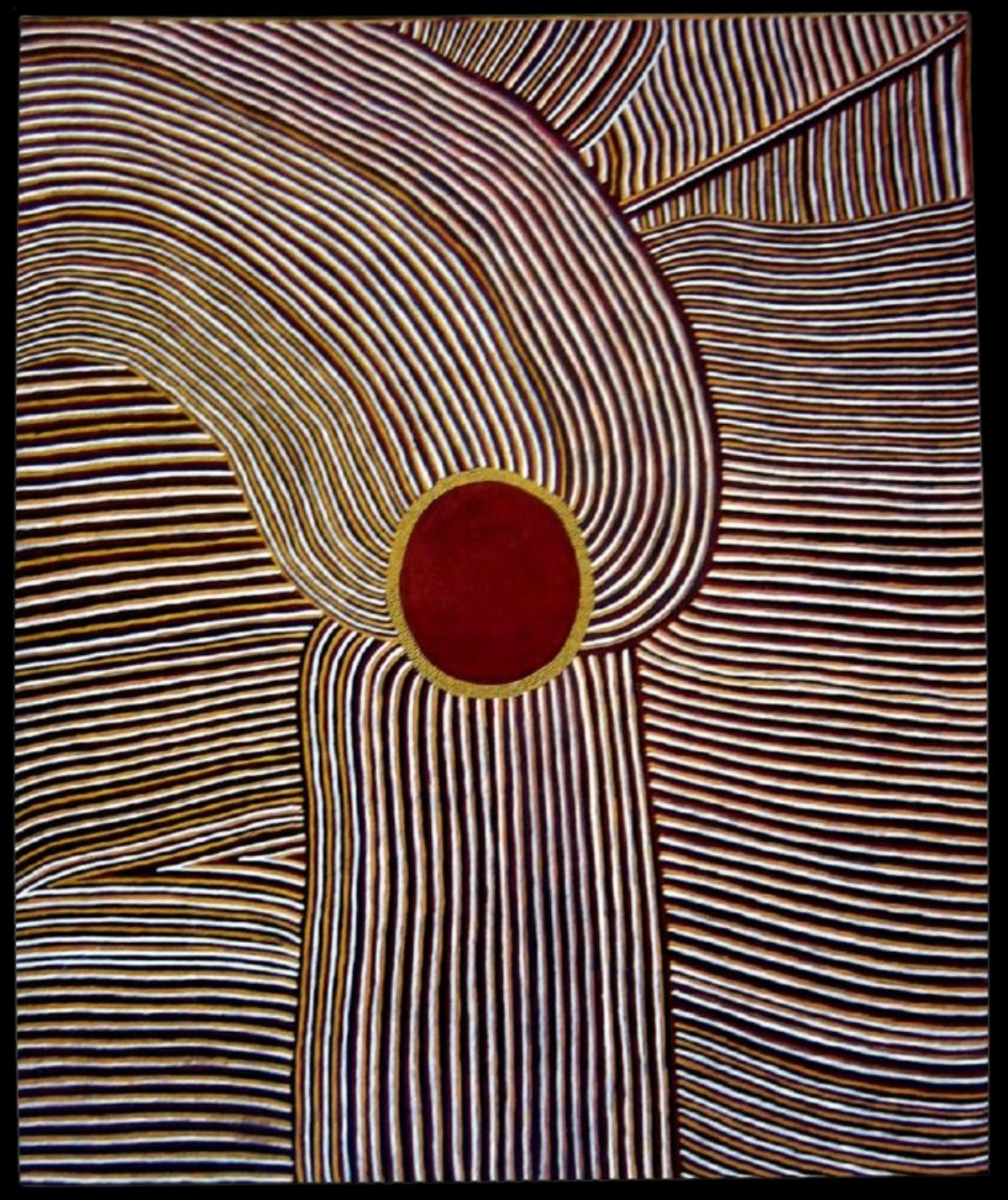
Tjakalpa at Putjanya 1991
Synthetic polymer paint on linen, bears signed Papunya Tula catalogue number MN911135 on the reverse,
183 x 153 cm
Hammerprice: A$55,000
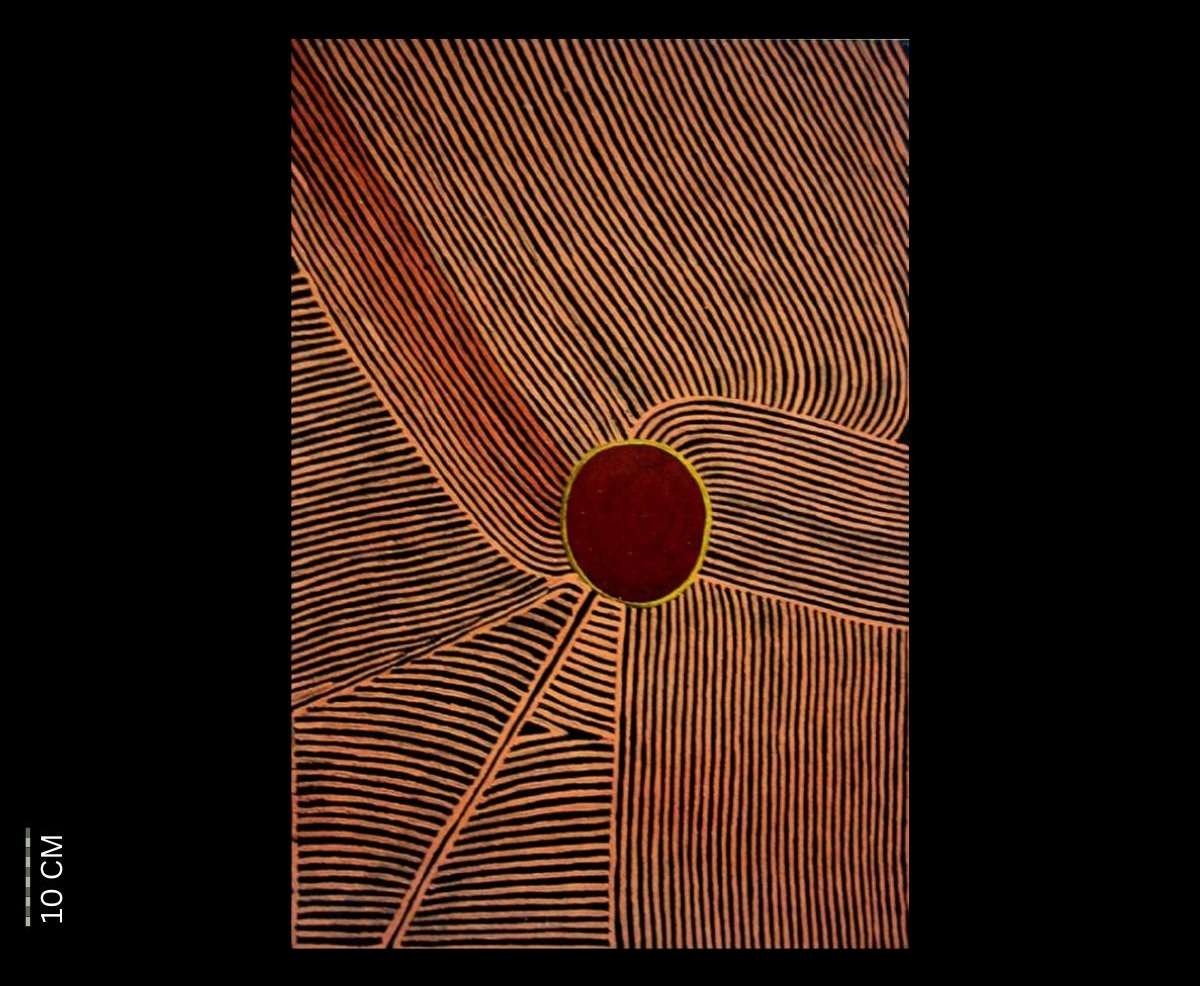
Bandicoot Dreaming 1992
Synthetic polymer paint on linen, bears artist’s name size and Papunya Tula Artist’s catalogue number MN920841,
91 x 61 cm
Hammerprice: A$15,000
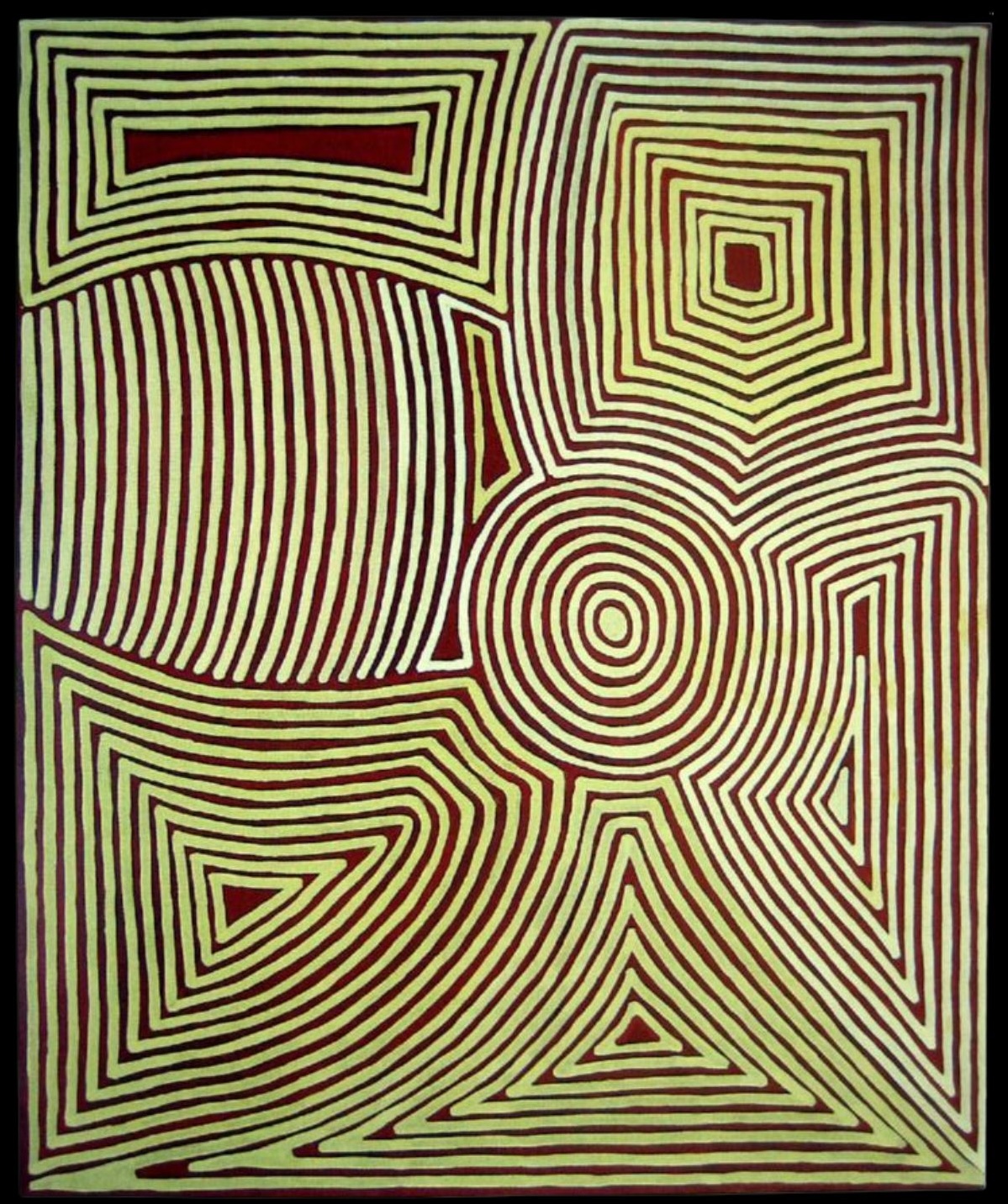
Marnpi 1994
Synthetic polymer paint on linen, bears signed Papunya Tula catalogue number MN941158 on the reverse,
183 x 152 cm
Hammerprice: A$15,000

Small Mouse Dreaming 1994
Synthetic polymer paint on canvas, signed on the reverse,
200 x 125 cm
Hammerprice: A$11,000
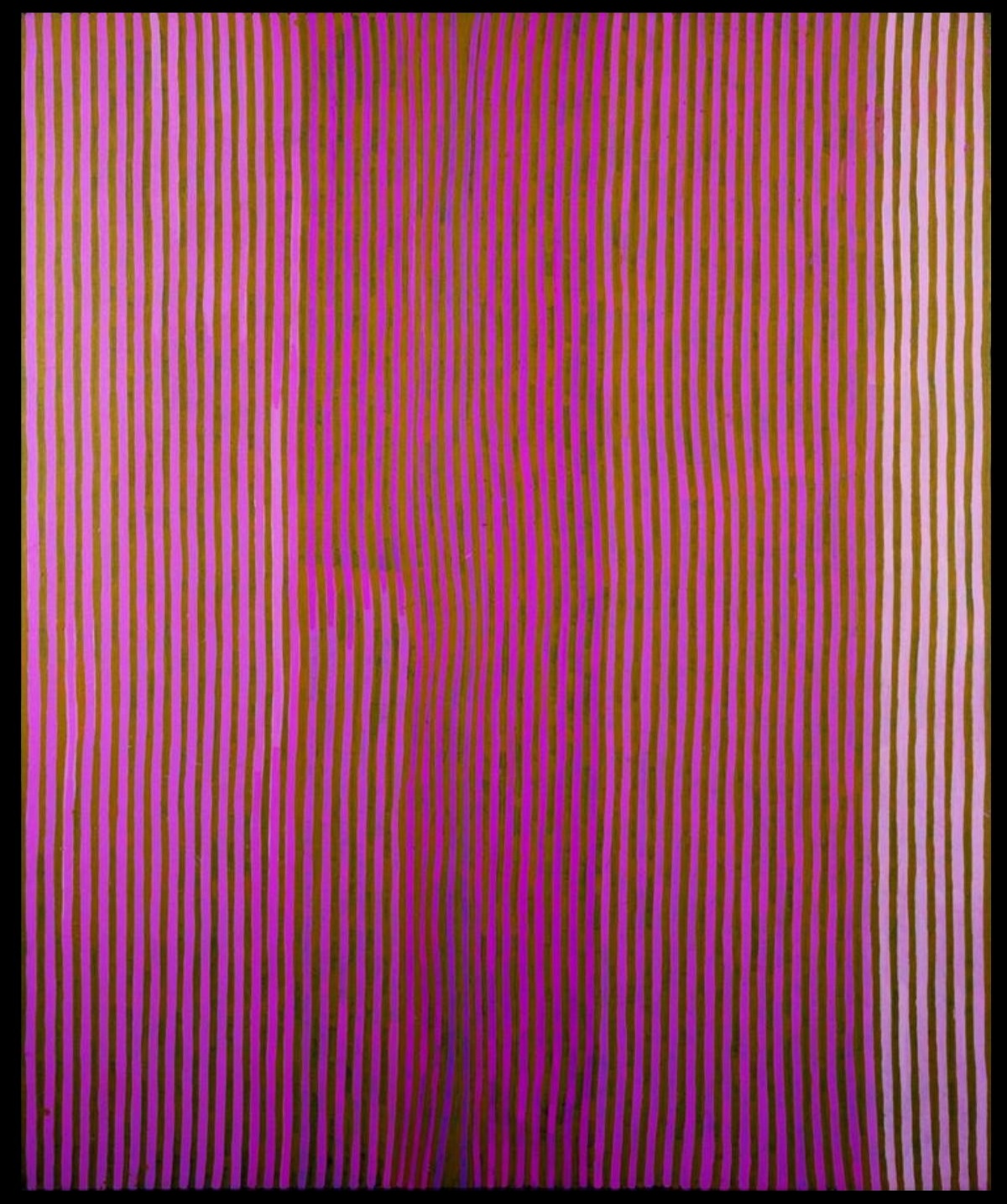
Untitled (Rain Dreaming at Nyunmanu), 1994
Synthetic polymer paint on linen, bears artist’s name and Papunya Tula Artists catalogue number MN940293 on the reverse,
152 x 183 cm
Hammerprice: A$180,000

Tingari, 1995
Synthetic polymer paint on linen,
120 x 179 cm
Hammerprice: A$26,000
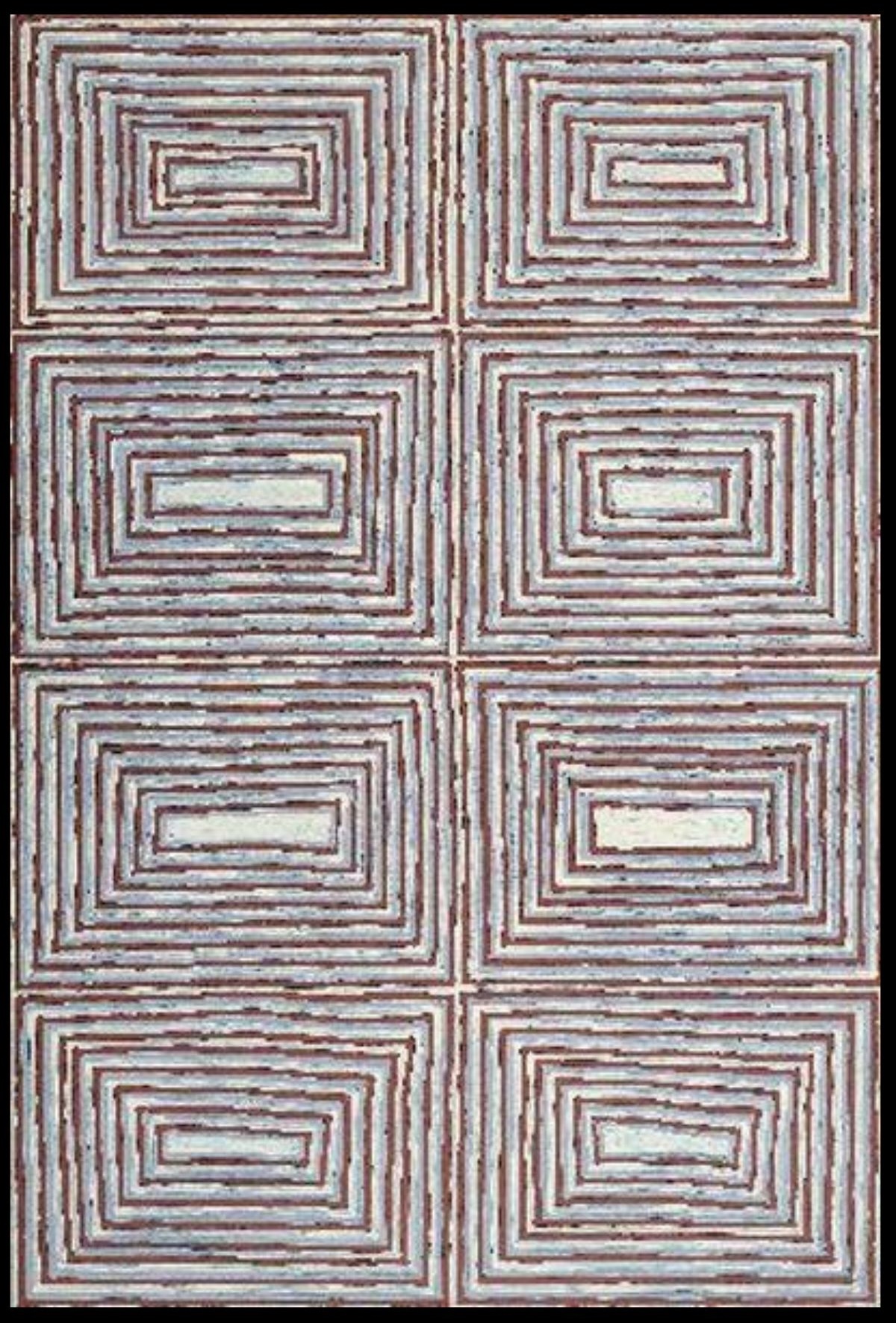
Kangaroo Dreaming at Marnpi, 1995
Synthetic polymer paint on Belgium linen,
183 x 122 cm
Hammerprice: A$26,000
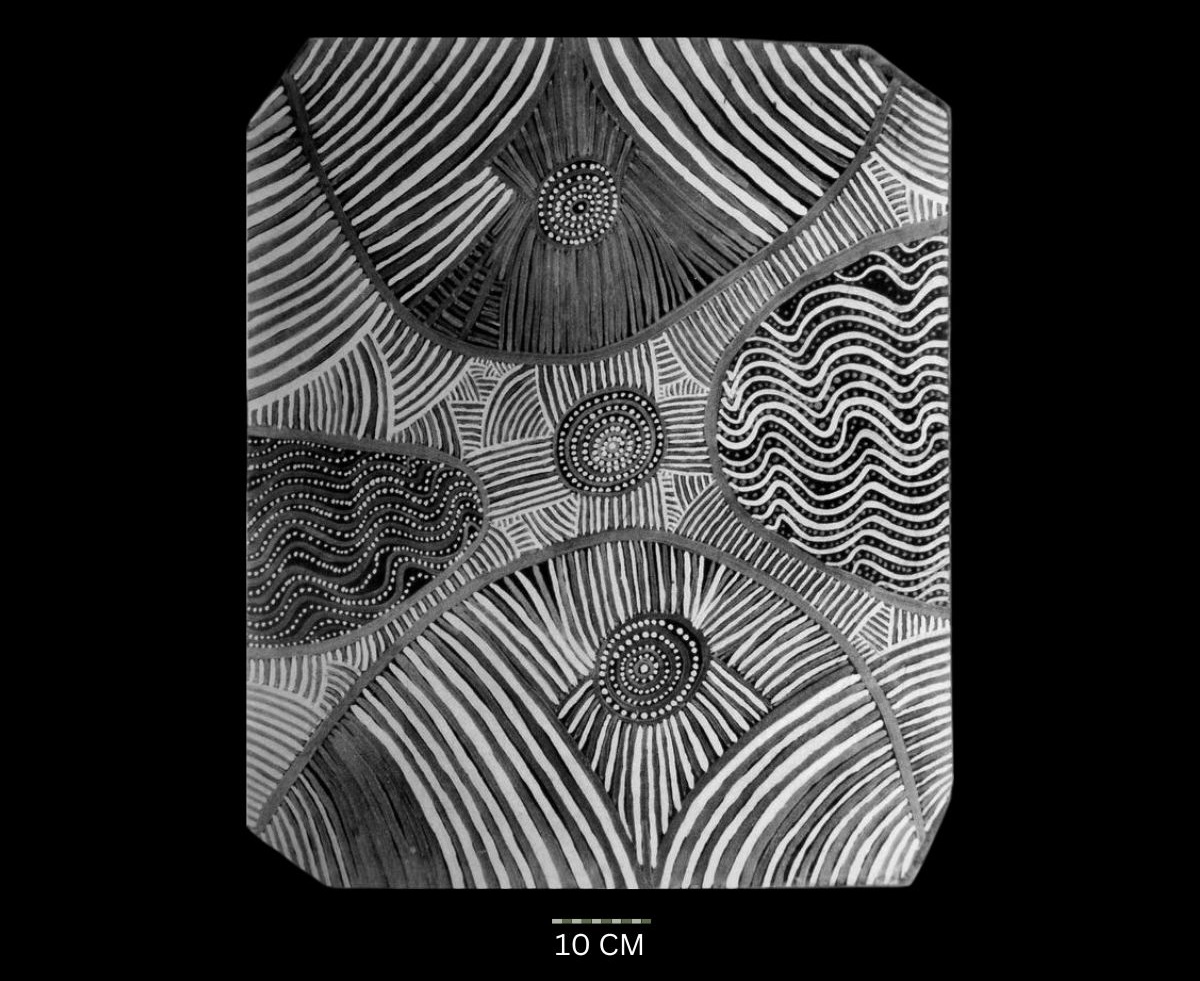
Dingo Dreaming, 1995
Synthetic polymer paint on linen, inscribed verso, ‘Yarpa Art A647’,
85 x 71 cm
Hammerprice: A$600
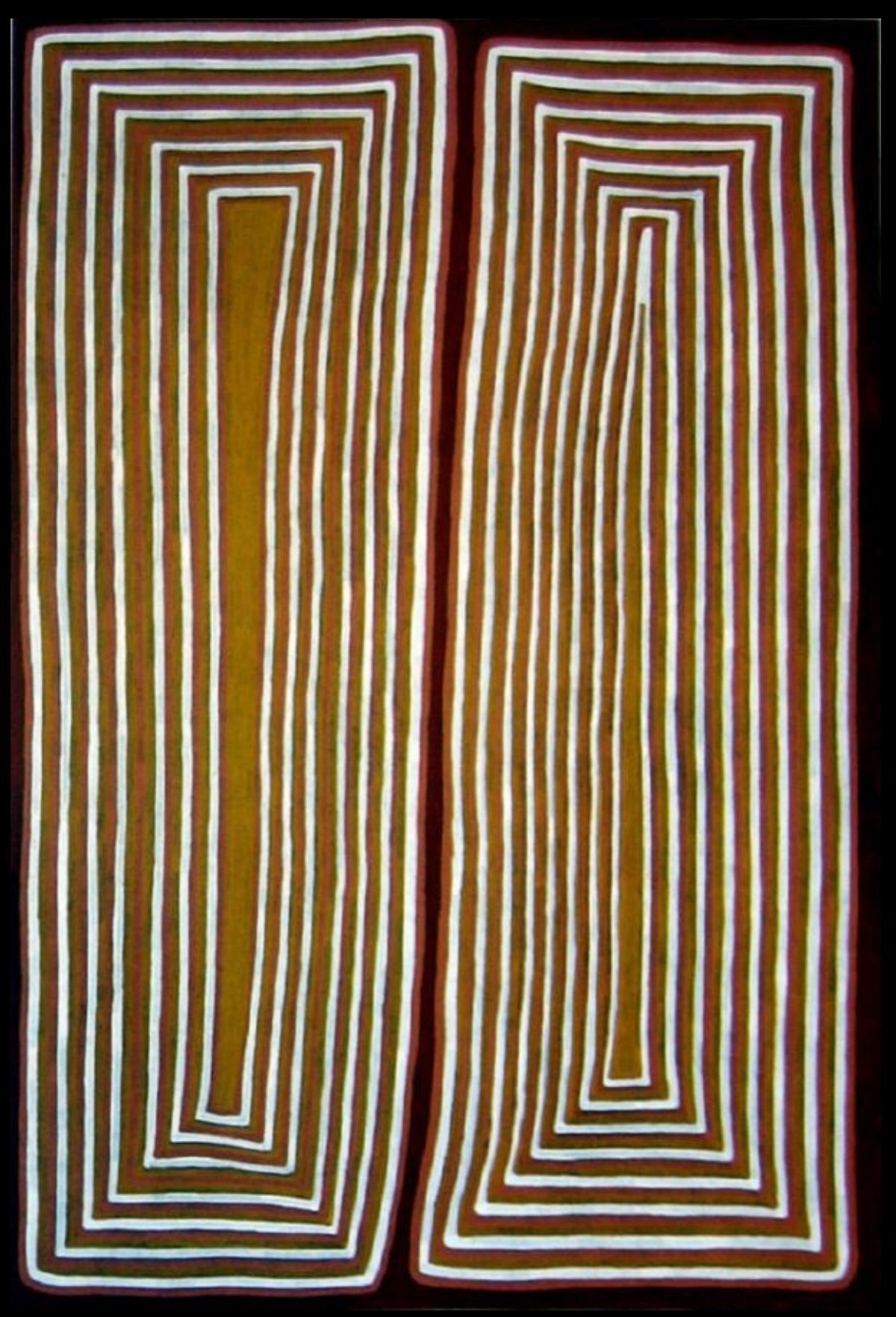
Emu Dreaming at Angkuntjinna 1995
Synthetic polymer paint on linen, bears signed artist’s name, size and Papunya Tula Artists catalogue number MN950873 on the reverse, together with Gallery Gabrielle Pizzi label on the reverse,
183 x 122 cm
Hammerprice: A$44,000
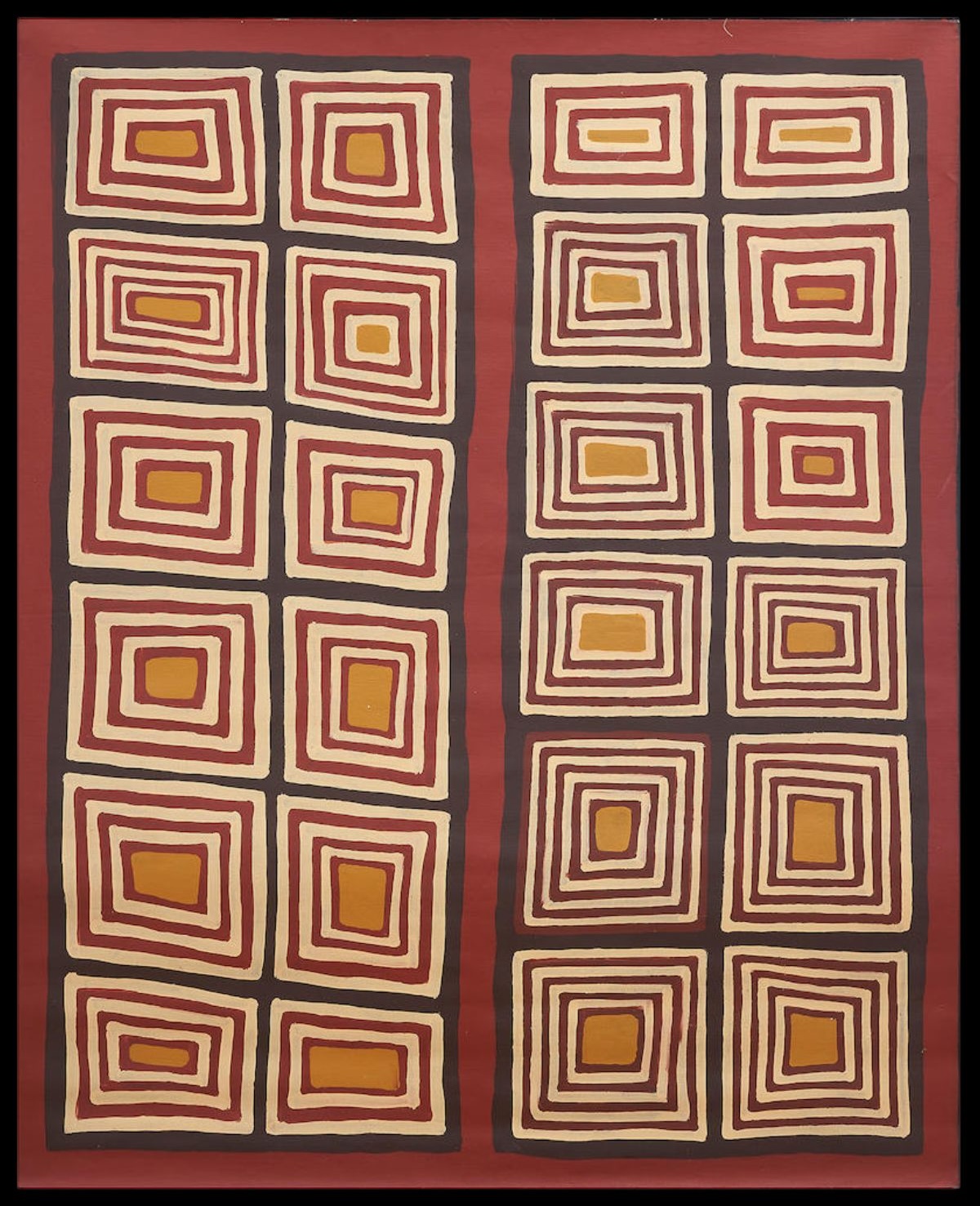
Muruntji, 1996
Synthetic polymer paint on linen, inscribed verso with artist’s name, dimensions and Papunya Tula Artists catalogue number,
153 x 122 cm
Hammerprice: A$20,000
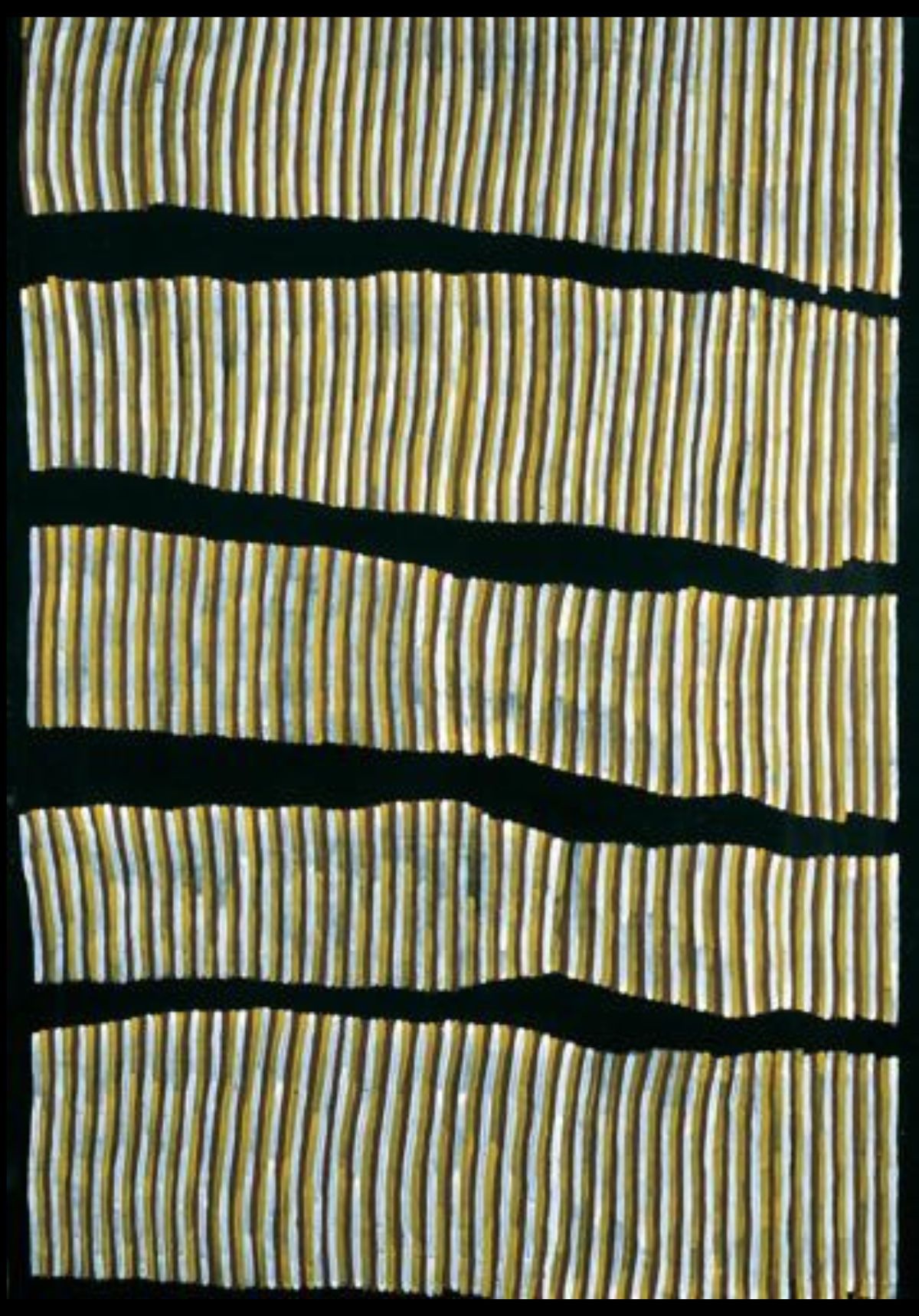
Walmulla – Marnpi, 1996
Acrylic on linen,
130 x 183 cm
Hammerprice: A$42,000
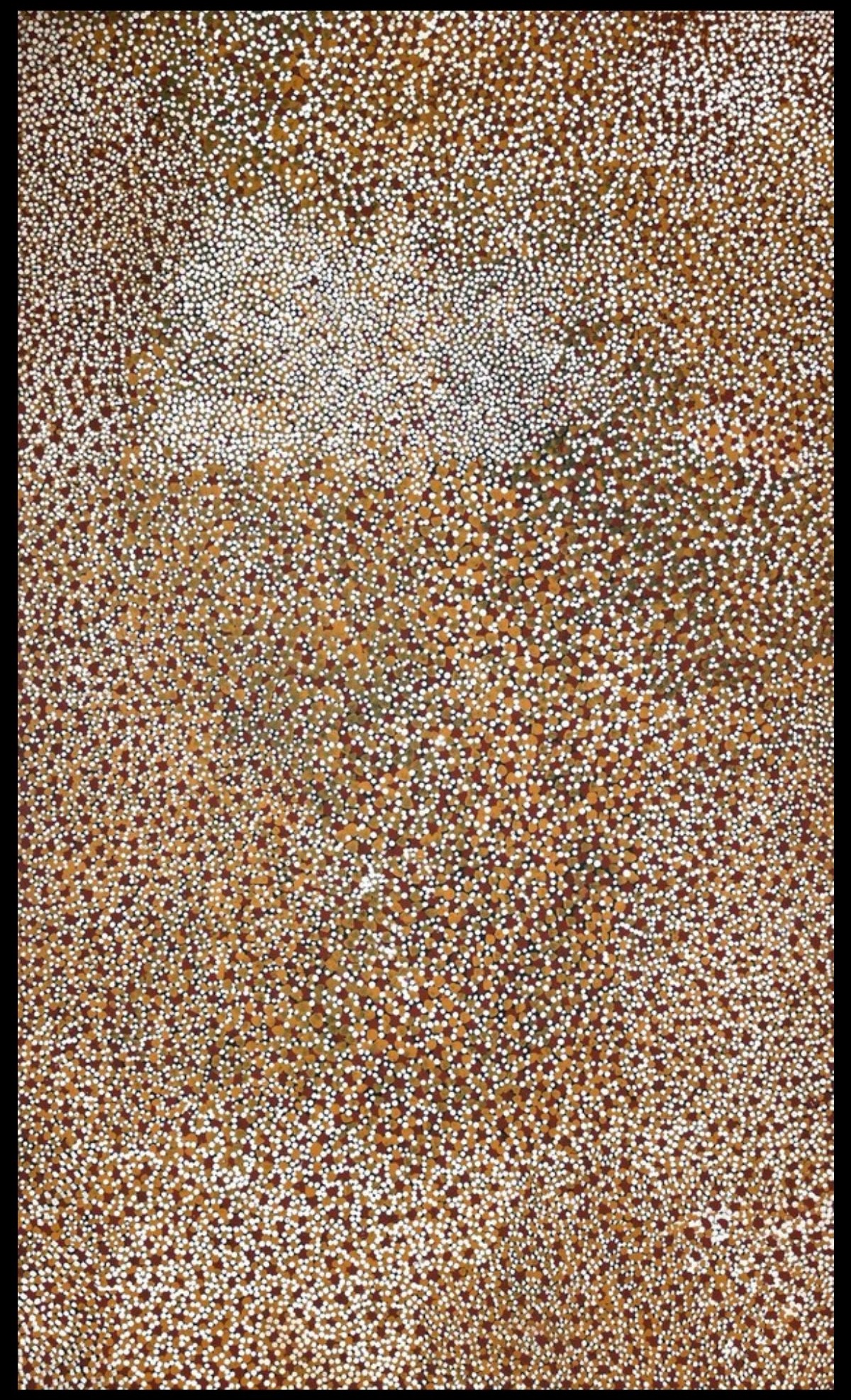
Mouse Dreaming, 1996
Synthetic polymer paint on Belgian linen,
201 x 120.5 cm
Hammerprice: A$36,000
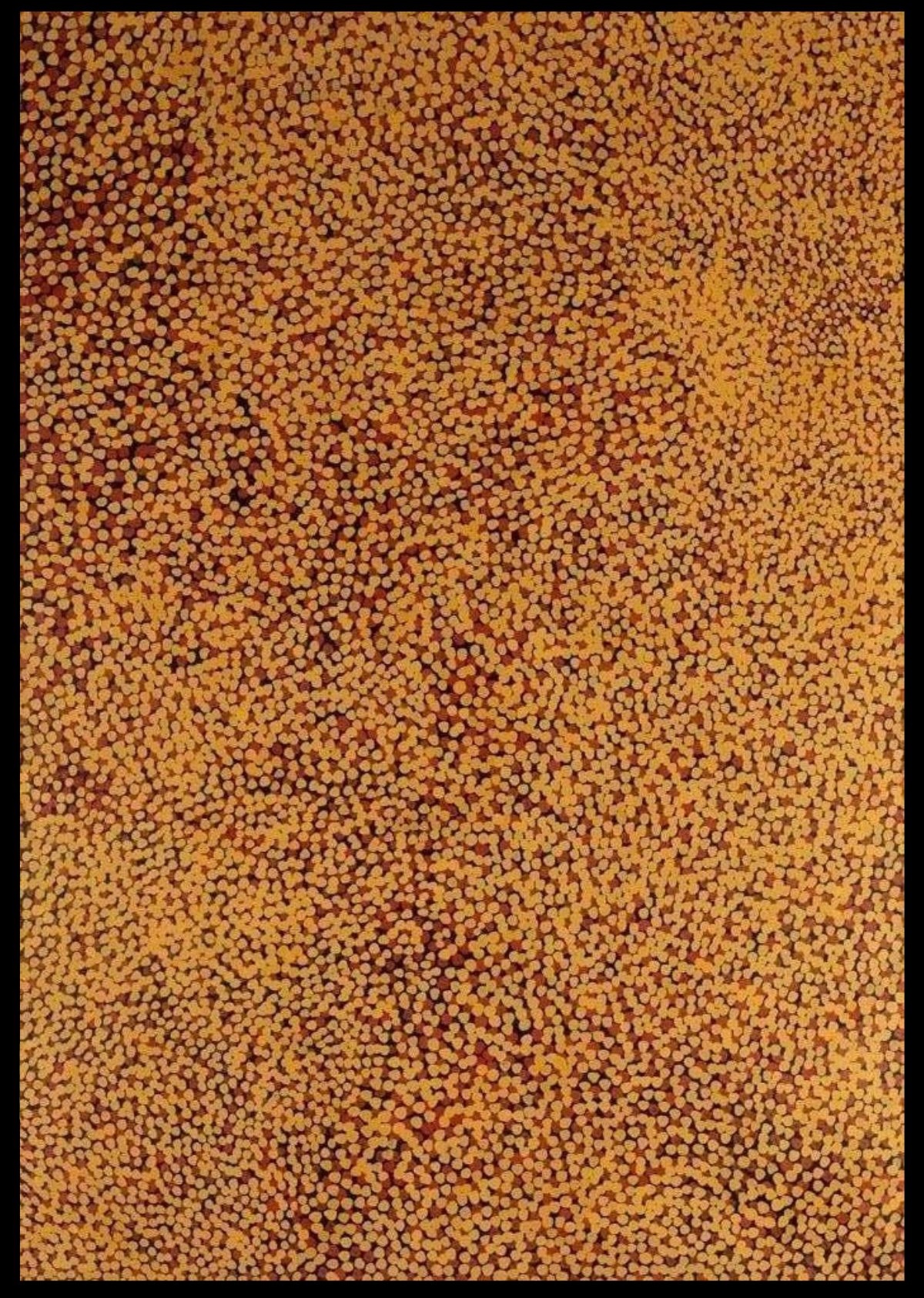
Mouse Dreaming, 1996
Synthetic polymer pain on canvas, signed and titled verso Mick / Mouse Dreaming, catalogue number verso MN961173,
173 x 122 cm
Hammerprice: A$8,000
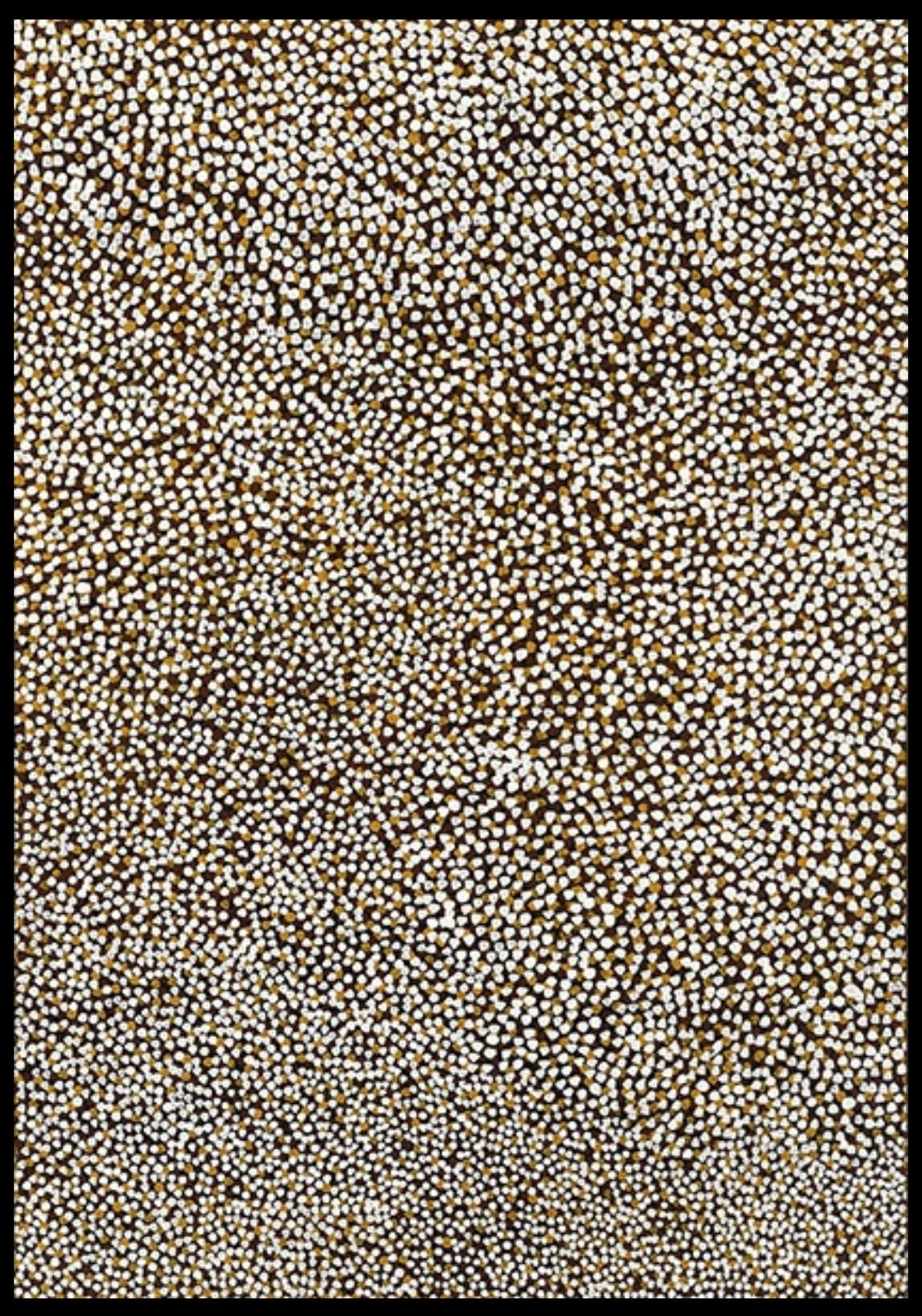
Marsupial Mouse Dreaming 1996
Synthetic polymer paint on canvas, signed verso: Mick, inscribed verso: SN-1304,
125 x 179 cm
Hammerprice: A$38,000
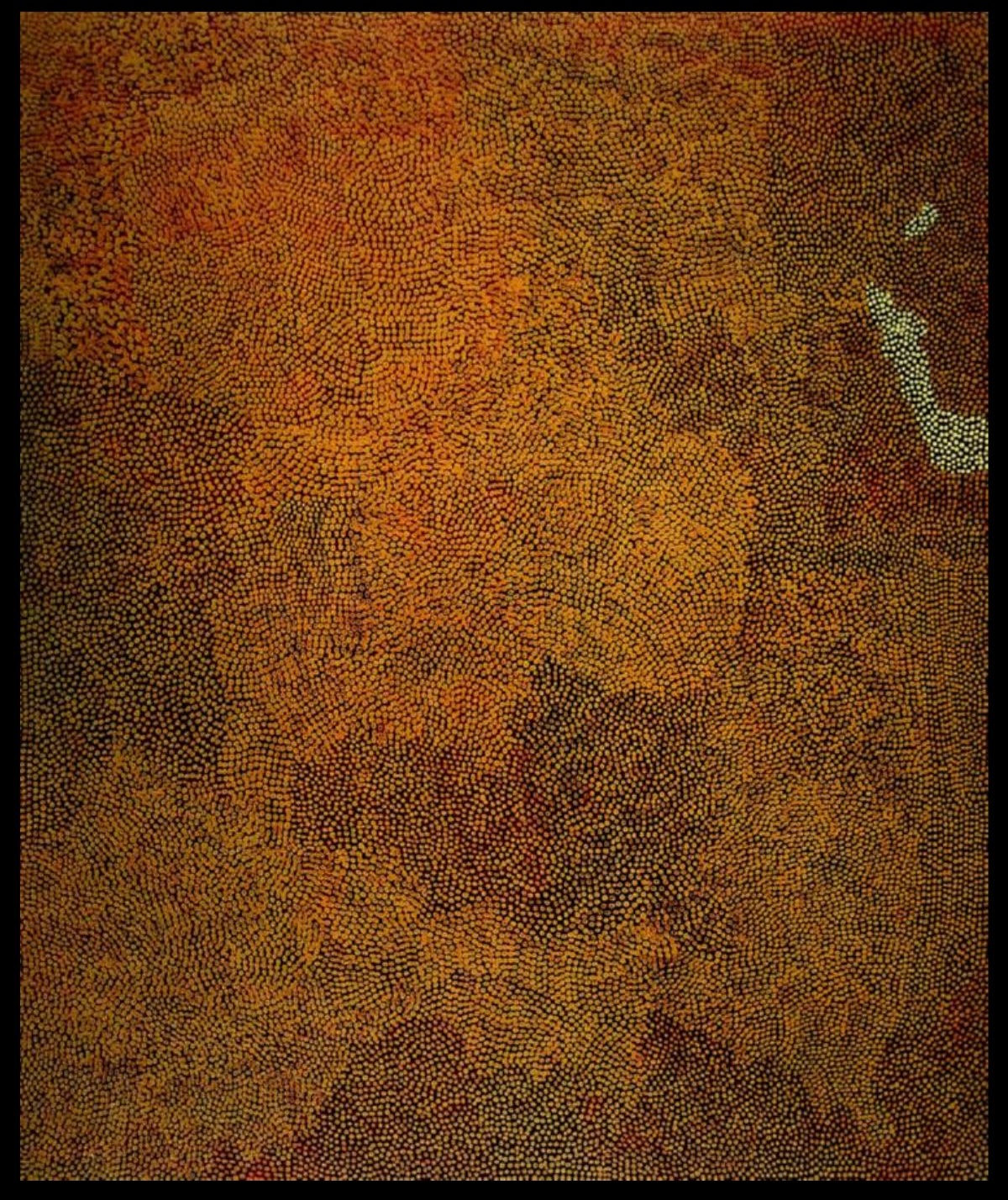
Tjunginpa (Small Mouse Dreaming) at the Site of Tjunginpa 1997
Synthetic polymer paint on linen, bears artists name size and Papunya Tula Artists catalogue number MN971031 on the reverse,
183 x 153 cm
Hammerprice: A$70,000
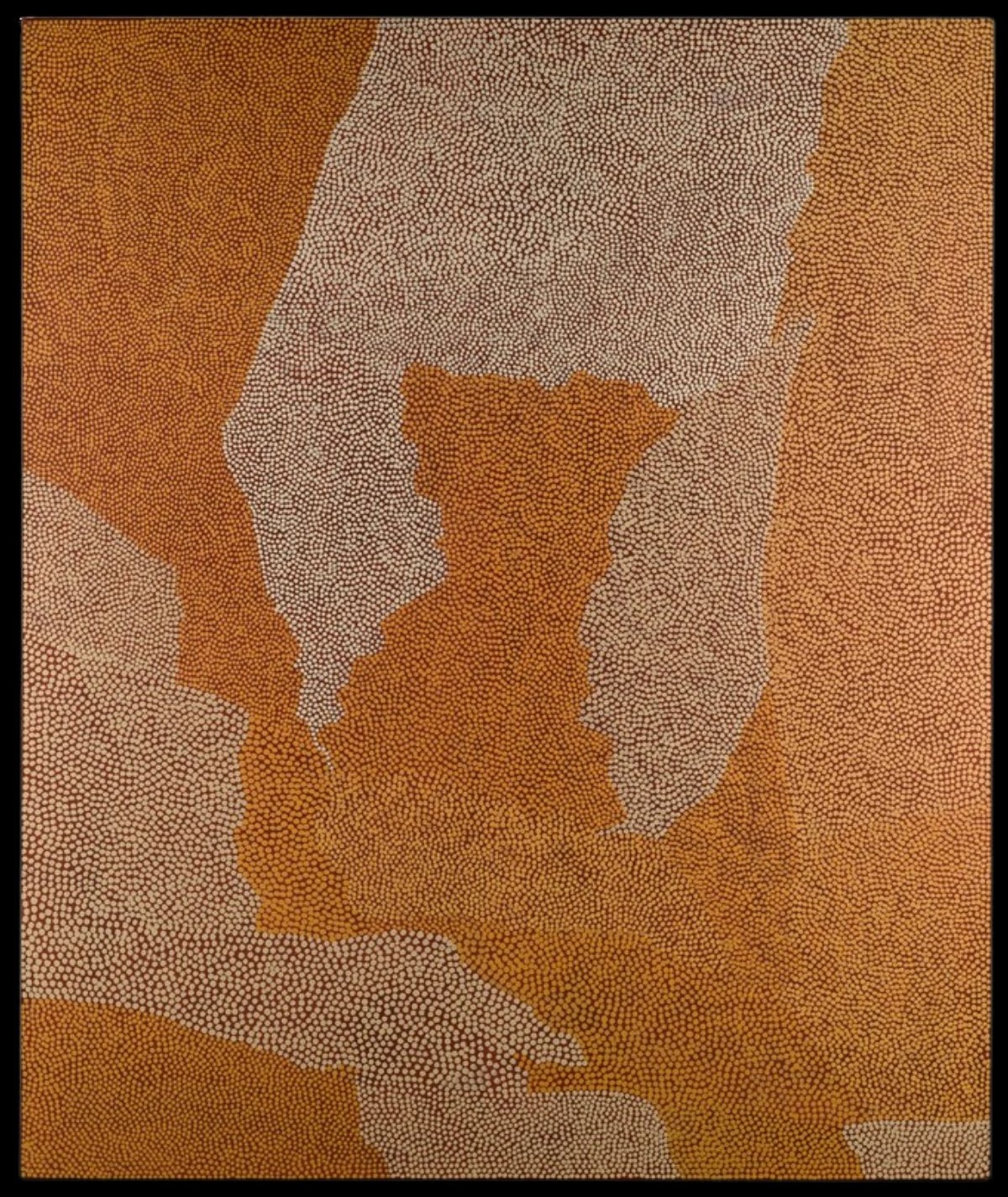
Untitled, Tjunginpa Tjukurrpa (Spinifex Hopping Mouse Dreaming) 1997
Synthetic polymer paint on linen, bears artist’s name and Papunya Tula number MN970699 on the reverse,
183 x 153 cm
Hammerprice: A$52,000
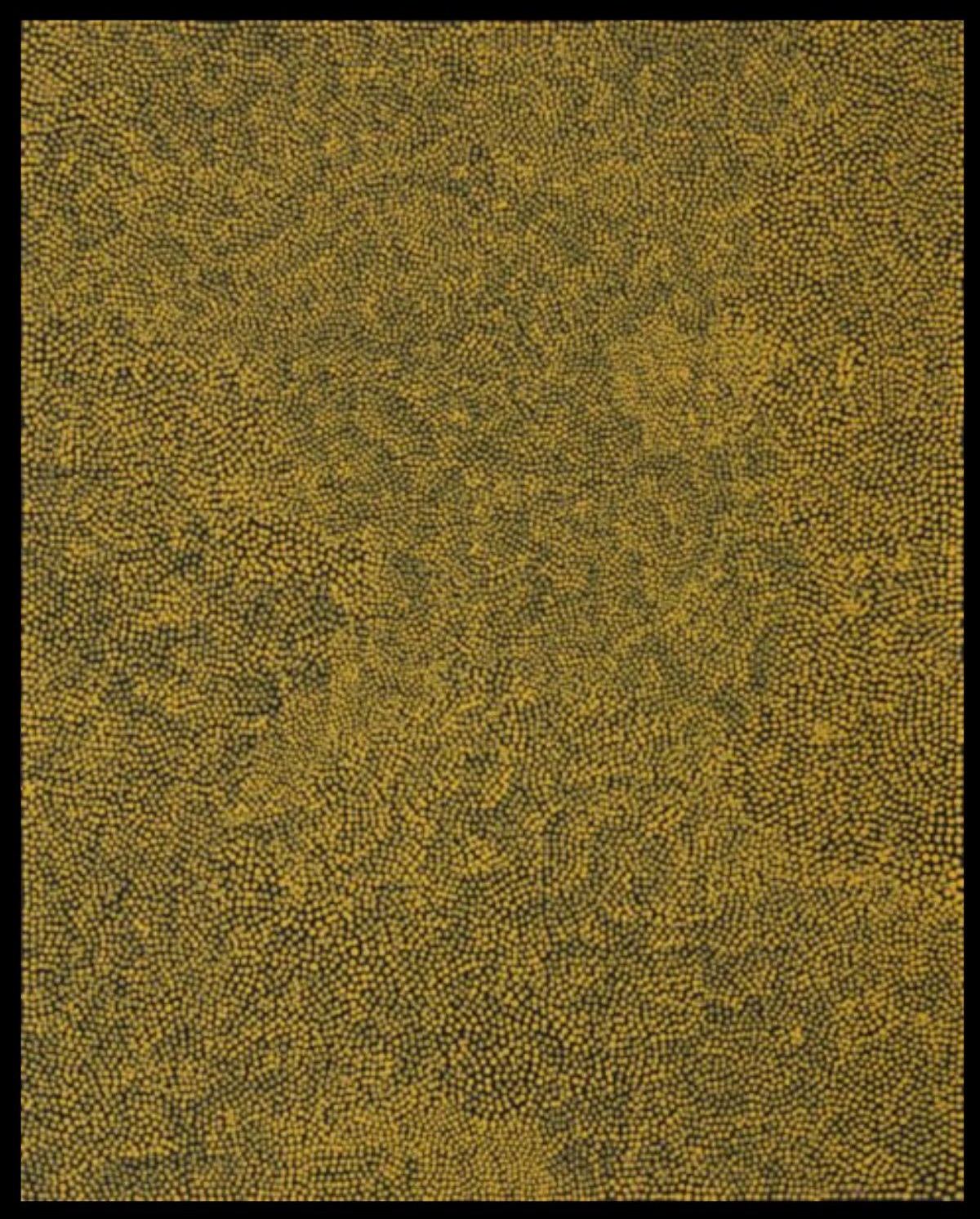
Tjunginpa (Mouse) Dreaming 1997
Synthetic polymer paint on linen, bears artist’s name and Papunya Tula Artists catalogue number MN970853 on the reverse,
122 x 153 cm
Hammerprice: A$25,000
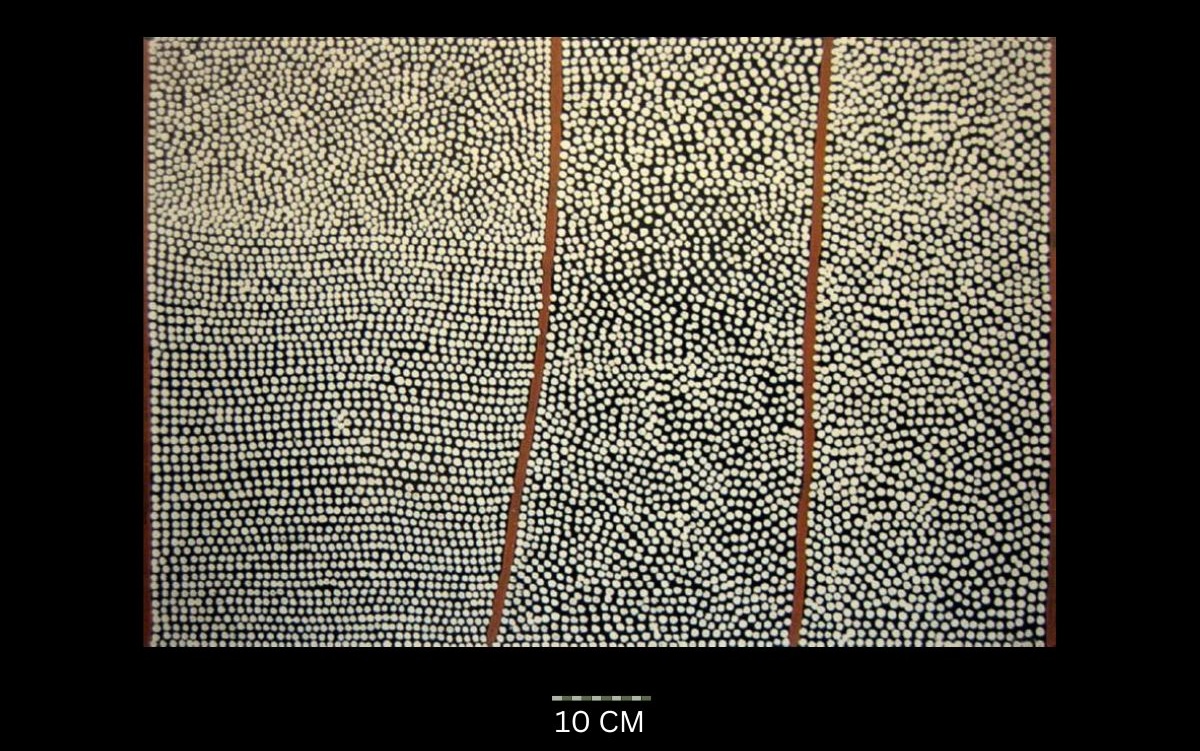
Tjunginpa (Mouse) Dreaming 1997
Synthetic polymer paint on linen, bears artist’s name, size and Papunya Tula Artists catalogue number MN970826,
91 x 61 cm
Hammerprice: A$13,000
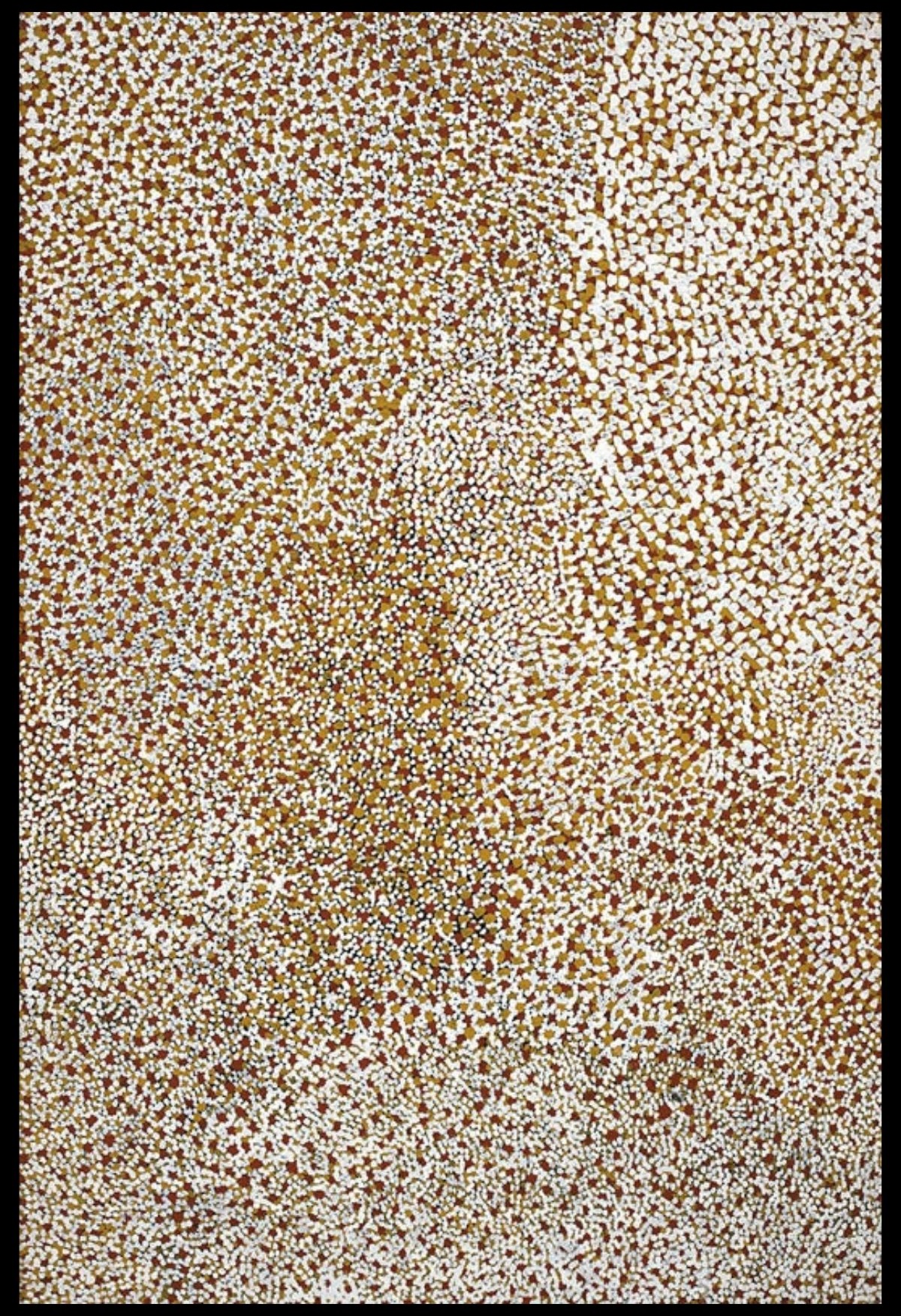
Mouse Story 1997
Synthetic polymer paint on linen, inscribed verso: # Mick Namerari Tjapaltjari/ Mouse Dreaming/ Kamnt 003-79 #,
182.5 x 122 cm
Hammerprice: A$21,000
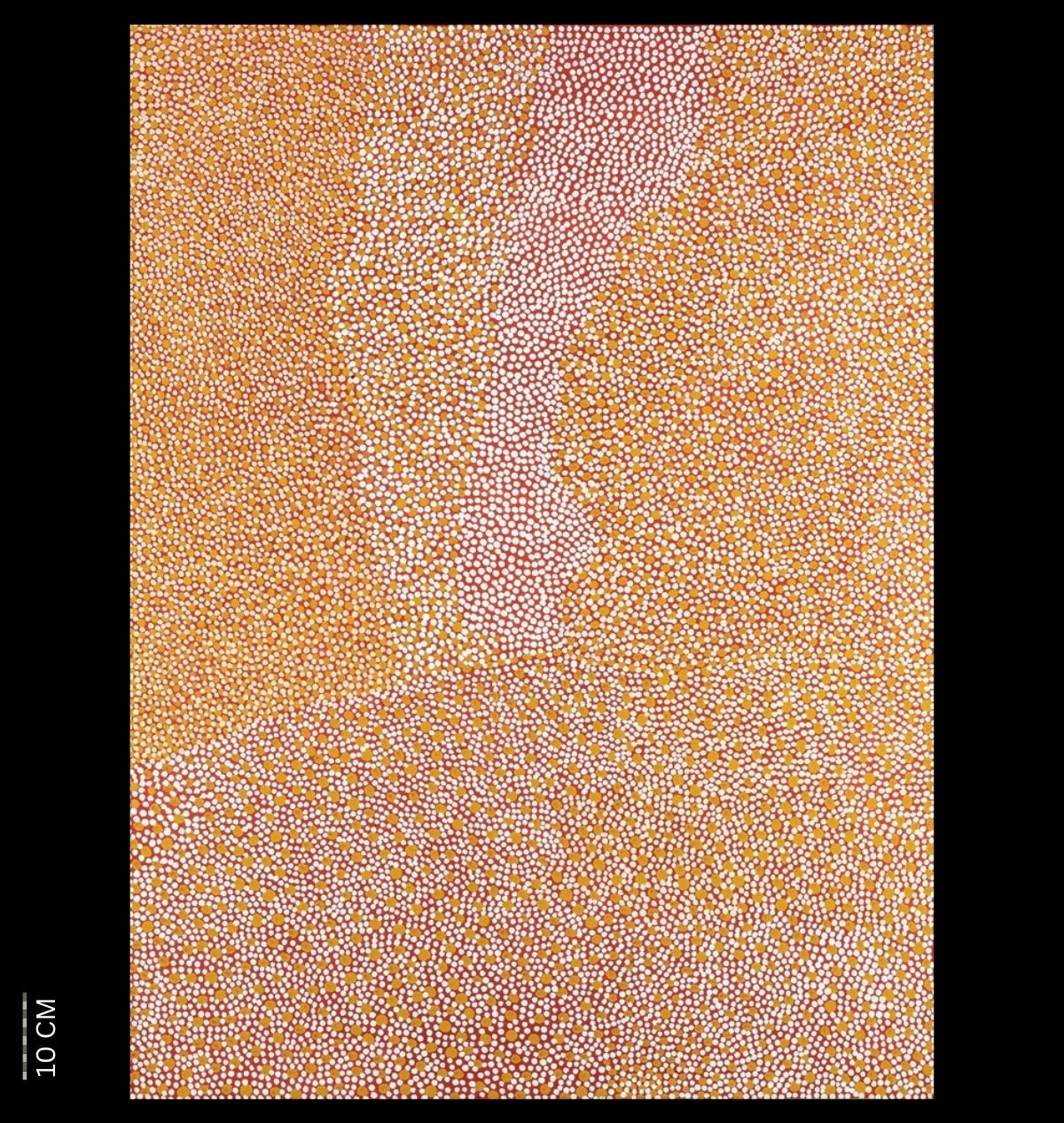
Tjunginpa (Mouse) Dreaming, 1997
Synthetic polymer paint on canvas, bears inscription verso: artist’s name, size and Papunya Tula Artists cat. MN970540,
122 x 91 cm
Hammerprice: A$18,000
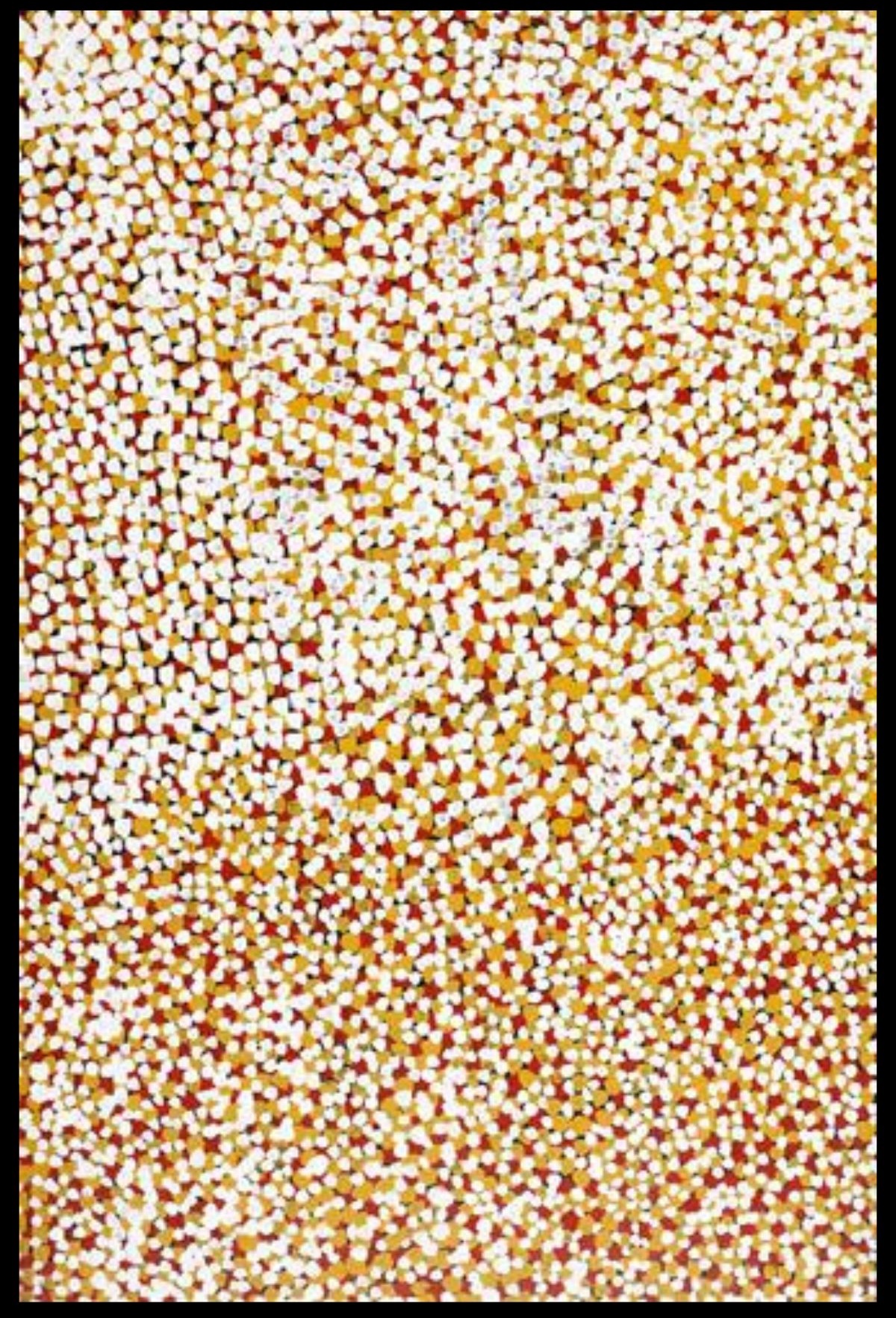
Marsupial Mice Dreaming 1997
Acrylic on canvas, inscribed verso: Mick Namarari Tjapaltjarri/ Marsupial Mice Dreaming/ 1997/ SN-1052, accompanied by a Jinta Desert Art certificate of authenticity,
128 x 85.5 cm
Hammerprice: A$13,000
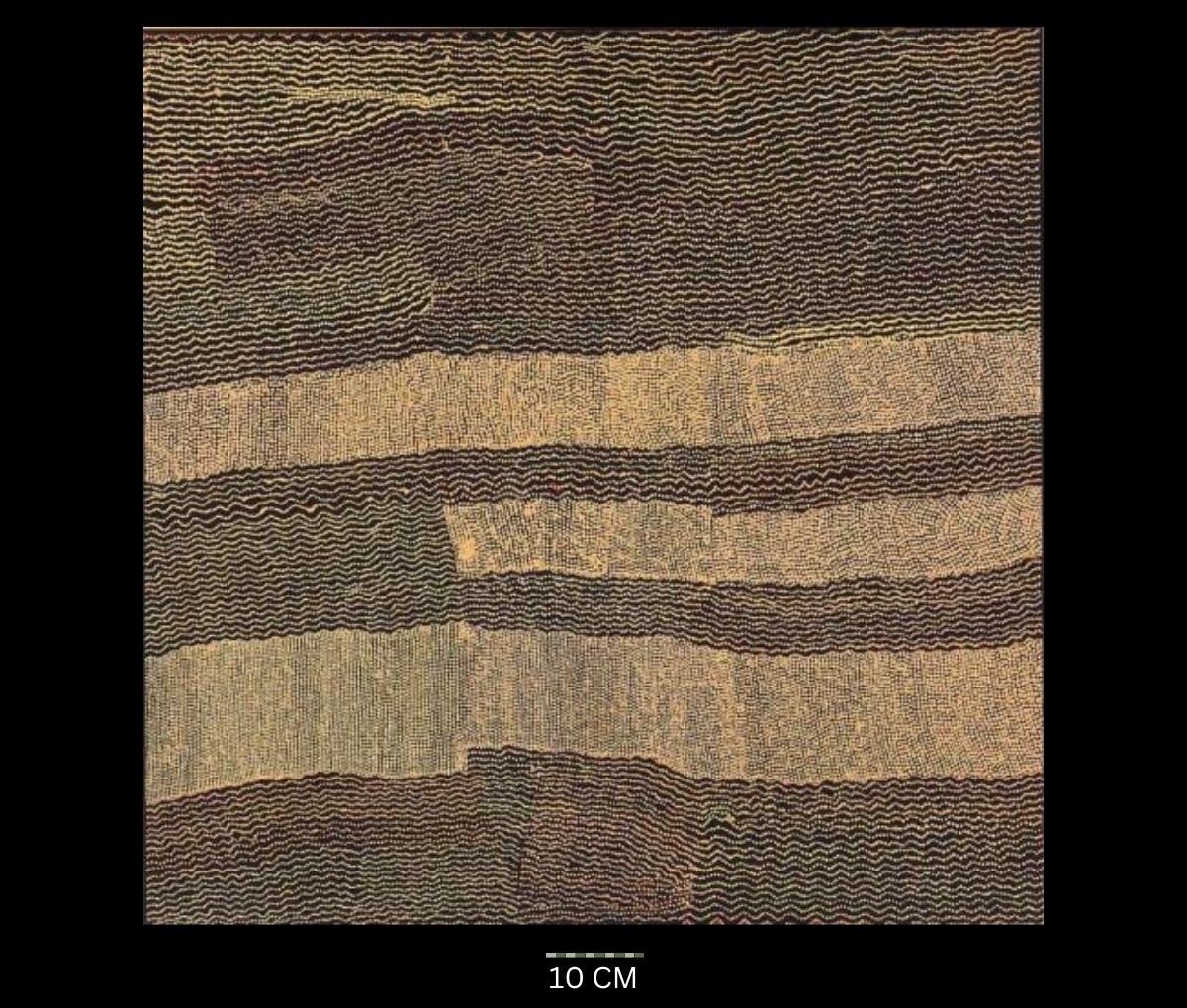
Tjunginpa (Mouse) Dreaming 1997
Synthetic polymer paint on linen, bears artist’s name, size and Papunya Tula Artists catalogue number MN970826,
91 x 61 cm
Hammerprice: A$12,000
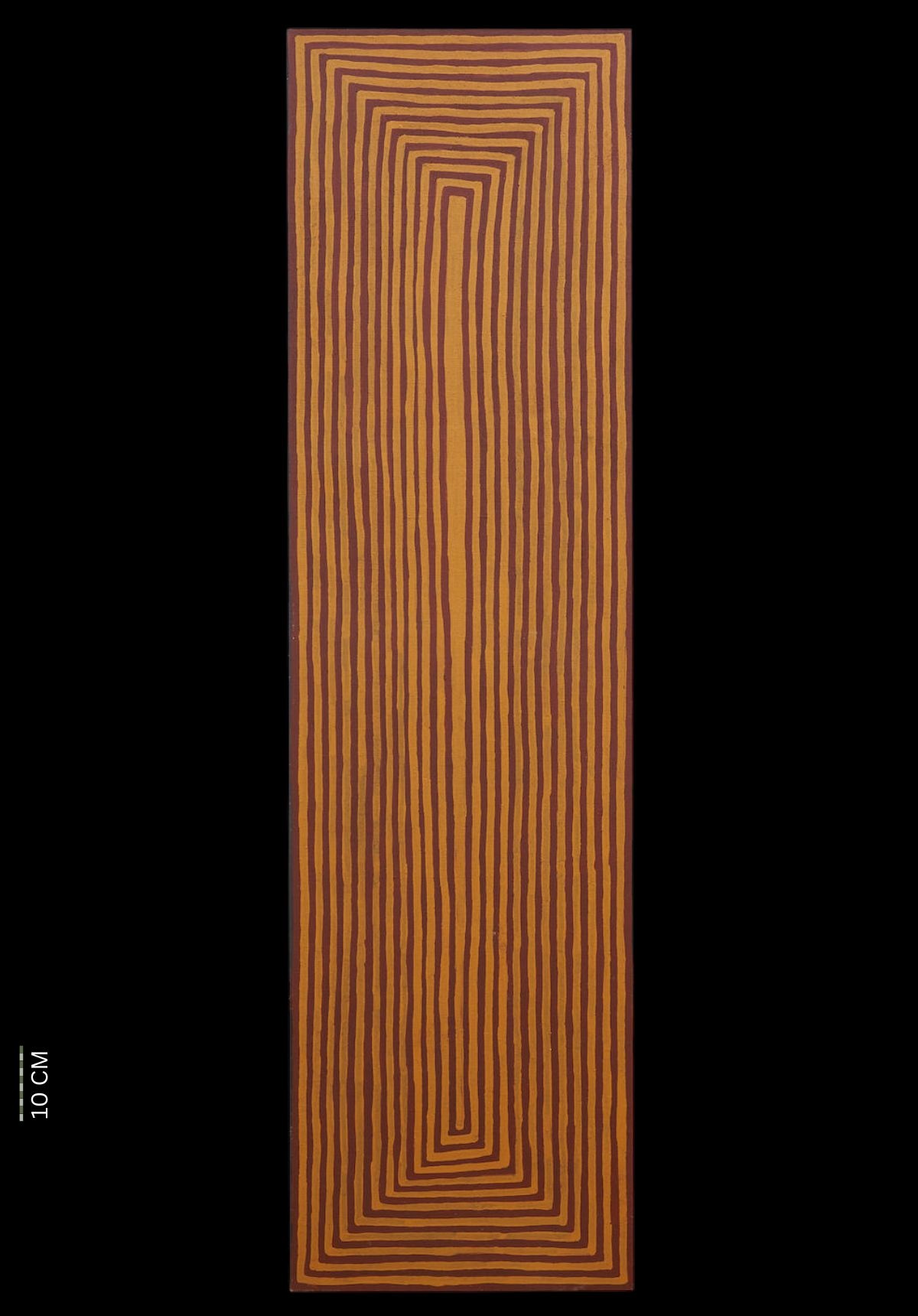
Mulpingya, 1997
Synthetic polymer paint on linen, inscribed verso with artist’s name, dimensions and Papunya Tula Artists catalogue number,
168 x 46 cm
Hammerprice: A$16,000
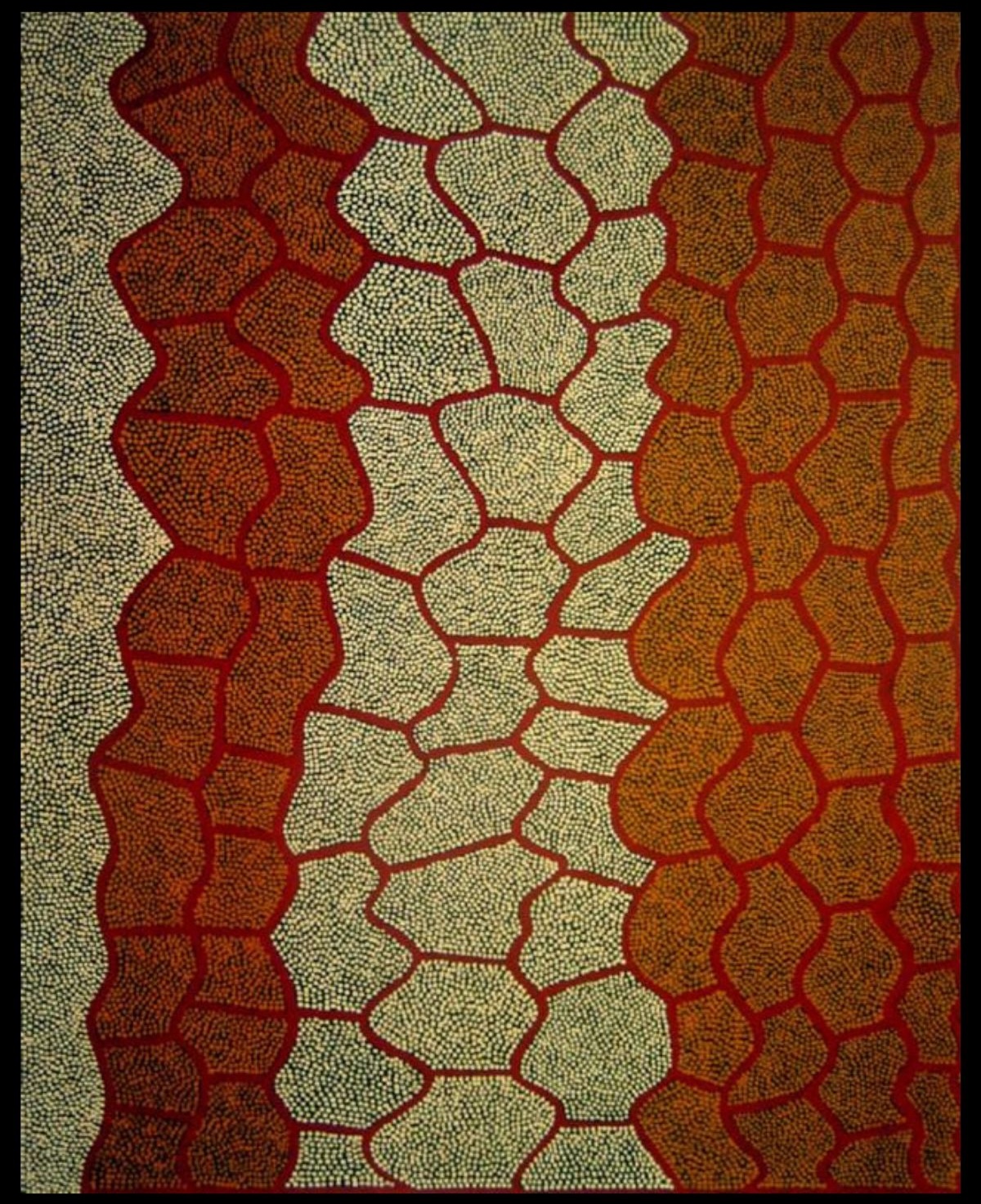
Marnpi Rockhole 1997
Synthetic polymer paint on linen, bears artist’s name, size and Papunya Tula Artists catalogue number MN970933 on the reverse,
153 x 122.5 cm
Hammerprice: A$69,000
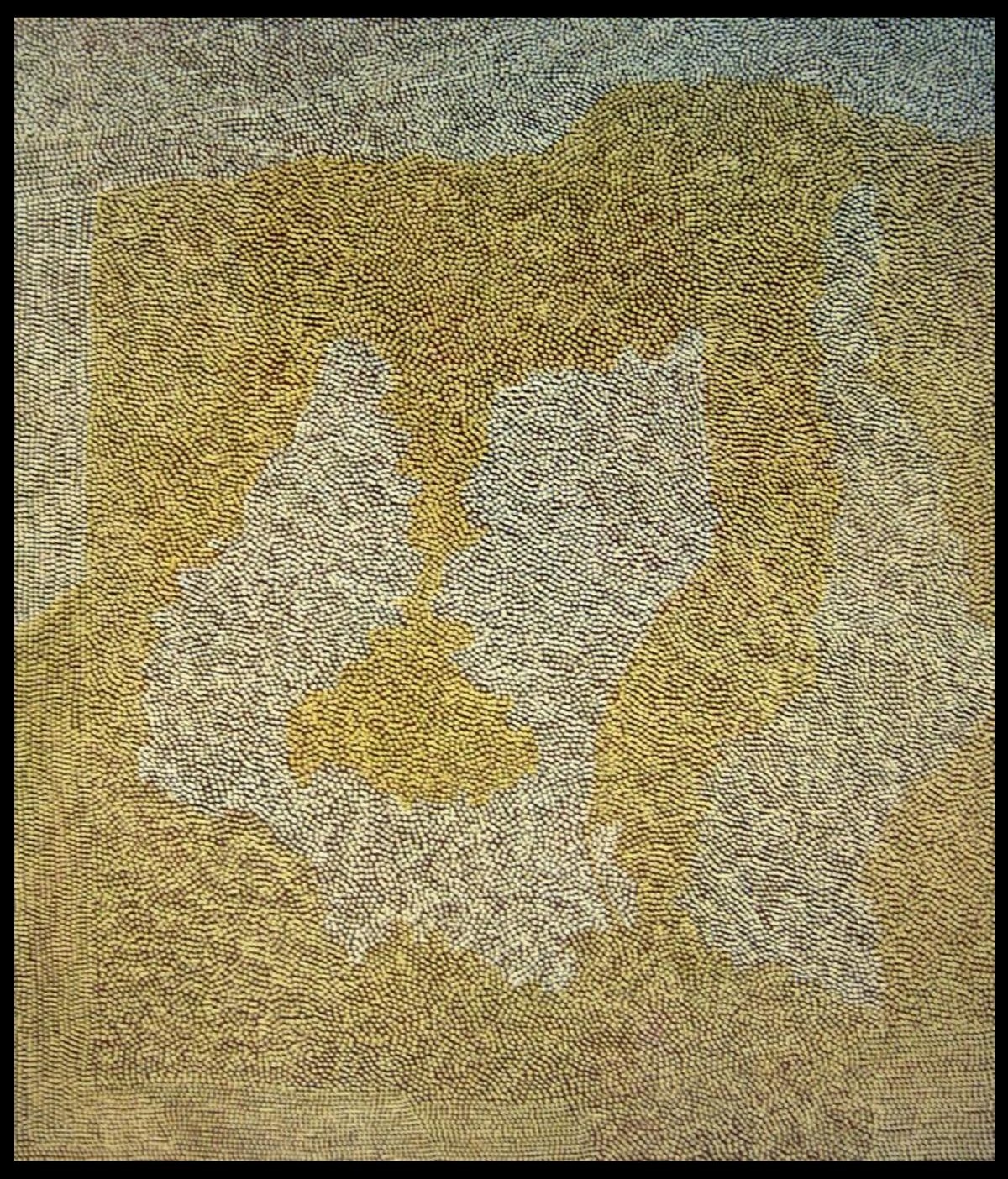
Tjunpinpa (Small Mouse Dreaming) 1998
Synthetic polymer paint on linen, bears artists name size and Papunya Tula Artists Cataloguing number MN9805104 on the reverse,
152.5 x 182.5 cm
Hammerprice: A$180,000
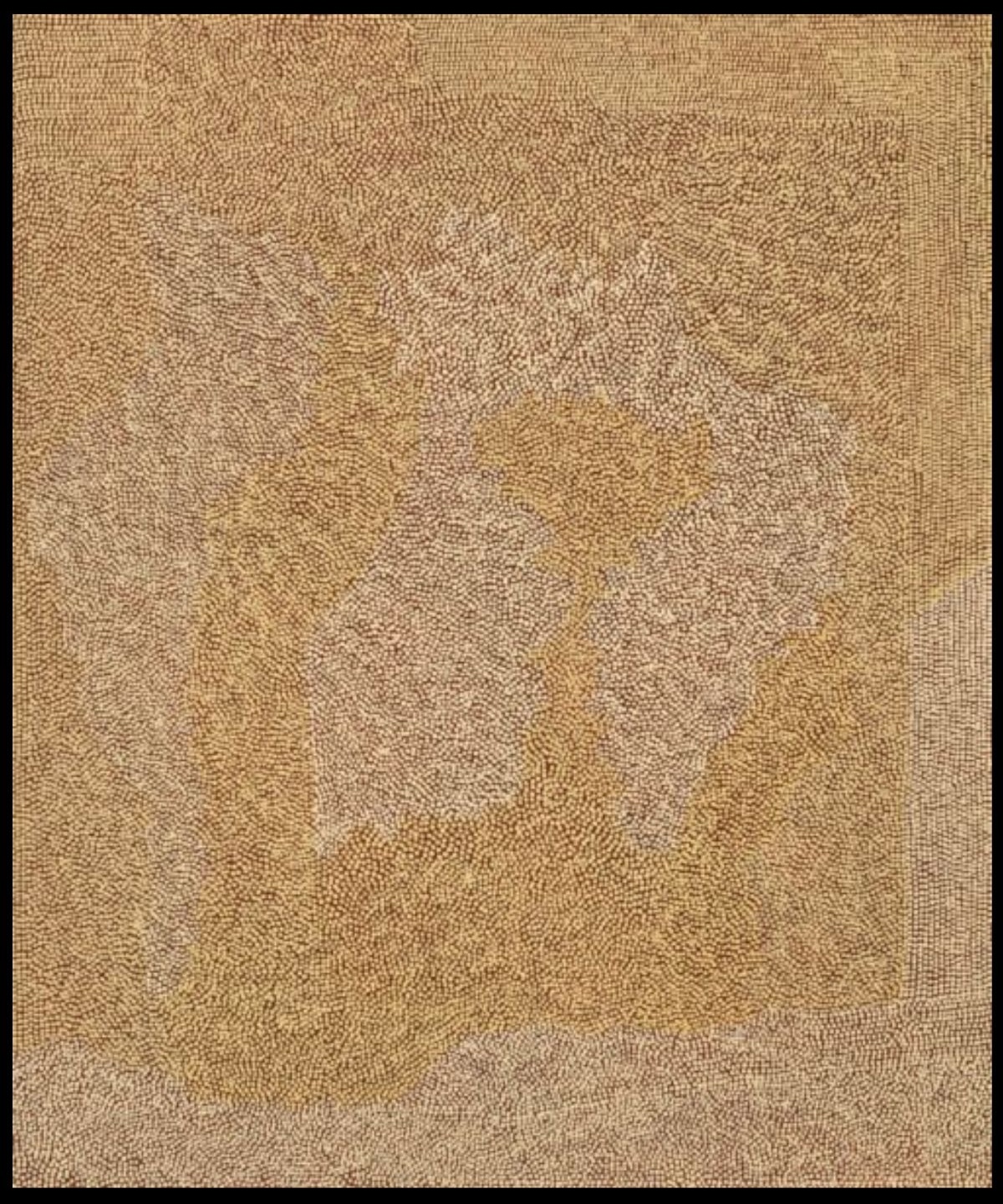
Tjunginpa (Mouse Dreaming) 1998
Synthetic polymer paint on linen, bears artist’s name, dimensions and Papunya Tula Artists catalogue number MN9805104 on the reverse,
182.5 x 152.5 cm
Hammerprice: A$120,000
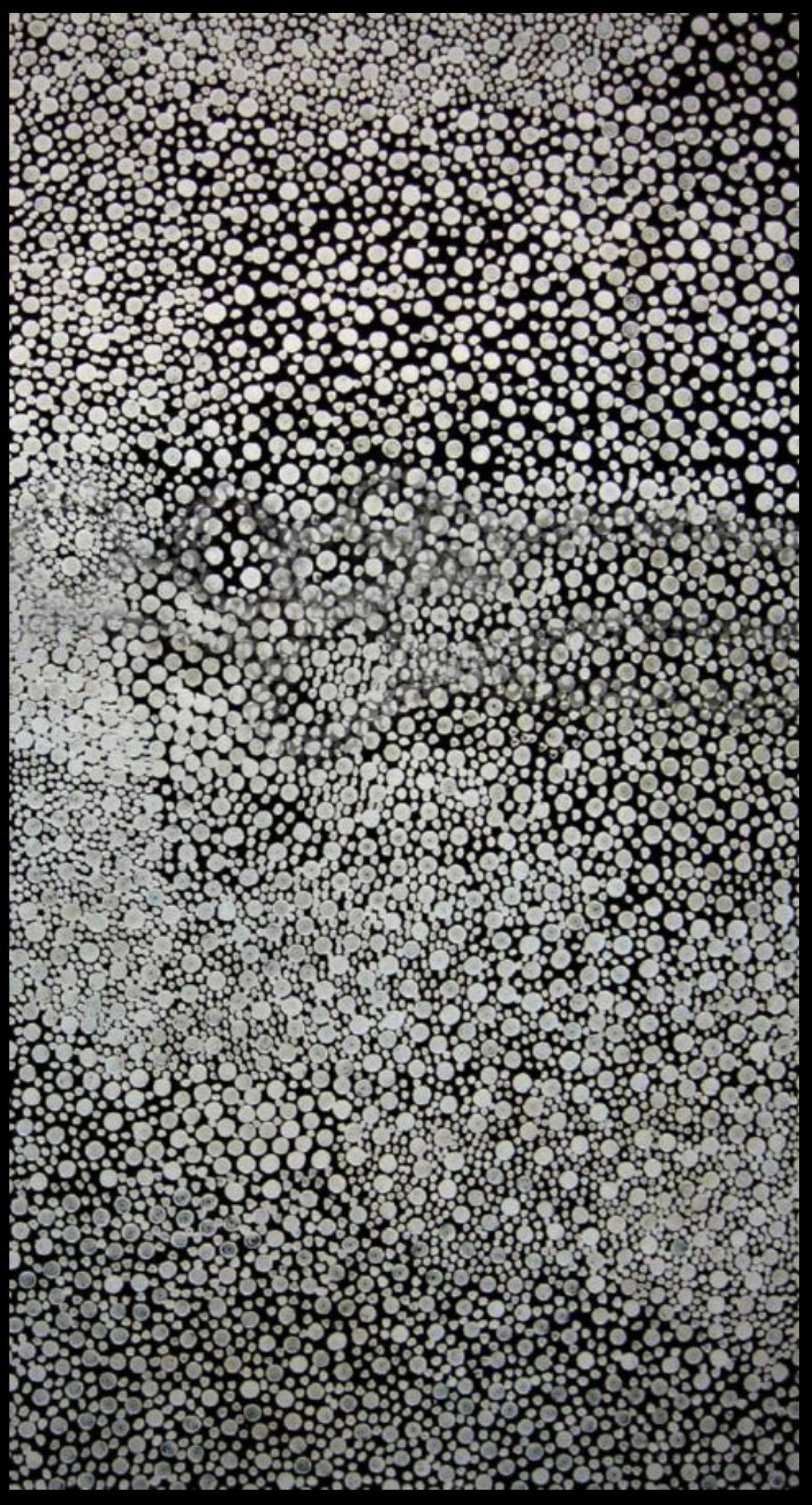
Tjunginpa (Hopping Mouse Dreaming) 1998
Synthetic polymer paint on canvas, bears artists name and title ‘Marsupial Mouse Dreaming’ size and medium on stretcher on the reverse,
190 x 364 cm
Hammerprice: A$95,000
All images in this article are for educational purposes only.
This site may contain copyrighted material the use of which was not specified by the copyright owner.
All images are the copyright of the Artists estate and the consignee of the artworks sold.
Mick Namarari Tjapaltjarri references
Other Articles that show values achieved by other Papunya artists
Charlie Tawara Tjungurrayi artworks
Selling at Auction
Selling artwork at auction can sometimes yield favorable results, particularly when multiple interested bidders compete, potentially driving up the final sale price. This environment can occasionally lead to inexperienced buyers bidding more than they originally intended, which can benefit the seller in competitive situations.
In the niche market of Aboriginal art however this is the exception with mosy potential bidders being knowledgable and well researched
Downside to Selling at Auction
Auctions come with inherent limitations. One significant drawback is that they do not achieve the full market potential of an artwork. For instance, if the most motivated buyer values a piece at $10,000 but is aware of a 30% buyer’s premium, they may only be willing to place a maximum bid of $7,000. Meanwhile, the second most motivated buyer who values the work at $6,000 may only bid up to $4,200. As a result, bidding would likely stop at $4,200, and the winning bid might be only one bid higher, say $4,300. After deducting seller’s fees (10%-29%), the final amount received by the seller will be less than $3,900—far below the artwork’s perceived value.
Another risk associated with auctions is limited reach. Potential buyers who may have been willing to pay significantly more might simply not be aware of the auction, not have the money at the time or unable to participate at the scheduled time. This can result in missed opportunities and lower-than-expected sale outcomes.
This dynamic explains why many art dealers are able to purchase artworks at auction and resell them privately at a profit. Their ability to match artworks with motivated collectors, often through targeted private outreach, allows them to capitalize on the limitations of the auction model.
Private Treaty Sales
An alternative to auction is selling through private treaty. This method involves engaging a dealer to offer the artwork directly to known collectors who collect or have a strong interest in a particular artist or genre. The sale is conducted at price agreed buy the dealer and seller, allowing for a more targeted and lucrative transaction.
One key advantage of private treaty sales is flexibility. If the dealer is unable to secure a buyer through private channels, the artwork can still be offered at auction later. This approach often ensures better control over the sales process and often result in a more favorable outcome for the seller, especially when maximizing value is the priority.
I specialise in private treaty sales and if you have a Mick Namarari Tjapaltjarri artwork and you would like to know what I think it could be sold for, please send me an image dimensions and provenance.
